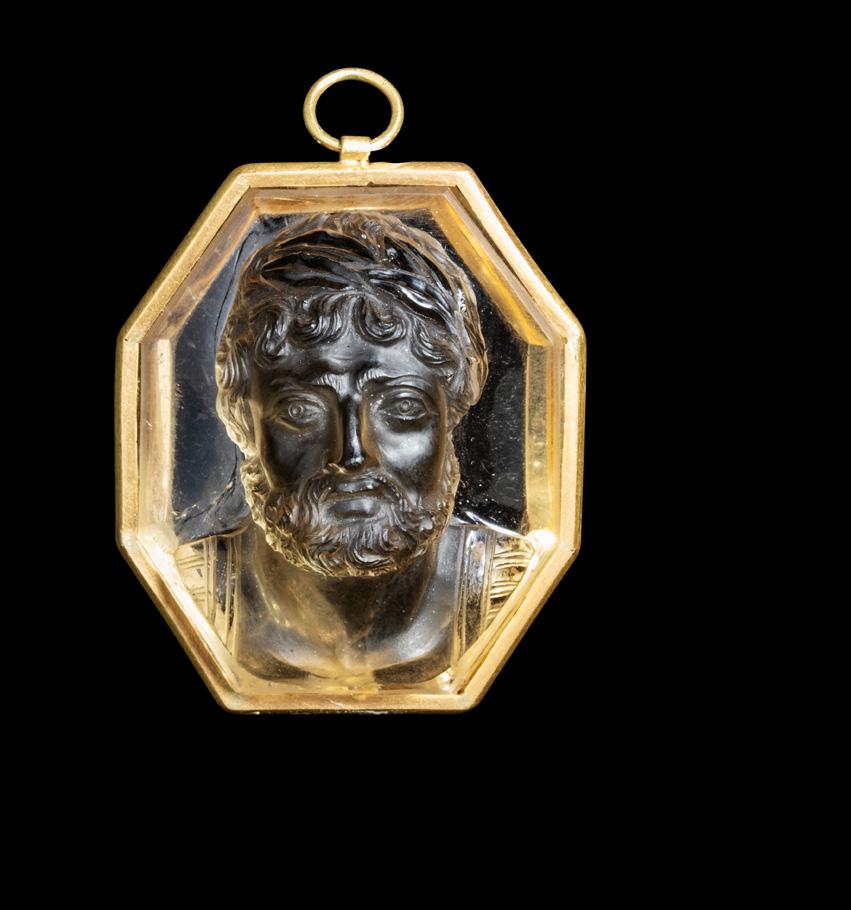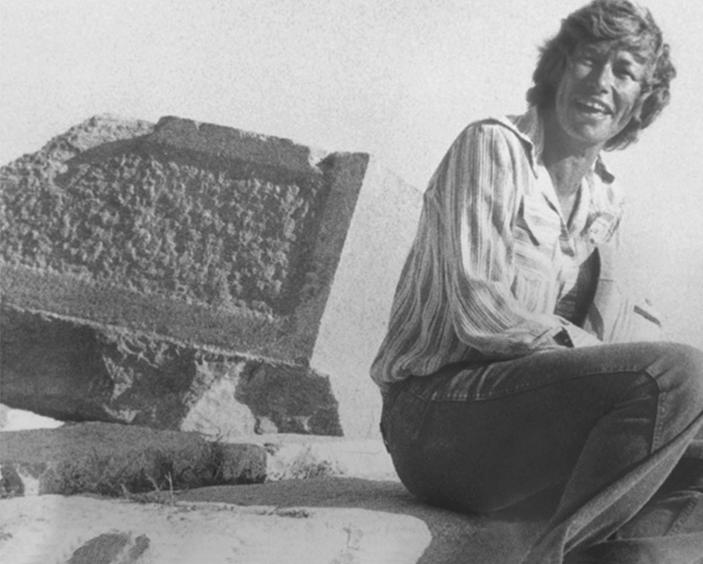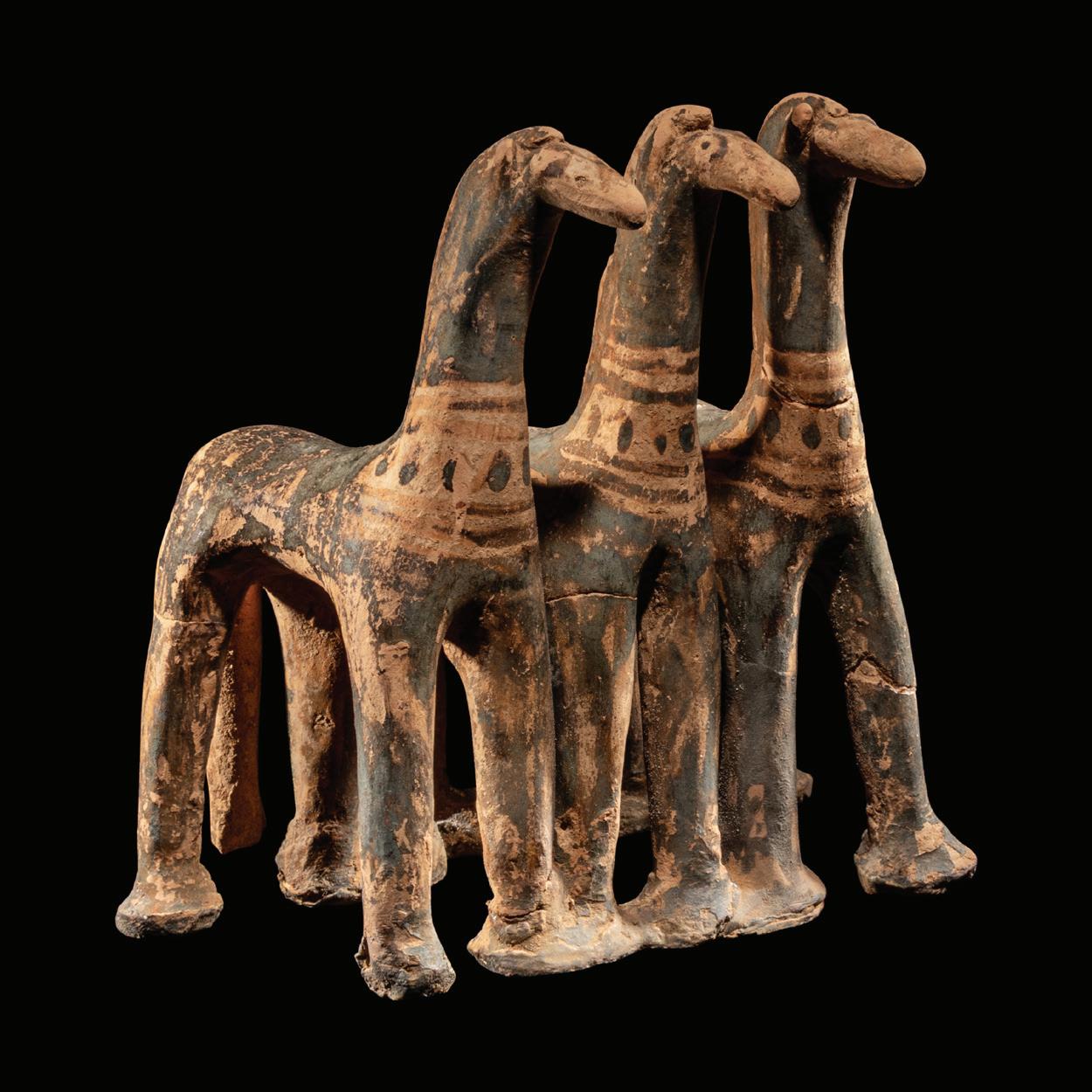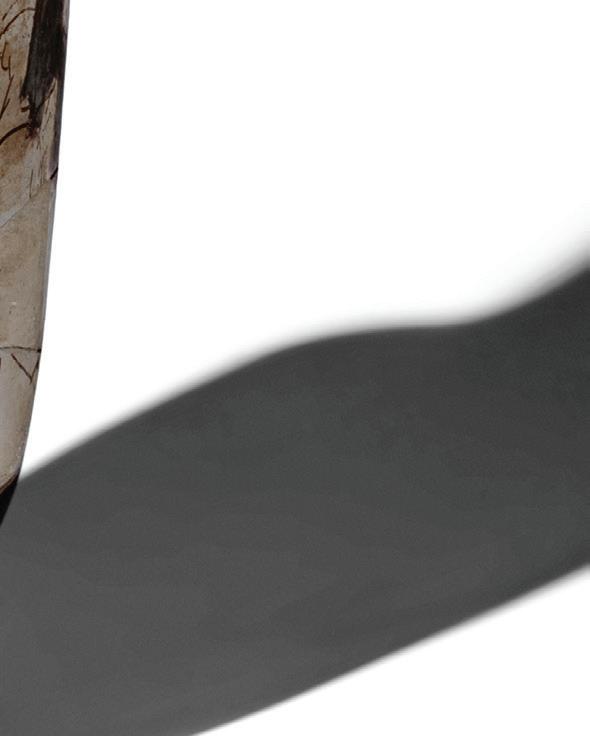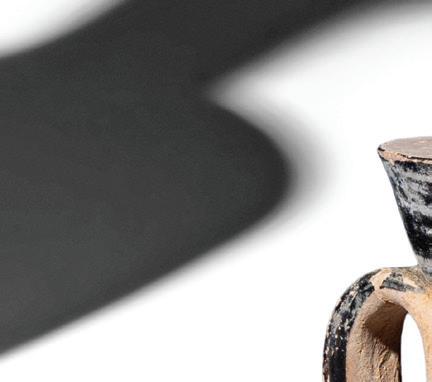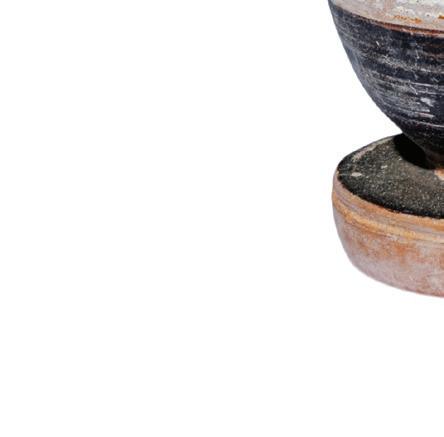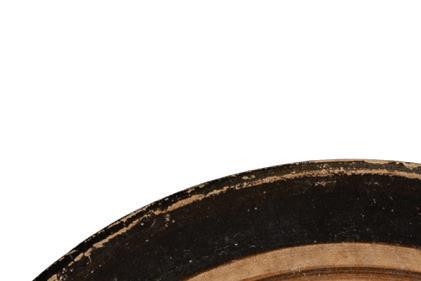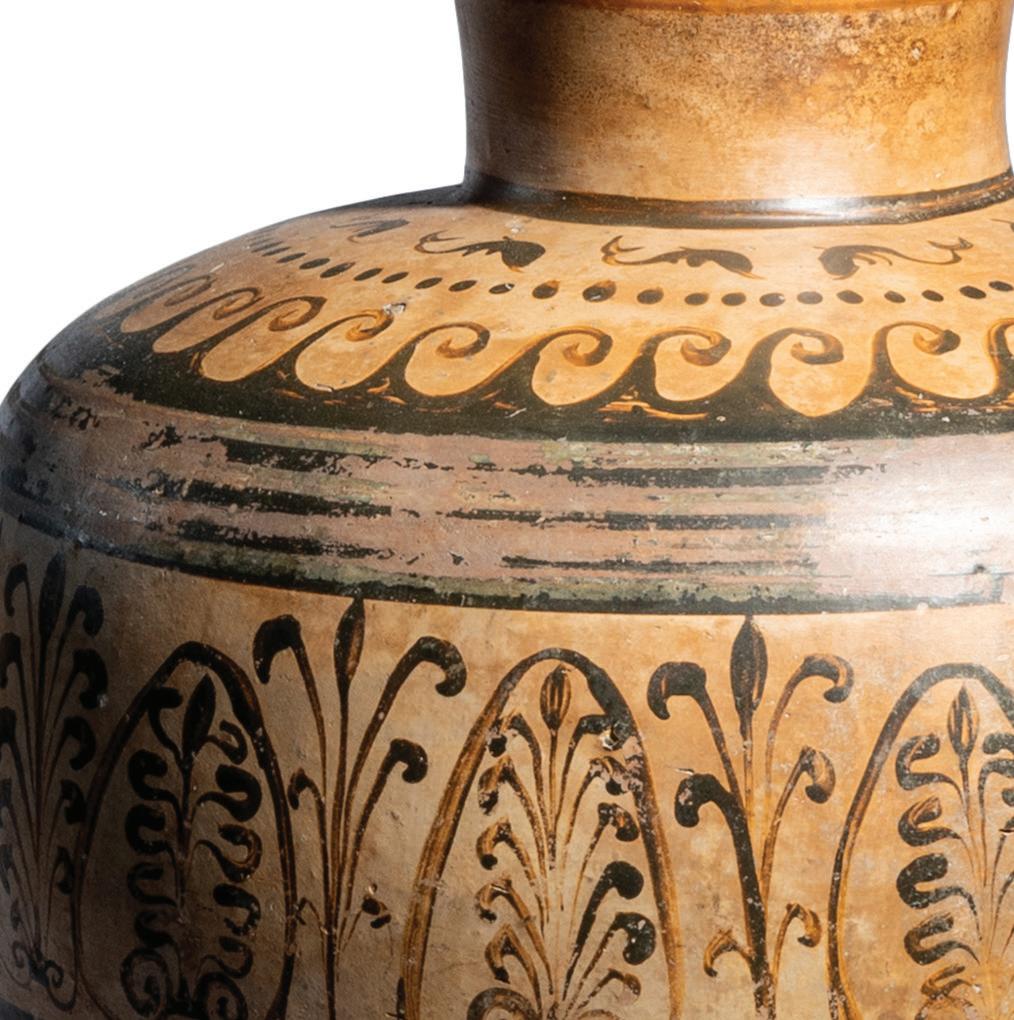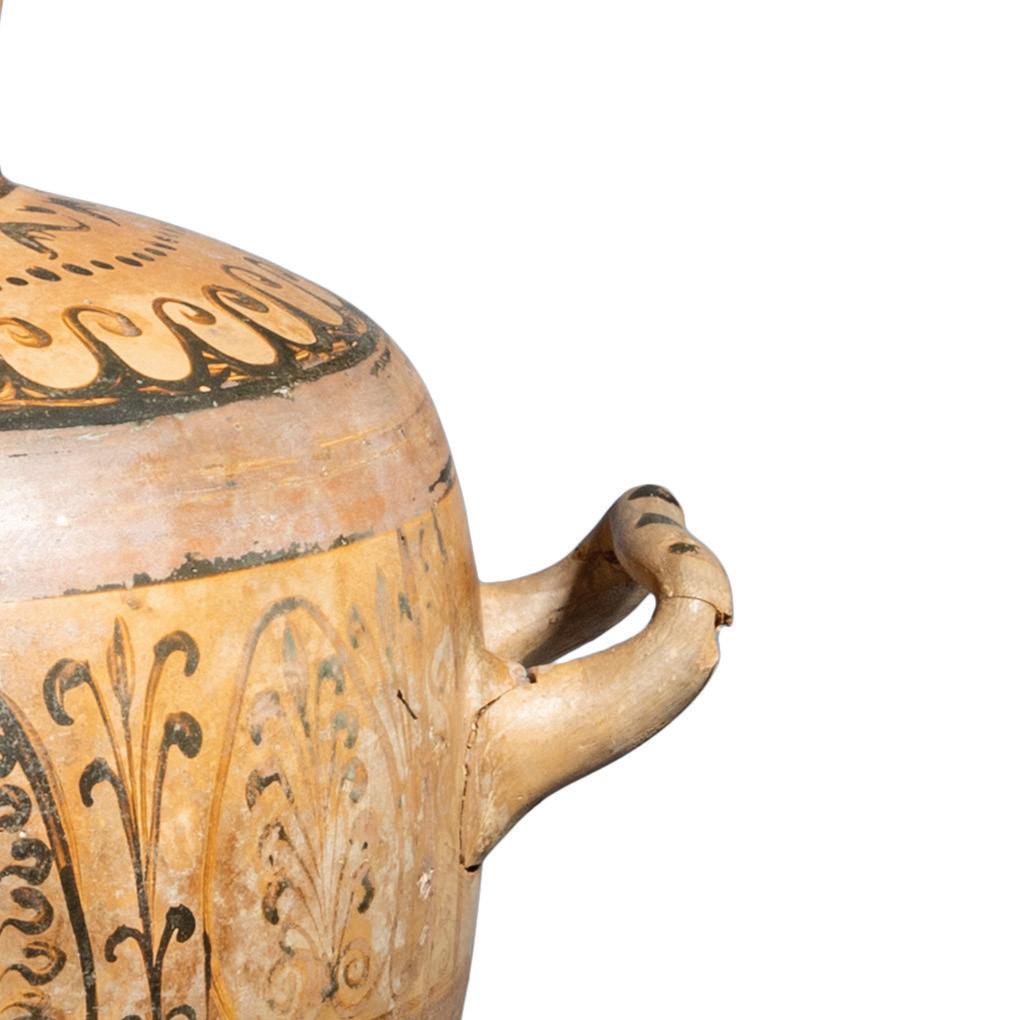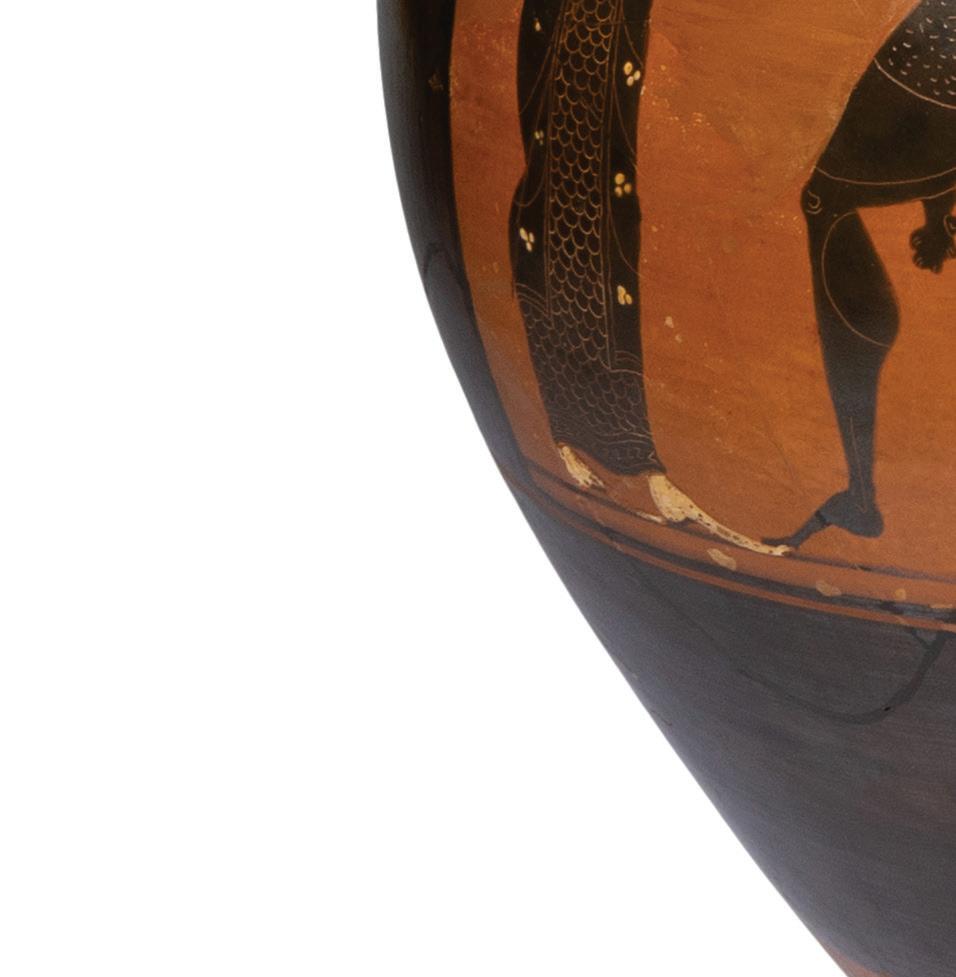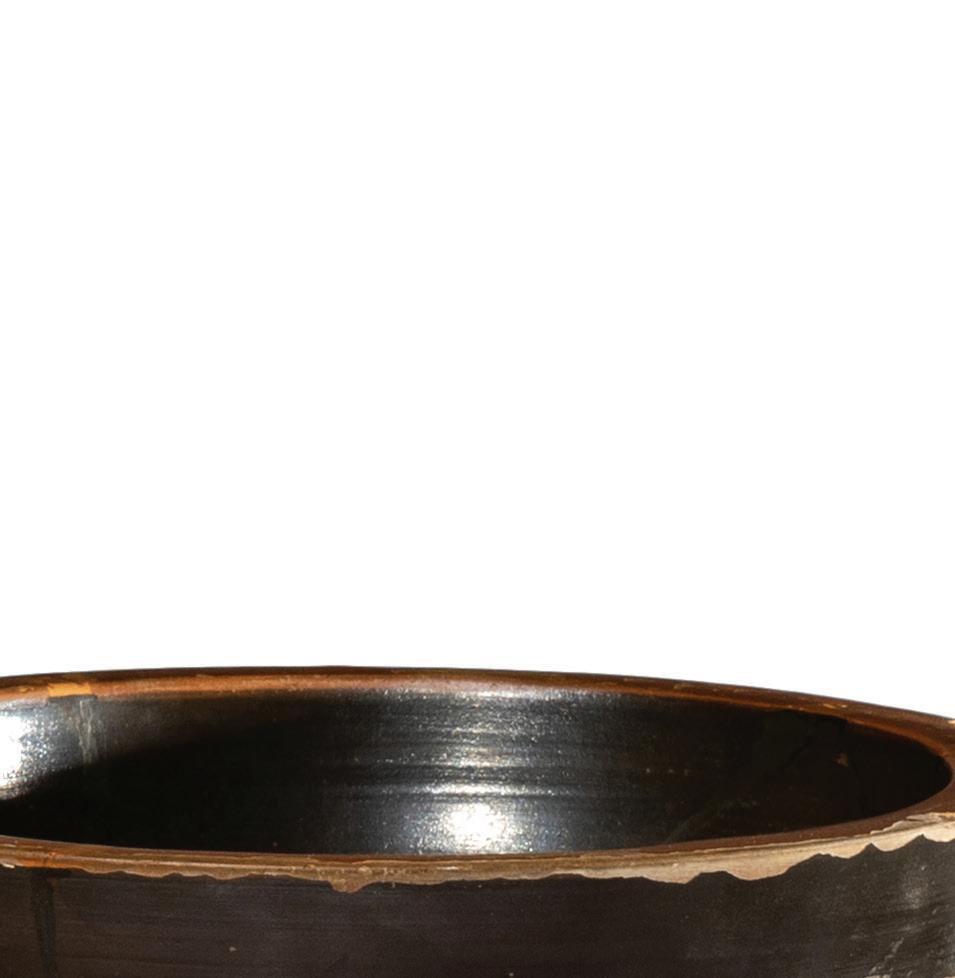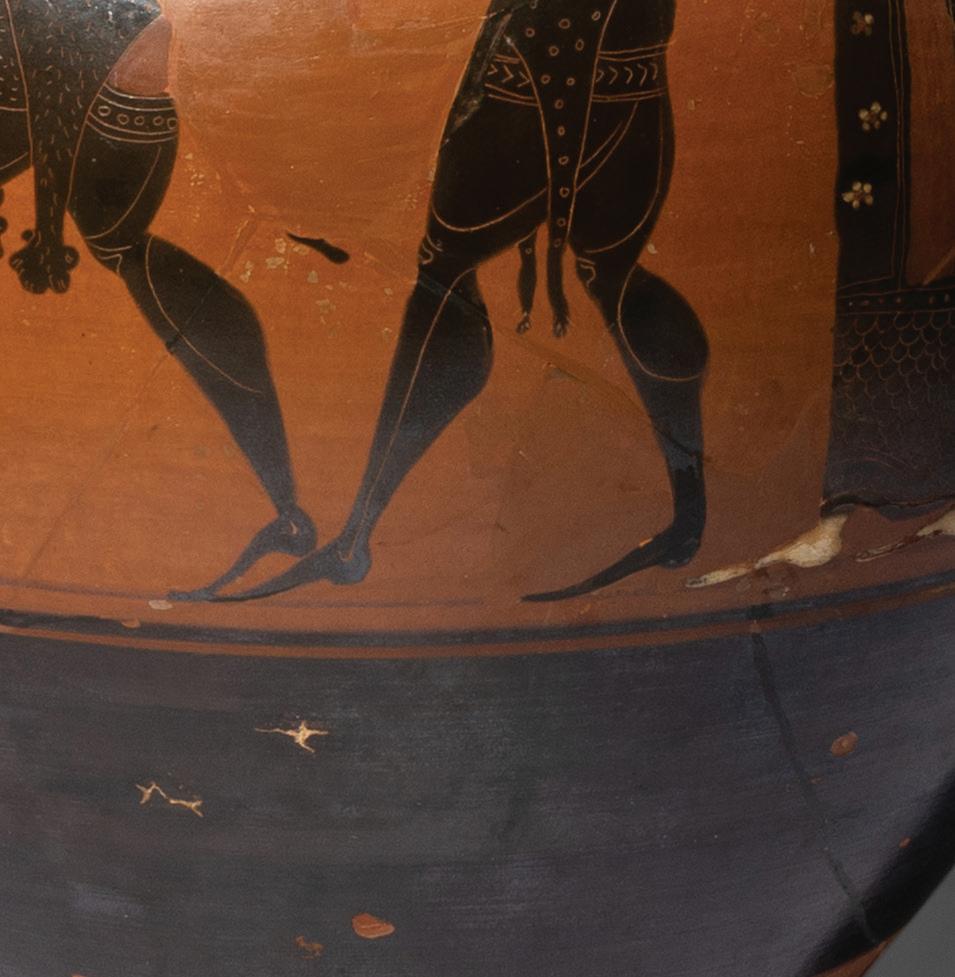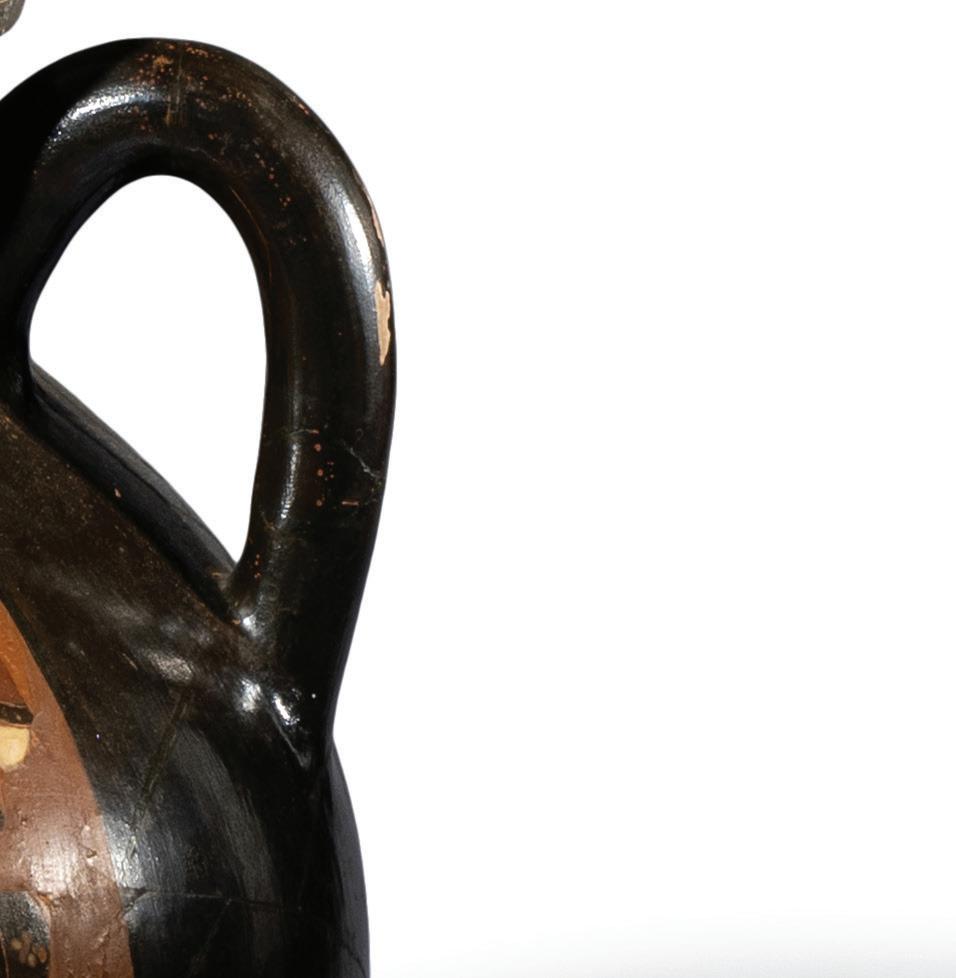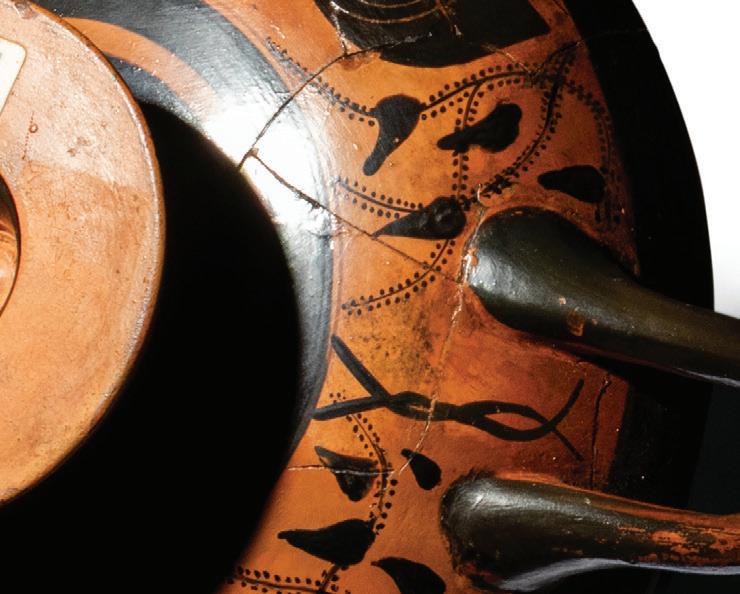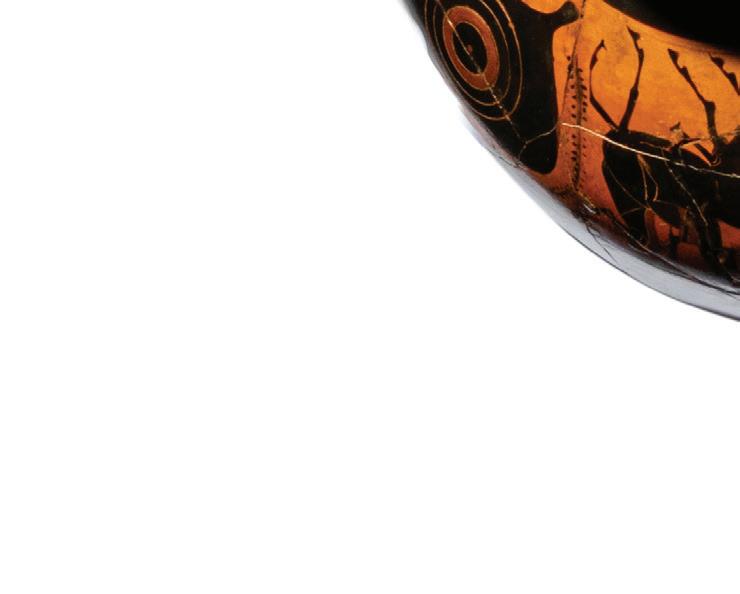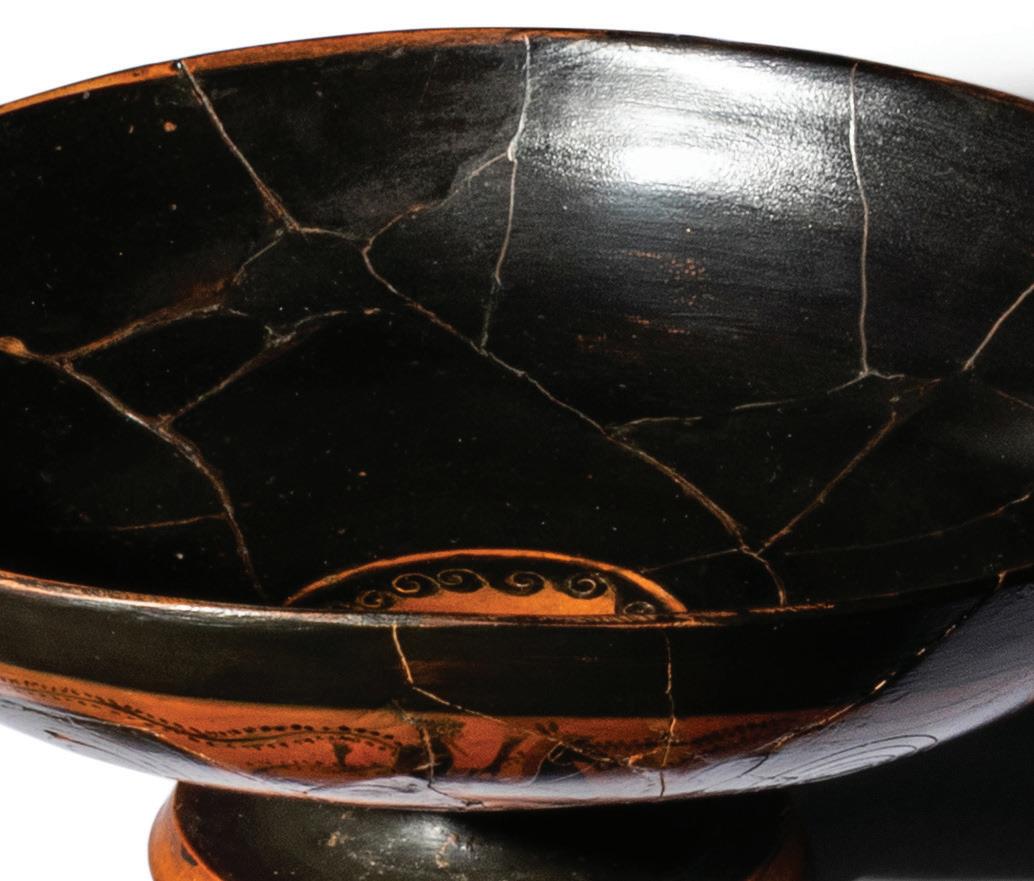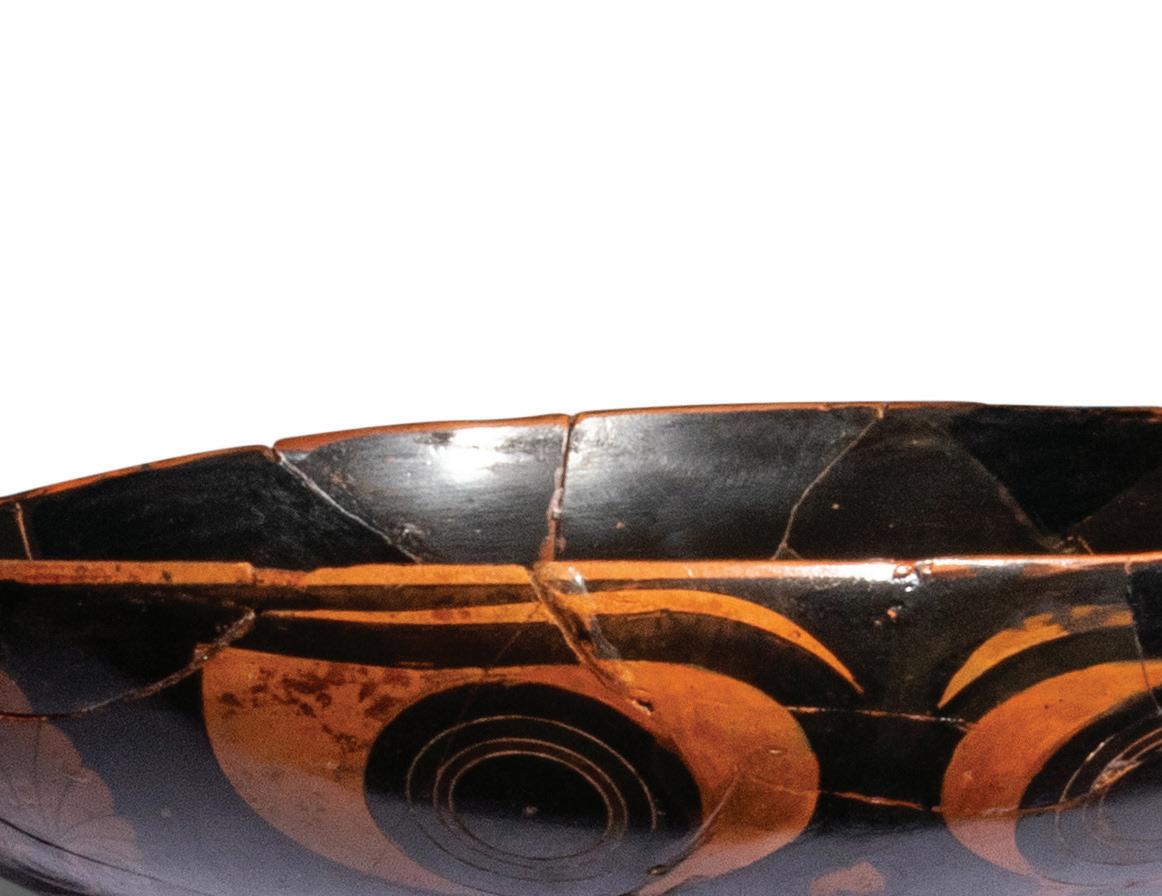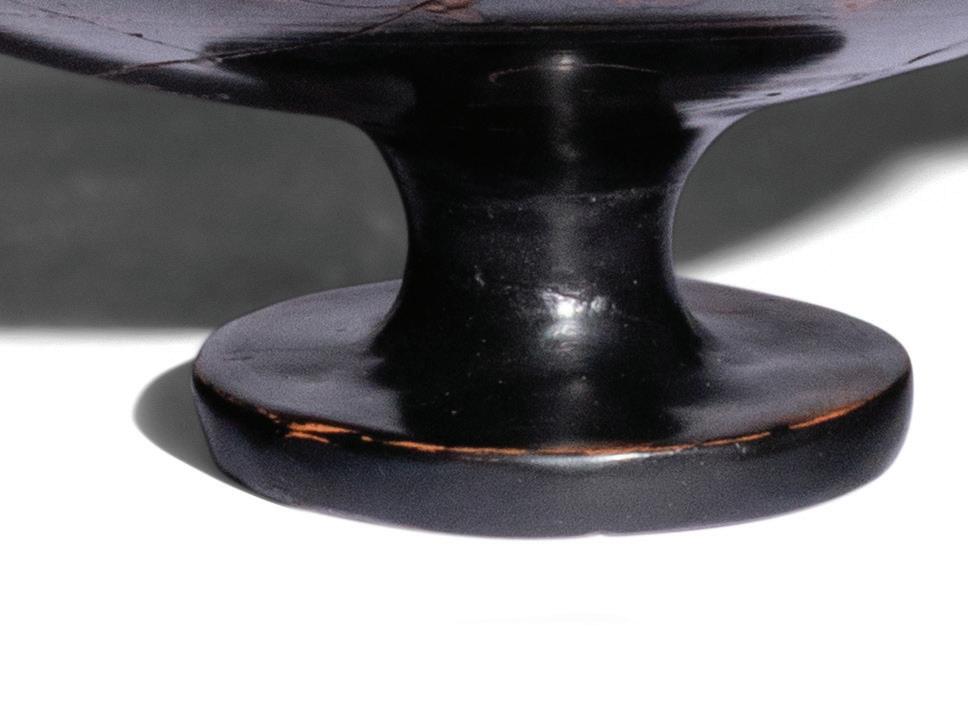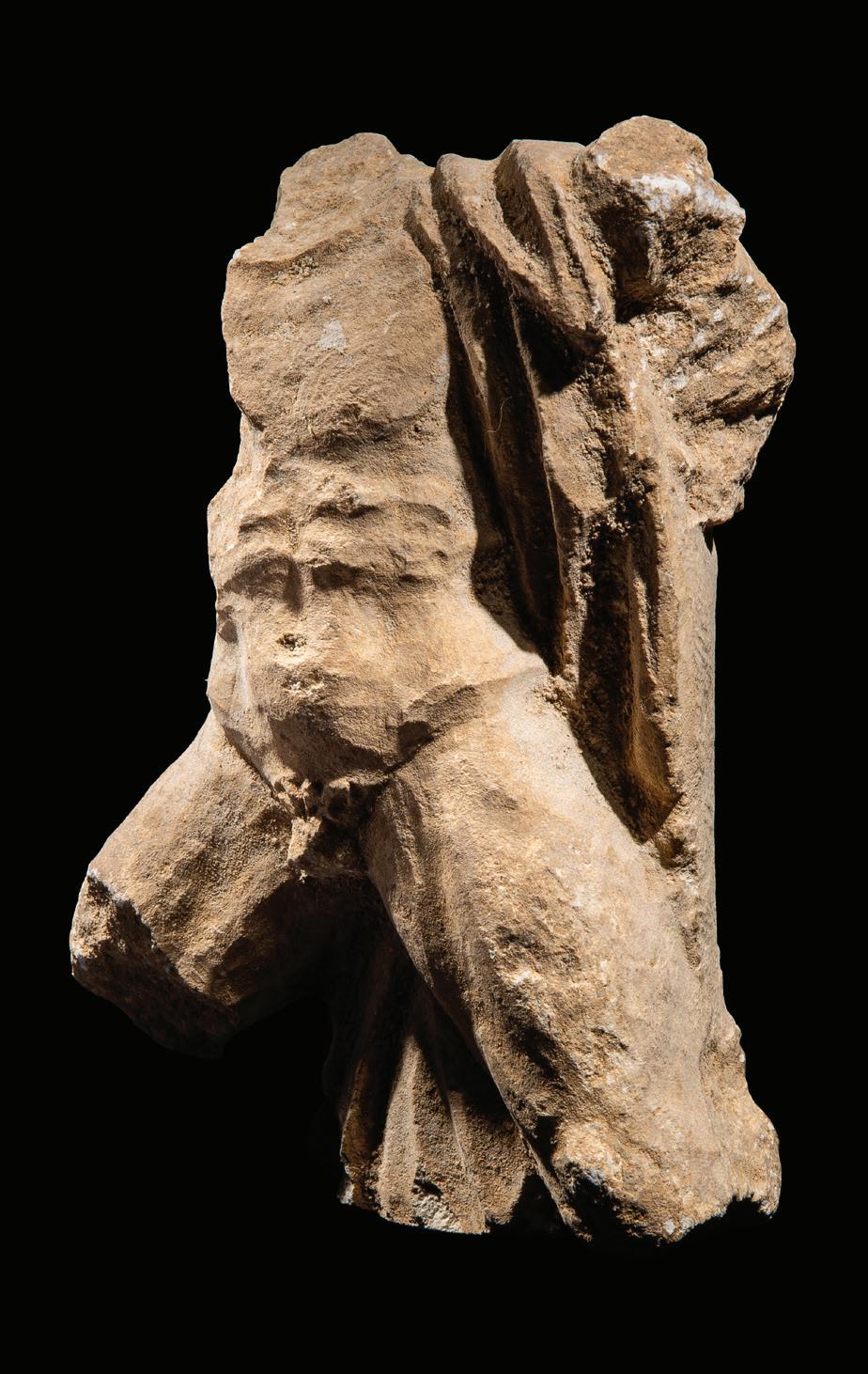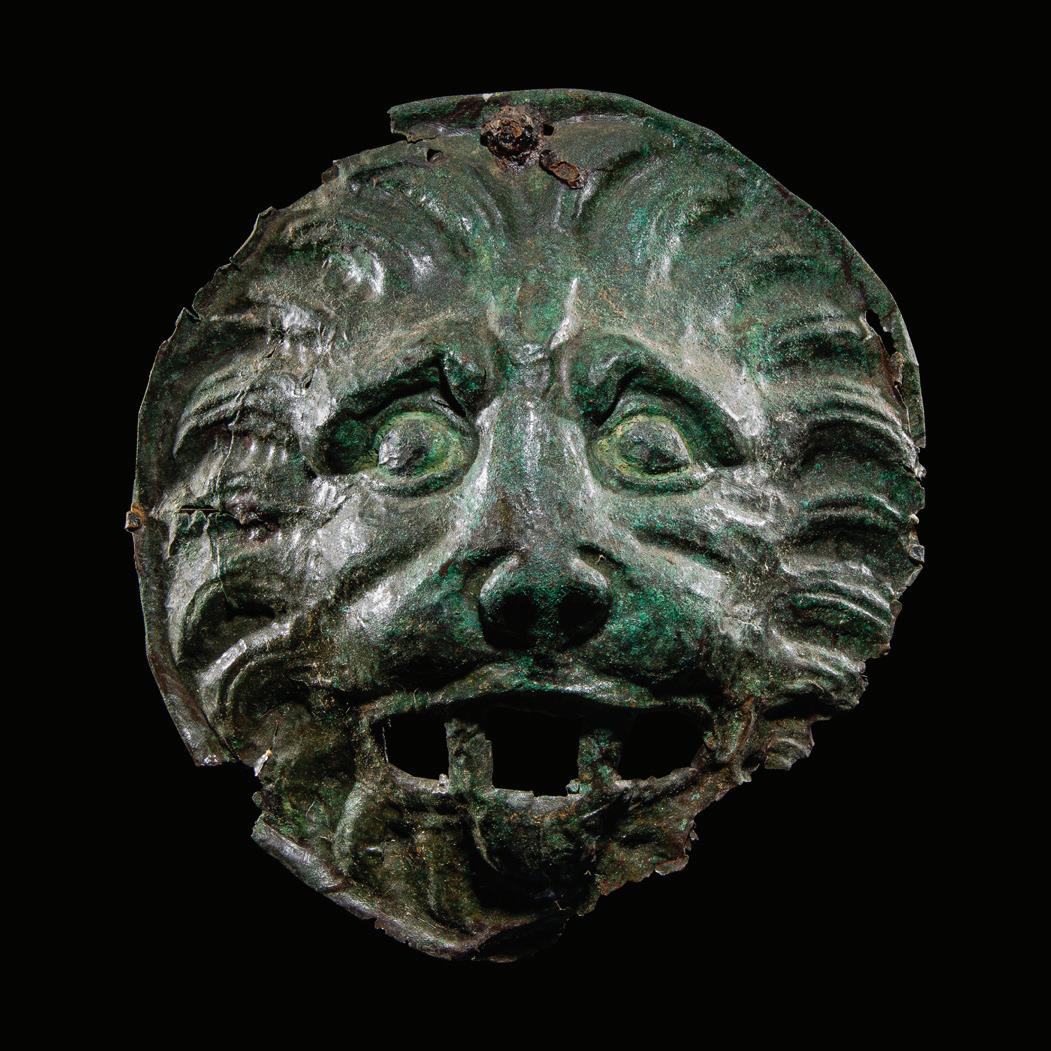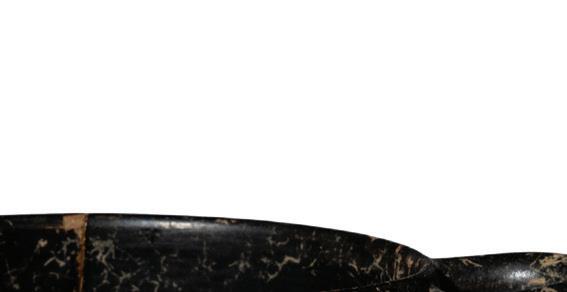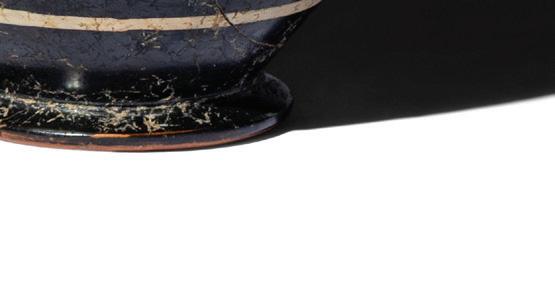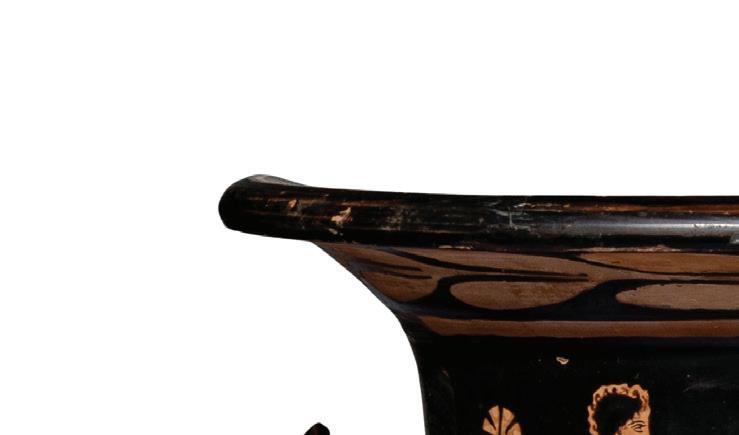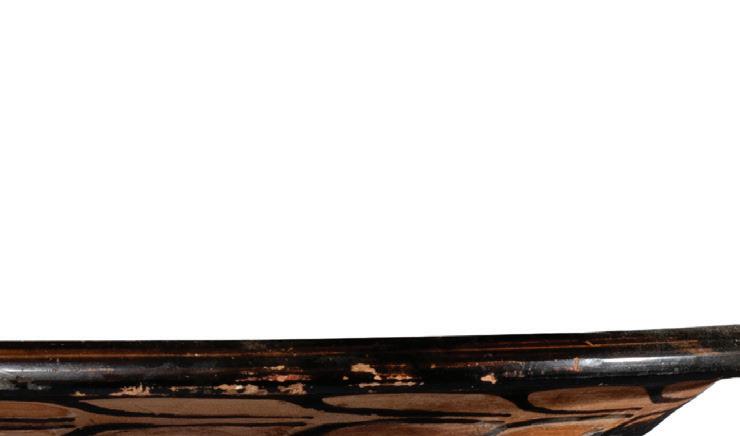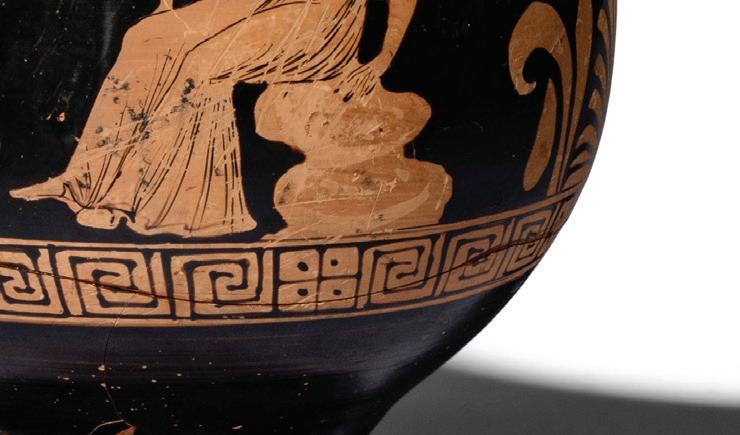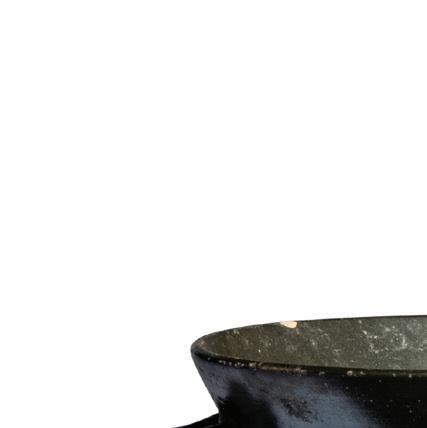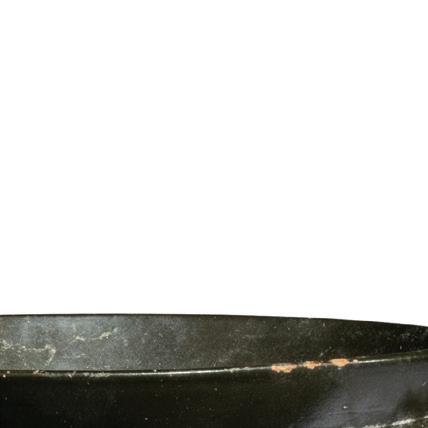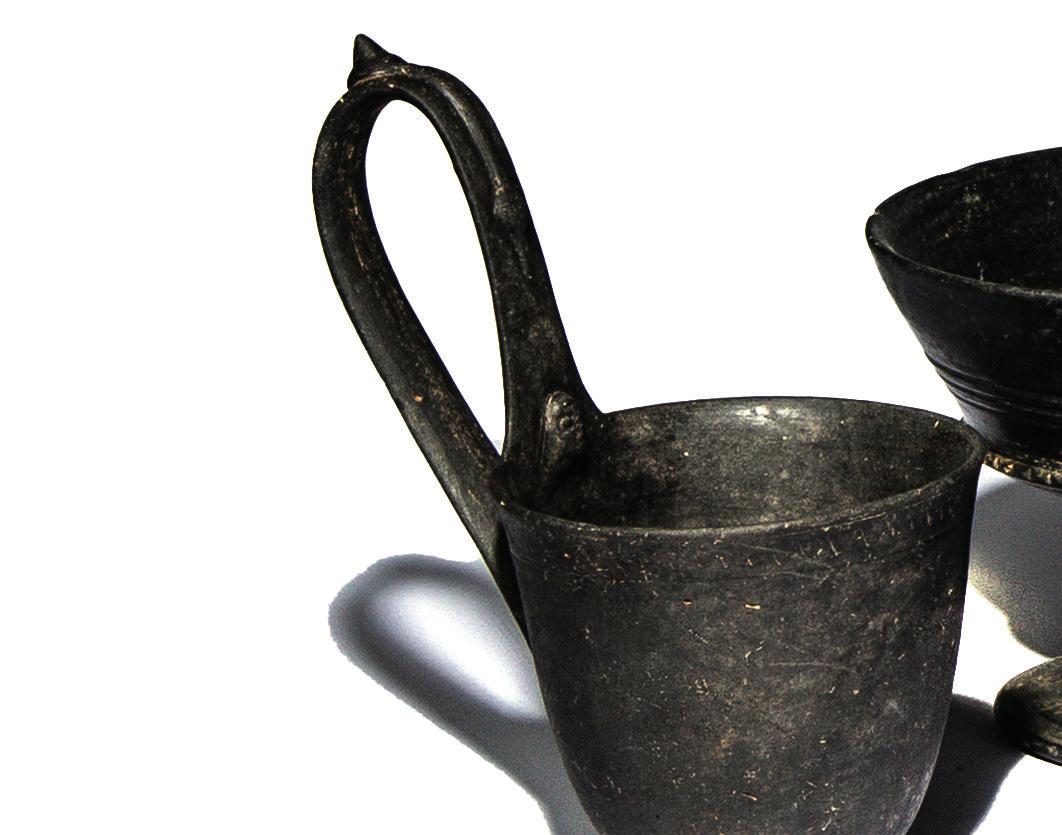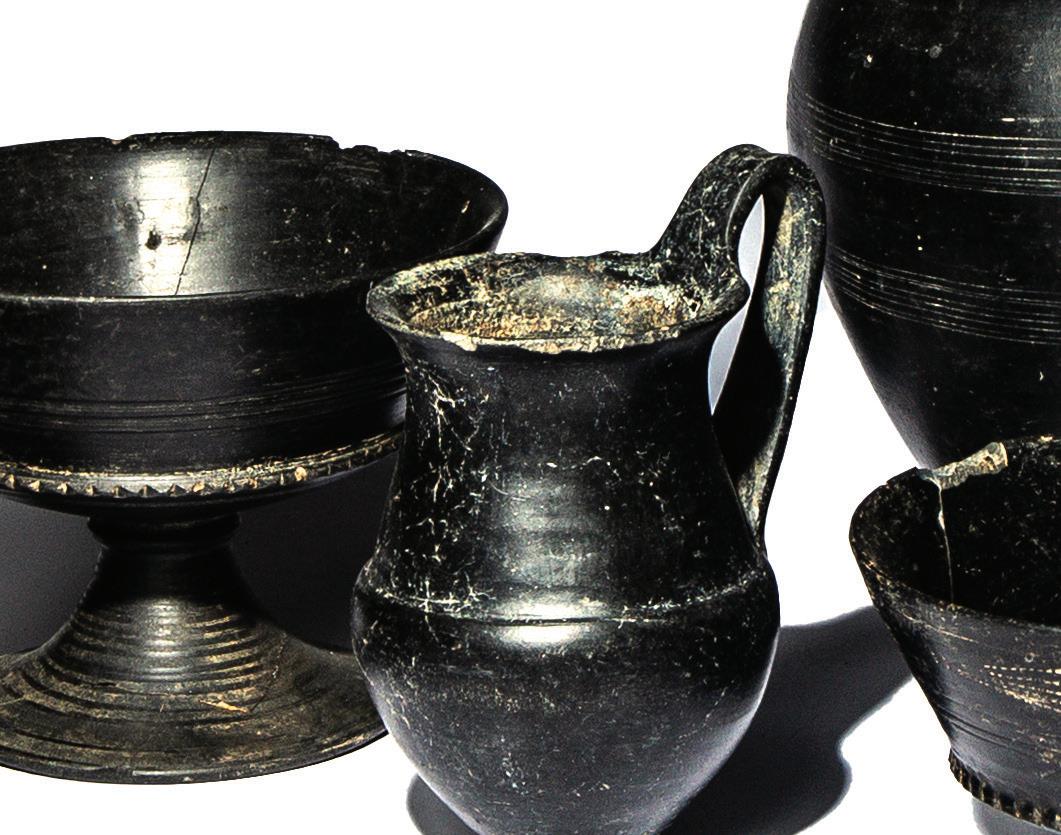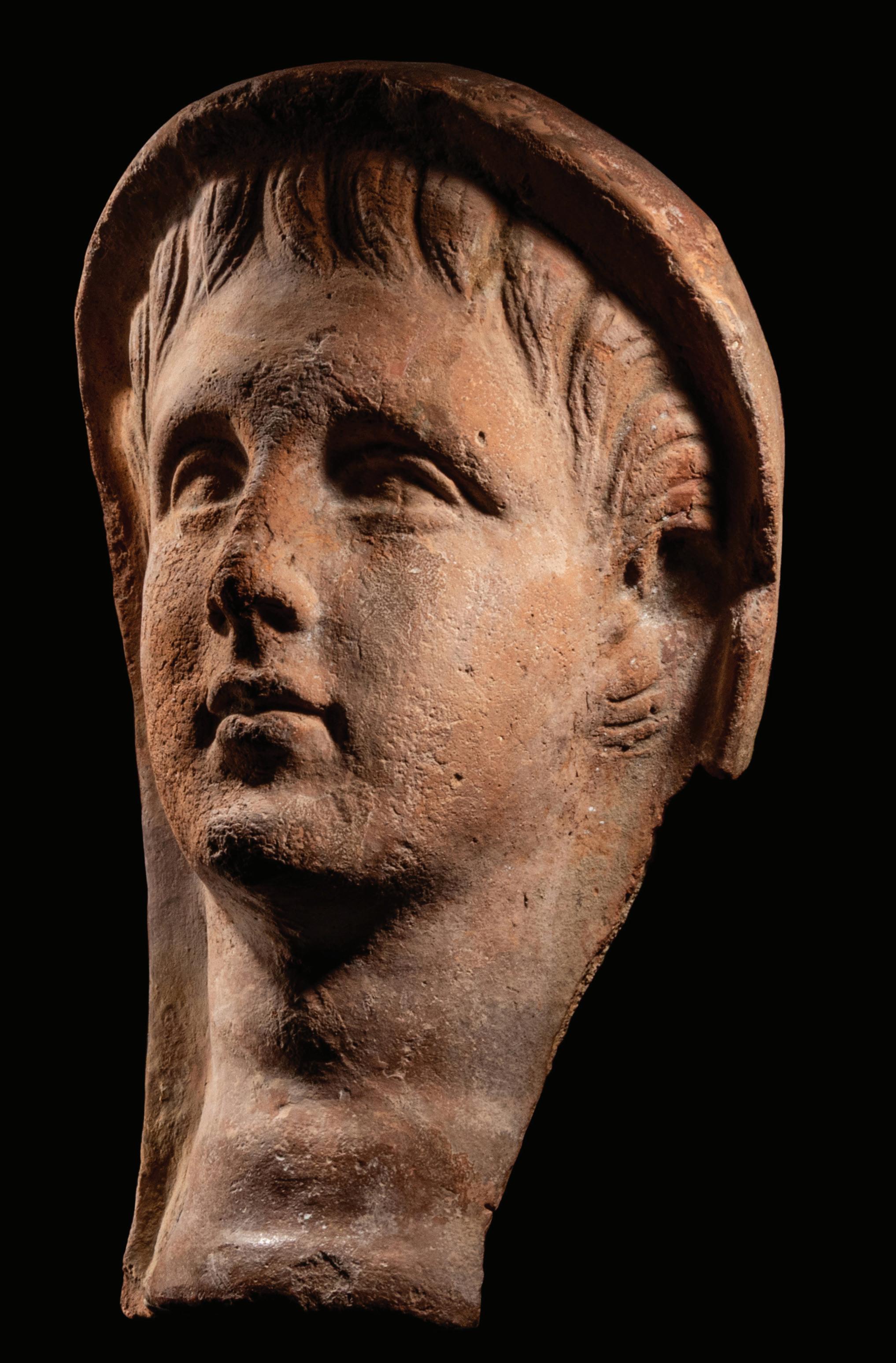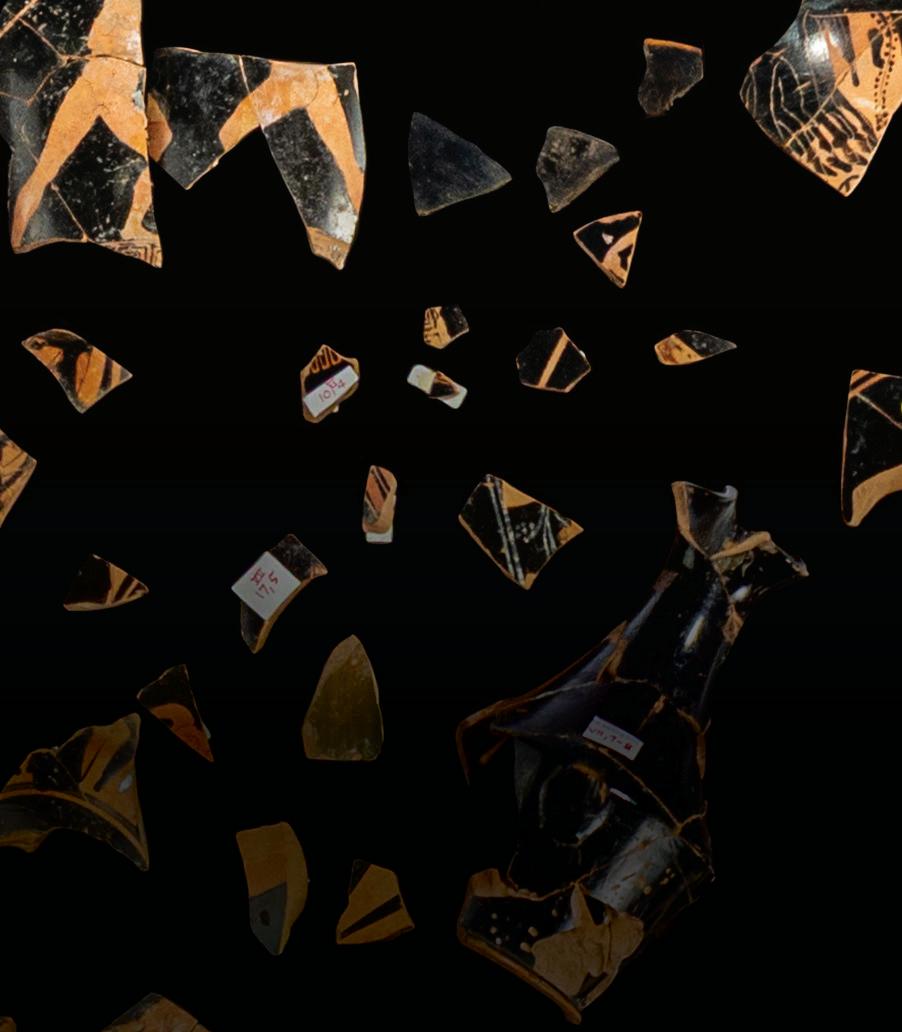
ANTIQUITIES AND ANCIENT ART: INCLUDING PROPERTY FROM THE ESTATES OF ANDREW C. WARE AND IRIS C. LOVE
NOVEMBER 19, 2025 | CHICAGO


ANTIQUITIES AND ANCIENT ART: INCLUDING PROPERTY FROM THE ESTATES OF ANDREW C. WARE AND IRIS C. LOVE
Sale 6428
Day 1 | November 19, 2025 | Chicago | Lots 1-219 10:00am CT | Live Sale 6402
Day 2 | November 20, 2025 | Timed Online
PREVIEW BY APPOINTMENT
222 North Maplewood, Chicago, IL antiquities@freemansauction.com
PROPERTY PICK UP HOURS
Monday–Friday | 9:00am–4:00pm By appointment 312.280.1212
All property must be paid for within seven days and picked up within thirty days per our Conditions of Sale.
All lots in this catalogue with a lower estimate value of $5,000 and above are searched against the Art Loss Register database
To view the complete catalogue, sign up to bid, and read our Conditions of Sale, visit hindmanauctions.com or the Hindman App. All bidders must agree to Hindman’s Conditions of Sale prior to registering to bid. For bid support contact: 312.280.1212 or bid@hindmanauctions.com.

ANDREW C. WARE
1945-2024
LOTS 1-28
Andrew Cunningham Ware (1945–2024) was an avid scholar and amateur Egyptologist whose passion for the ancient world led him to study under the renowned French Egyptologist, Christiane Desroches Noblecourt. Splitting his time between France and South Florida, Ware assembled a diverse collection that reflected his wide-ranging intellectual interests, from ancient Egyptian artifacts to historical documents from the French and Russian Revolutions. His collection, rich with family heirlooms, also features pieces acquired through his travels and academic pursuits. Ware’s family background also adds depth to the collection. He was the great-grandson of Andrew Woodbury Preston, one of the founders of the United Fruit Company. This connection to the world of business subtly informs the collection, where objects of personal significance are intertwined with intellectual curiosity.
1
An Egyptian Steatite Base of a Commemorative Scarab of Amenhotep III
New Kingdom, 18th Dynasty, Reign of Amenhotep III, 1380 B.C.
Height 6.7 cm (2 5/8 inches).
Property from the Estate of Andrew Cunningham Ware (1945-2024)
Provenance:
A. Groppi, Cario, Egypt; thence by descent to his nephew, A. Bianchi. Private Collection, Lucerne, Switzerland. Christie’s, London. The ‘Per-neb’ Collection (Part I): Highly Important Egyptian Antiquities, 9 December 1992, Lot 76.
Published:
E. Drioton, Notes Diverses, extrait des Annales du Service des Antiquités de l’Egypte, Cairo, 1945, pp. 37-40; C.
C. Blankenberg-van Delden, The Large Commemorative Scarabs of Amenhotep III, Leiden, 1969, p. 144, pl. XXXI (E9).
Reputedly found in Memphis, this important “lake scarab” records the building of a pleasure lake for Queen Tiy at Djaroukha. A full translation is available upon request.
$3,000 - 5,000
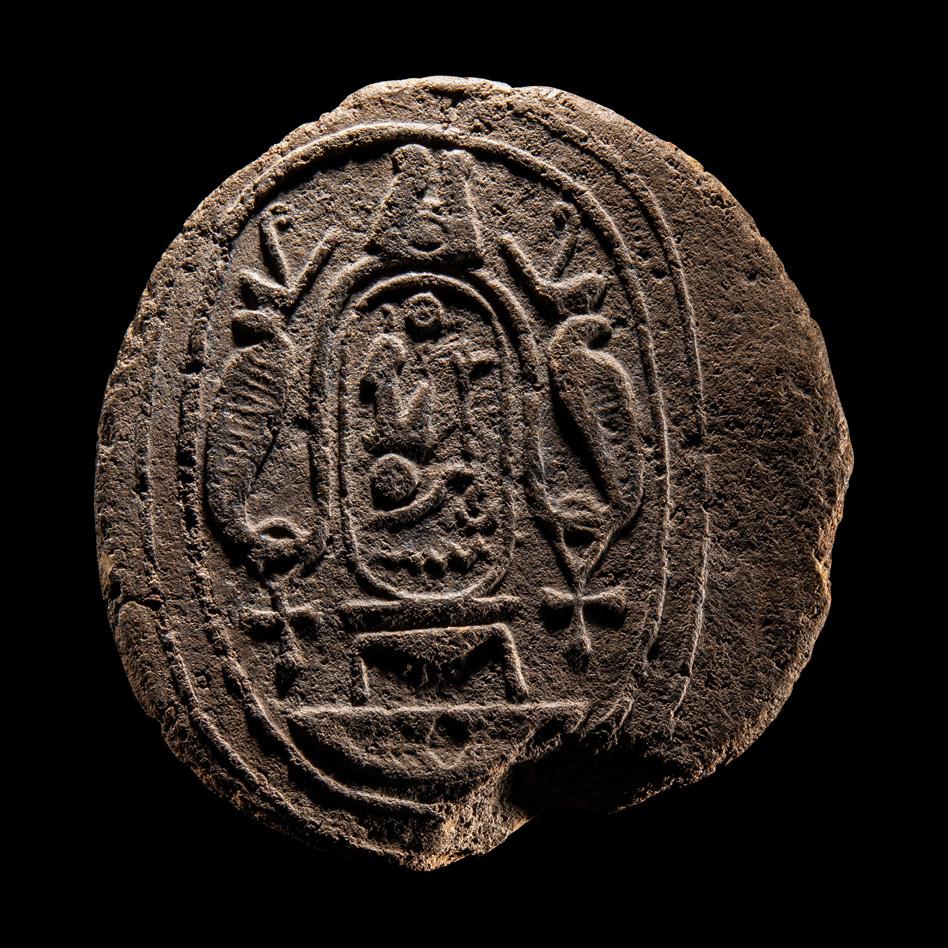

2
An Egyptian Terracotta Seal for Rameses II New Kingdom, 19th Dynasty, Reign of Rameses II, 1290-1224 B.C. Length 10.8 cm (4 1/4 inches).
Property from the Estate of Andrew Cunningham Ware (1945-2024)
Provenance: Charles Lormier (1825-1900), Rouen, France.
Hôtel Drouot, Paris, Vente Lormier, 10-12 December 1900. [based on old collection label]
$1,000 - 2,000

3
Three Egyptian Alabaster Vessels with Hieroglyphs New Kingdom, 18th Dynasty, Reign of Thutmose III, 1497-1425 B.C. Height of tallest 12.5 cm (5 inches).
Property from the Estate of Andrew Cunningham Ware (1945-2024)
Provenance: Pierre Berge, Paris, Archeologie, Arts d’Orient, Extreme-Orient, 27 April 2007, Lot 496. [Part]
Engraved column of hieroglyphs that reads “the perfect god, Menkheperre, beloved by Min, Lord of Coptos”.
$2,000 - 3,000


4
An Egyptian Limestone Stele Fragment with Hathor New Kingdom, 18th-20th Dynasty, 1550-1070 B.C.
Height 8 cm (3 1/8 inches).
Property from the Estate of Andrew Cunningham Ware (1945-2024)
Provenance:
Private Collection.
Private Collection, New York, acquired from the above in the 1990s. Charles Ede, London, 2018 (Christmas 2018, pp. 14-15, no. 25); where acquired by the present owner, 11 January 2019. [Inv. no. 9914]
$1,000 - 2,000

5
An Egyptian Painted Limestone Relief Fragment with the Head of an Ibis
New Kingdom, 18th-20th Dynasty, 1550-1070 B.C.
Height 12.5 cm (5 inches).
Provenance: Andrew Cunningham Ware Collection (1945–2024), South Florida, primarily formed in the 1990s-2000s.
$1,200 - 1,800


6
An Egyptian Painted Limestone Relief Fragment
New Kingdom, 18th-20th Dynasty, 1550-1070 B.C.
Height 15.2 cm (6 inches).
Provenance: Andrew Cunningham Ware Collection (1945–2024), South Florida, primarily formed in the 1990s-2000s.
$2,000 - 3,000
7 An Egyptian Painted Limestone Relief Fragment
Late Period, 26th-30th Dynasty, 664-343 B.C.
Height 13 cm (5 1/8 inches).
Provenance: Andrew Cunningham Ware Collection (1945–2024), South Florida, primarily formed in the 1990s-2000s.
$1,200 - 1,800

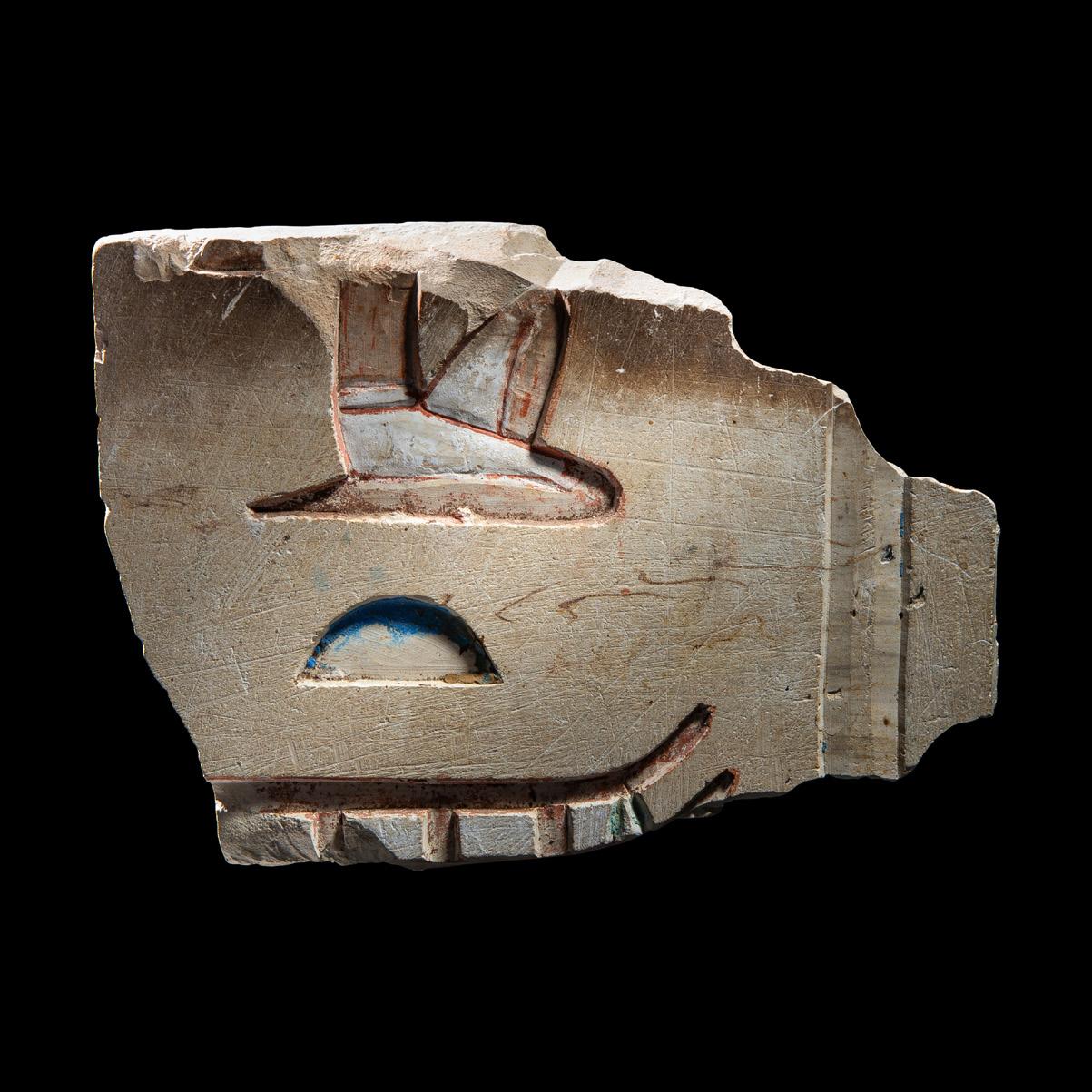
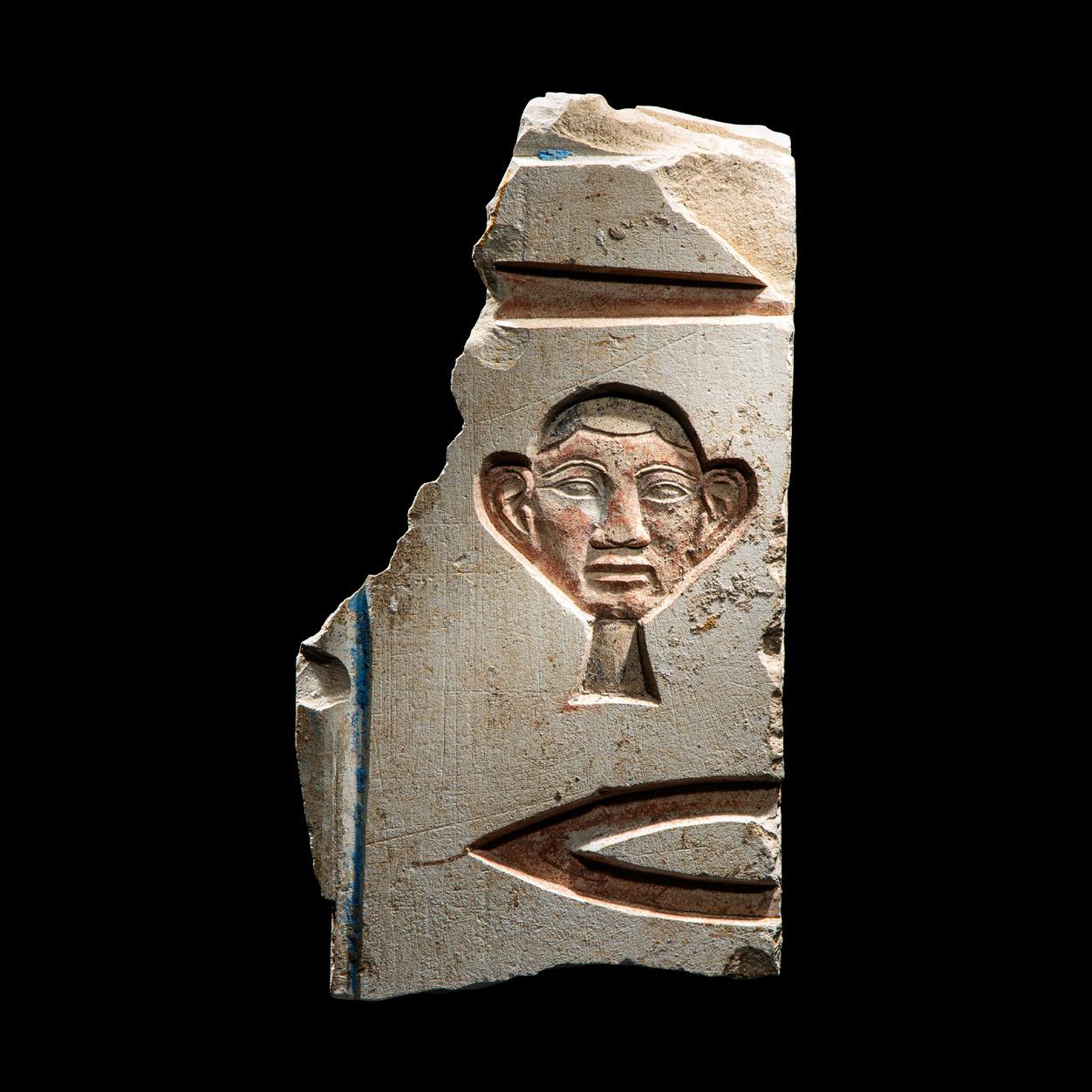
8
An Egyptian Painted Limestone Relief Fragment
Late Period, 26th-30th Dynasty, 664-343 B.C.
Width 13 cm (5 1/8 inches).
Provenance: Andrew Cunningham Ware Collection (1945–2024), South Florida, primarily formed in the 1990s-2000s.
$1,000 - 2,000
9 An Egyptian Painted Limestone Relief Fragment
Late Period, 26th-30th Dynasty, 664-343 B.C.
Width 12.5 cm (4 7/8 inches).
Provenance: Andrew Cunningham Ware Collection (1945–2024), South Florida, primarily formed in the 1990s-2000s.
$2,000 - 3,000

10


An Egyptian Painted Relief Fragment
Late Period, 26th-30th Dynasty, 664-343 B.C. Length 15 cm (5 7/8 inches).
Provenance:
Andrew Cunningham Ware Collection (1945–2024), South Florida, primarily formed in the 1990s-2000s.
$2,000 - 3,000
An Egyptian Painted Limestone Relief Fragment Late Period, 26th-30th Dynasty, 664-343 B.C. Height 18 cm (7 inches).
Provenance: Andrew Cunningham Ware Collection (1945–2024), South Florida, primarily formed in the 1990s-2000s.
$2,000 - 3,000

12
An Egyptian Granodiorite Relief Fragment
Late Period to Ptolemaic Period, 664-30 B.C.
Height 10 cm (4 inches).
Provenance: Andrew Cunningham Ware Collection (1945–2024), South Florida, primarily formed in the 1990s-2000s.
$1,200 - 1,800

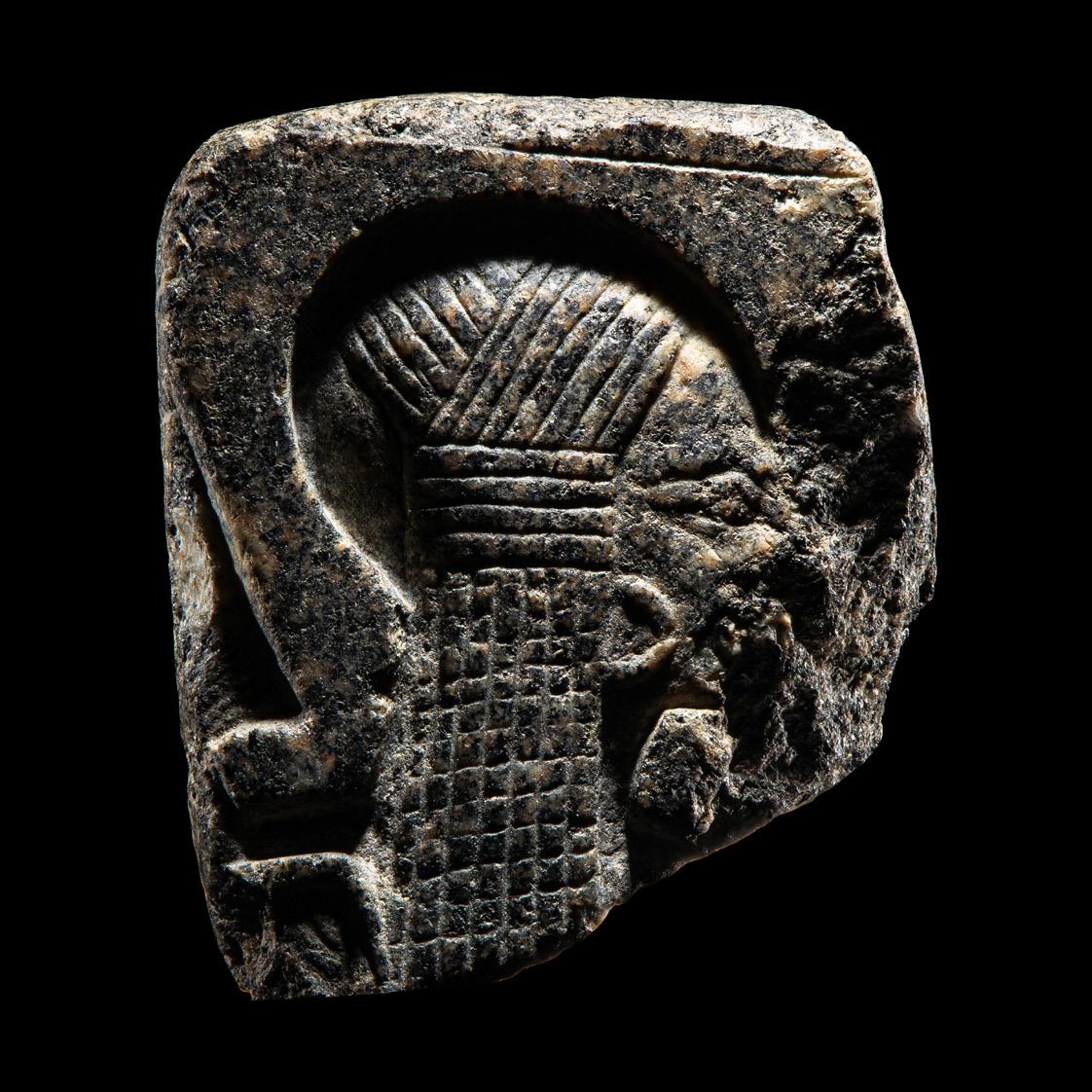

13
An Egyptian Sandstone Stele Fragment
Late Period to Ptolemaic Period, 664-30 B.C.
Height 20 cm (7 7/8 inches).
Provenance: Andrew Cunningham Ware Collection (1945–2024), South Florida, primarily formed in the 1990s-2000s.
$1,000 - 2,000

15
An Egyptian Bronze Bust of a Cat
Late Period, 26th-30th Dynasty, 664-343 B.C.
Height 7 cm (2 3/4 inches).
Provenance: Andrew Cunningham Ware Collection (1945–2024), South Florida, primarily formed in the 1990s-2000s.
$2,500 - 3,500

14
An Egyptian Bronze Cat
Late Period to Ptolemaic Period, 664-30 B.C.
Height 8.9 cm (3 1/2 inches).
Provenance:
Andrew Cunningham Ware Collection (1945–2024), South Florida, primarily formed in the 1990s-2000s.
$3,000 - 5,000

16
An Egyptian Bronze Cat
Late Period to Ptolemaic Period, 664-30 B.C.
Height 9.2 cm (3 5/8 inches).
Provenance: Andrew Cunningham Ware Collection (1945–2024), South Florida, primarily formed in the 1990s-2000s.
$2,000 - 3,000



17
An Egyptian Bronze Head of a Cat Late Period, 26th-30th Dynasty, 664-343 B.C.
Height 6.7 cm (2 5/8 inches).
Property from the Estate of Andrew Cunningham Ware (1945-2024)
Provenance:
Estate of a Private Collection, United States, acquired 1970-1989. O. Rundle Gilbert, New York, acquired from the above, 7 November 1974. Bonhams, London, Antiquities, 28 October 2009, Lot 110.
$1,200 - 1,800

19
An Egyptian Bronze Head of a Cat
Late Period to Ptolemaic Period, 664-30 B.C.
Height 3.8 cm (1 1/2 inches).
Provenance: Andrew Cunningham Ware Collection (1945–2024), South Florida, primarily formed in the 1990s-2000s.
$1,200 - 1,800

18
An Egyptian Bronze Cat
Late Period, 26th-30th Dynasty, 664-343 B.C.
Height 8 cm (3 1/8 inches).
Provenance: Andrew Cunningham Ware Collection (1945–2024), South Florida, primarily formed in the 1990s-2000s.
$1,200 - 1,800

20
An Egyptian Bronze Lion-Headed Goddess and Obelisk Late Period to Ptolemaic Period, 664-30 B.C.
Height 9.2 cm (3 5/8 inches).
Provenance: Andrew Cunningham Ware Collection (1945–2024), South Florida, primarily formed in the 1990s-2000s.
$3,000 - 5,000

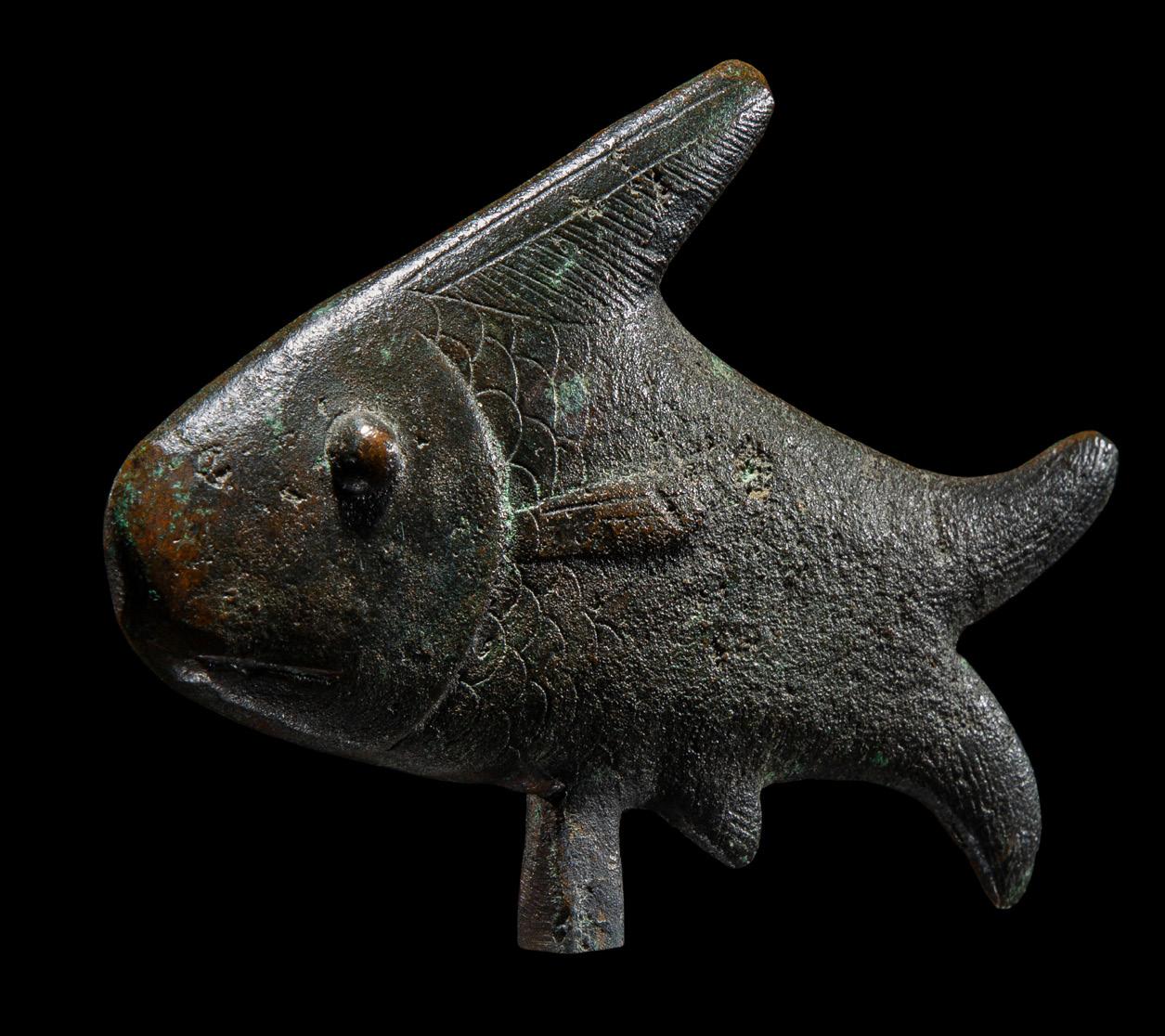

21
An Egyptian Bronze Oxyrhynchus Fish
Late Period to Ptolemaic Period, 664-30 B.C.
Length 11.4 cm (4 1/2 inches).
Provenance: Andrew Cunningham Ware Collection (1945–2024), South Florida, primarily formed in the 1990s-2000s.
$1,000 - 2,000

22
An Egyptian Bronze Anubis and Ichneumon Late Period to Ptolemaic Period, 664-30 B.C.
Length 9.2 cm (3 5/8 inches).
Provenance:
Andrew Cunningham Ware Collection (1945–2024), South Florida, primarily formed in the 1990s-2000s.
$2,000 - 3,000


23
An Egyptian Bronze Head of Montu Third Intermediate Period to Late Period, 1069-332 B.C.
Height 5.7 cm (2 1/4 inches).
Provenance: Andrew Cunningham Ware Collection (1945–2024), South Florida, acquired prior to 14 June 2016. [with French export license]
$4,000 - 6,000

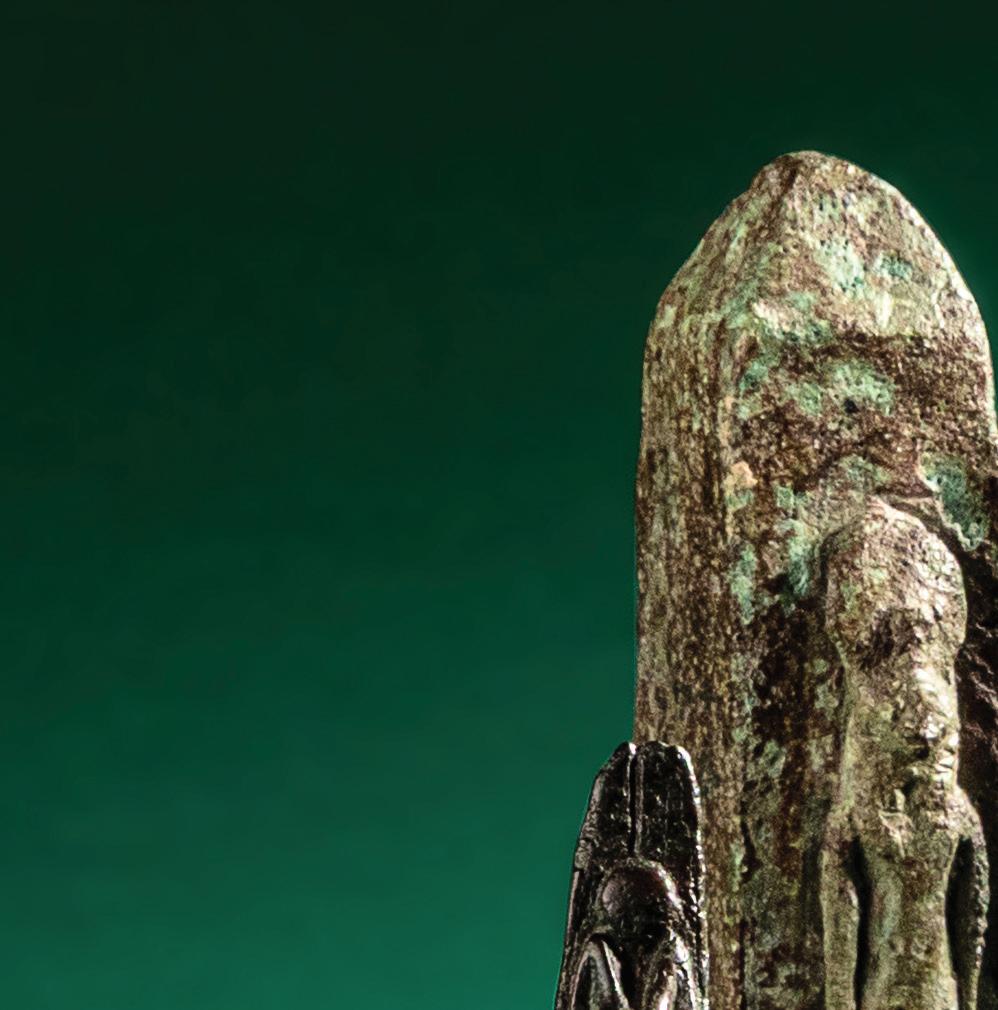








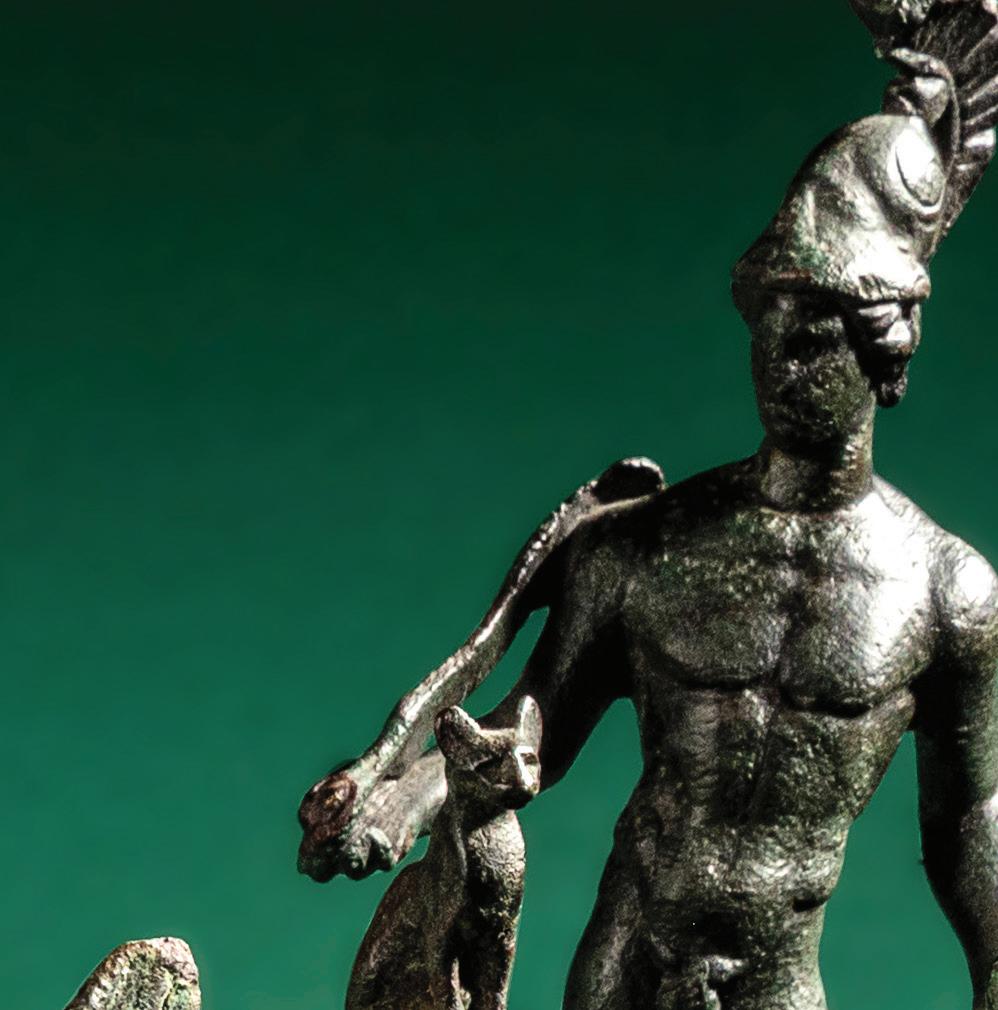




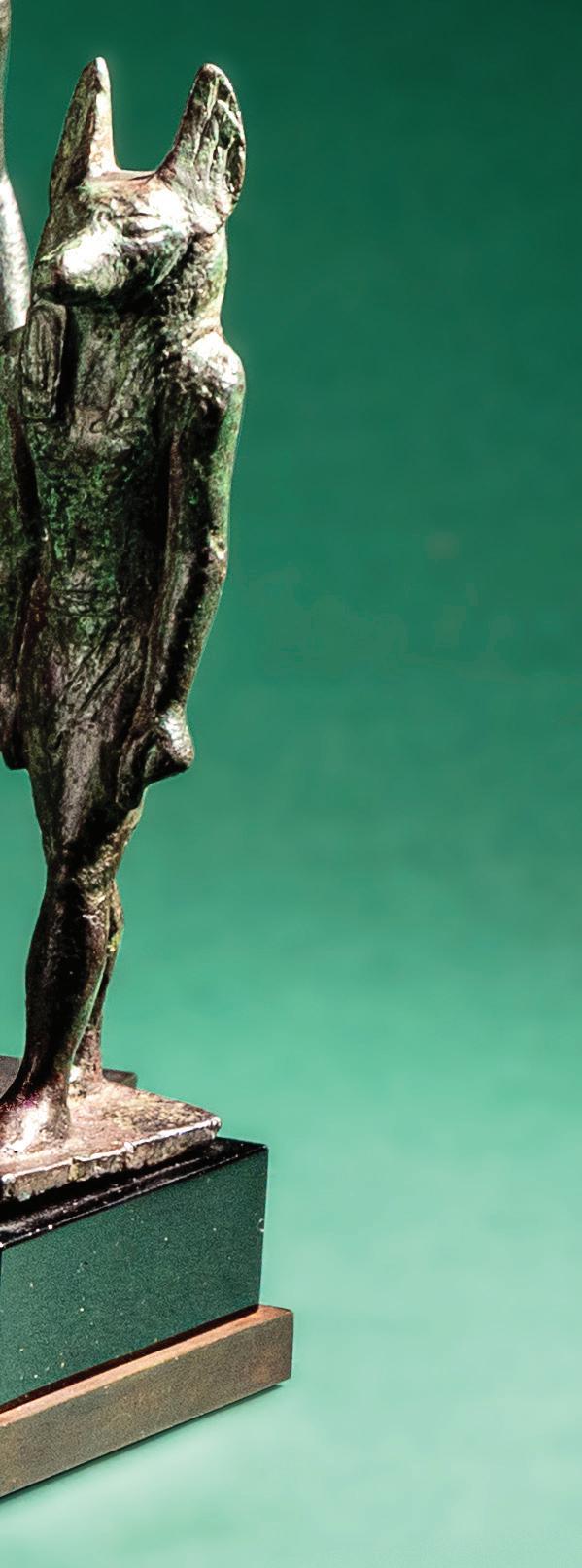

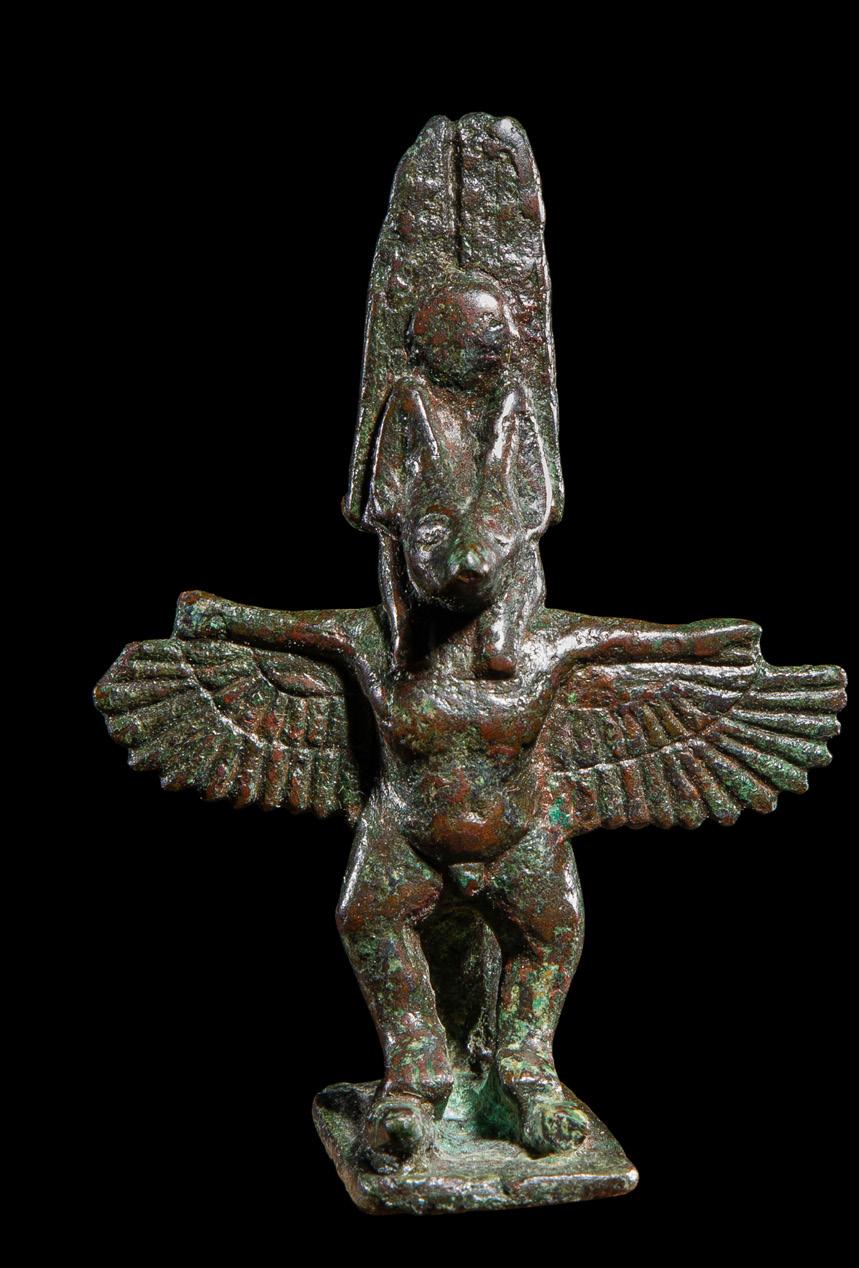
25
An Egyptian Bronze Striding Anubis Late Period to Ptolemaic Period, 664-30 B.C.
Height 8.9 cm (3 1/2 inches).
Provenance: Andrew Cunningham Ware Collection (1945–2024), South Florida, primarily formed in the 1990s-2000s.
$2,000 - 3,000

24
An Egyptian Bronze Pantheistic Deity
Late Period, 26th-30th Dynasty, 664-343 B.C.
Height 6 cm (2 3/8 inches).
Provenance: Hilton Collection (Inv. no. 2518). [based on old collection label]
Andrew Cunningham Ware Collection (1945–2024), South Florida, primarily formed in the 1990s-2000s.
$1,000 - 2,000
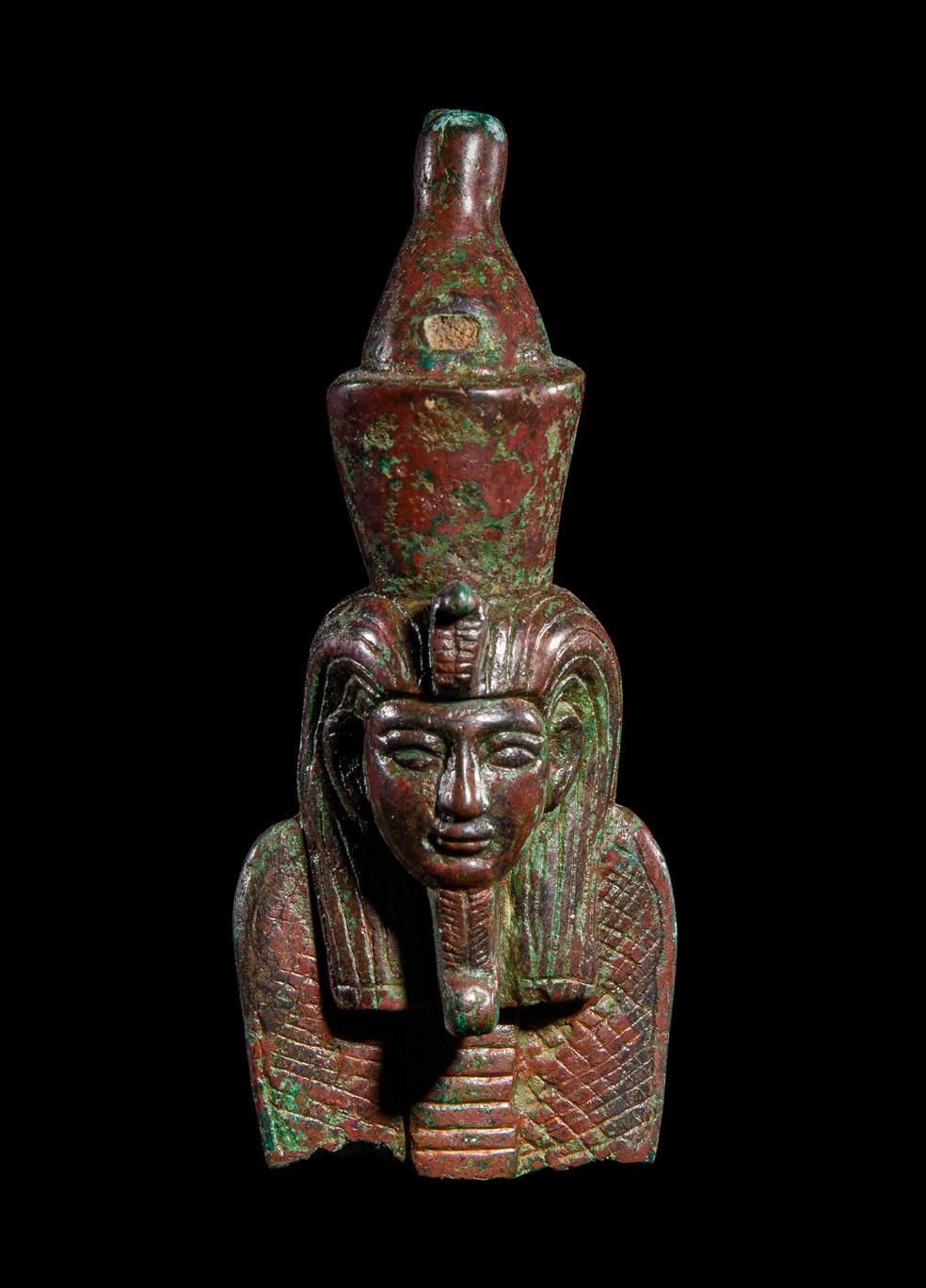
26

An Egyptian Bronze Fragment of the God Atum as a Snake Late Period to Ptolemaic Period, 664-30 B.C.
Height 9.2 cm (3 5/8 inches).
Provenance: Andrew Cunningham Ware Collection (1945–2024), South Florida, primarily formed in the 1990s-2000s.
$1,000 - 2,000
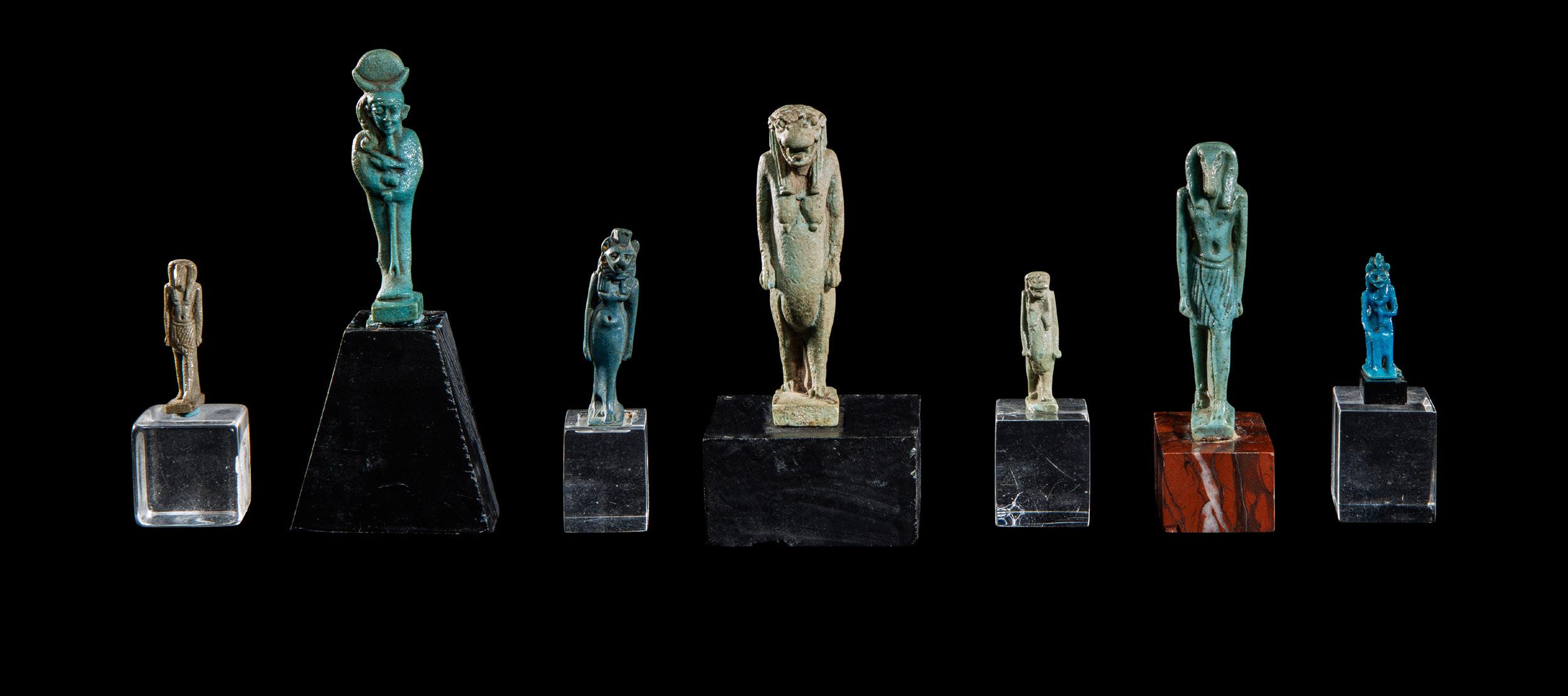
27
Seven Egyptian Faience Amulets
Late Period to Ptolemaic Period, 664-30 B.C.
Height of tallest 5.5 cm (2 1/4 inches).
Property from the Estate of Andrew Cunningham Ware (1945-2024)
Provenance: François de Ricqlès, Hôtel Drouot, Paris, Archéologie, 1 October 1996, Lot 315. [part] [with French export certificate]
$2,000 - 3,000

28
A Roman Bronze Mars Holding a Parazonium Circa 1st-2nd Century A.D.
Height 13.4 cm (5 1/4 inches).
Provenance: Andrew Cunningham Ware Collection (1945–2024), South Florida, primarily formed in the 1990s-2000s.
$2,000 - 3,000


- 18,000




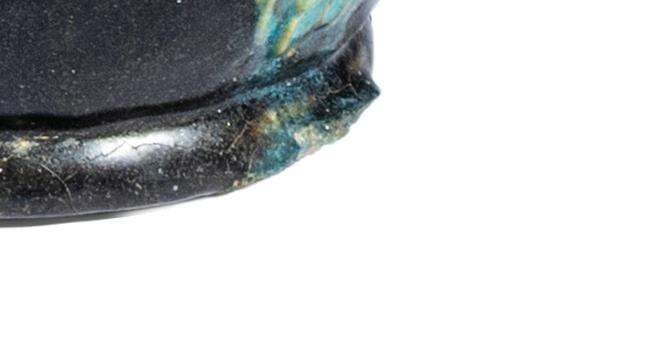
An Egyptian Faience Amphora Roman Period, Circa 1st-2nd Century A.D.
Height 20.3 cm (8 inches).
Provenance: Manouchehr Soleiman Aaron, Tehran, Iran. Bluett & Sons, London, acquired from the above, 10 December 1978. Private Collection, Belgium.
Christie’s, New York, Antiquities, 13 December 2013, Lot 27. Christie’s, New York, Antiquities, 5 June 2014, Lot 38.
$30,000 - 50,000


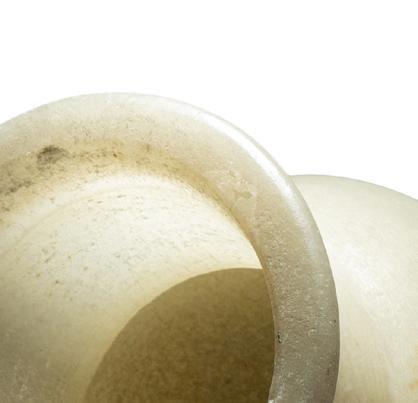



An Egyptian Alabaster Cosmetic Jar



New Kingdom, 18th-20th Dynasty, 1550-1070 B.C.
Height 8.5 cm (3 3/8 inches).
Property from a West Hollywood Collection
Provenance: Art Market, New York. Private Collection, New York, acquired in the 1990s.
$2,000 - 3,000
32
An Egyptian Black-Topped Redware Jar
Predynastic Period, Nagada II, 3200-3000 B.C.
Height 25 cm (9 3/4 inches).
Provenance: Private Collection, United Kingdom. Christie’s, London, Important Antiquities, 16 July 1975, Lot 59.

$3,000 - 5,000



33
An Egyptian Limestone Relief Fragment Late Period, 26th Dynasty, 664-525 B.C. Width 52.8 cm (20 3/4 inches).
Property from a West Hollywood Collection
Provenance: The Ernst (1903–1990) and Marthe (1918–1999) Kofler-Truniger Collection, Lucerne, Switzerland, primarily formed in the 1950s-1960s. Sotheby’s, New York, Antiquities, 13 June 2002, Lot 35.
Published: W.M. Flinders Petrie, Gizeh and Rifeh, London, 1907, pl. XXXVIE
$10,000 - 15,000

34
An Egyptian Limestone Fragment with Cartouche of Queen Nefertiti New Kingdom, 18th Dynasty, Amarna Period, Reign of Akhenaten, 1353-1335 B.C. Length 12 cm (4 3/4 inches).
Property from a New York Collection
Provenance:
Art Market, New York and Philadelphia, 1960s-1980s.
Noel Vreeland Carter (1941-2020), South Nyack, New York, acquired from the above; thence by descent.
$3,000 - 5,000


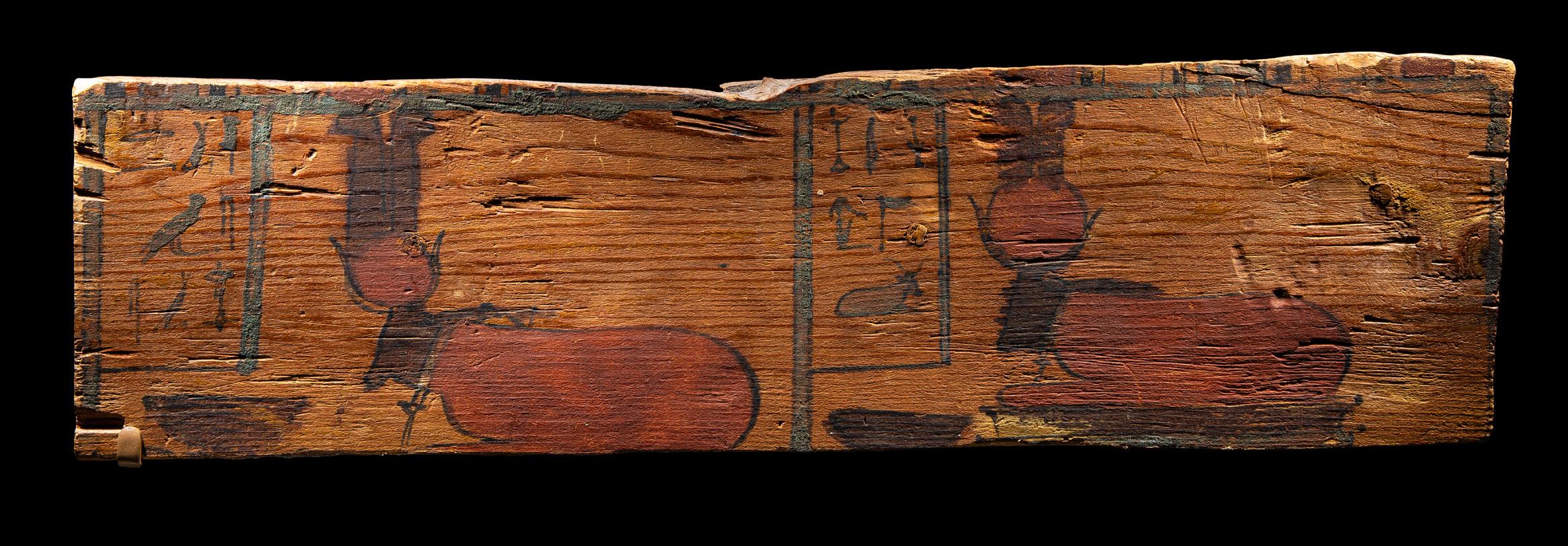
35
An Egyptian Wood Sarcophagus Fragment Late Period, 26th-30th Dynasty, 664-343 B.C. Length 43.5 cm (17 1/8 inches).
Provenance:
Gustave Jequier (1868-1946) Collection, Neuchâtel, Switzerland; thence by descent to his niece.
Christie’s, New York, Antiquities, 4 June 2008, Lot 19 (part).
Ira & Larry Goldberg Auction, Los Angeles, Ancient and World Coins, 29 October 2009, Lot 829.
$2,000 - 3,000
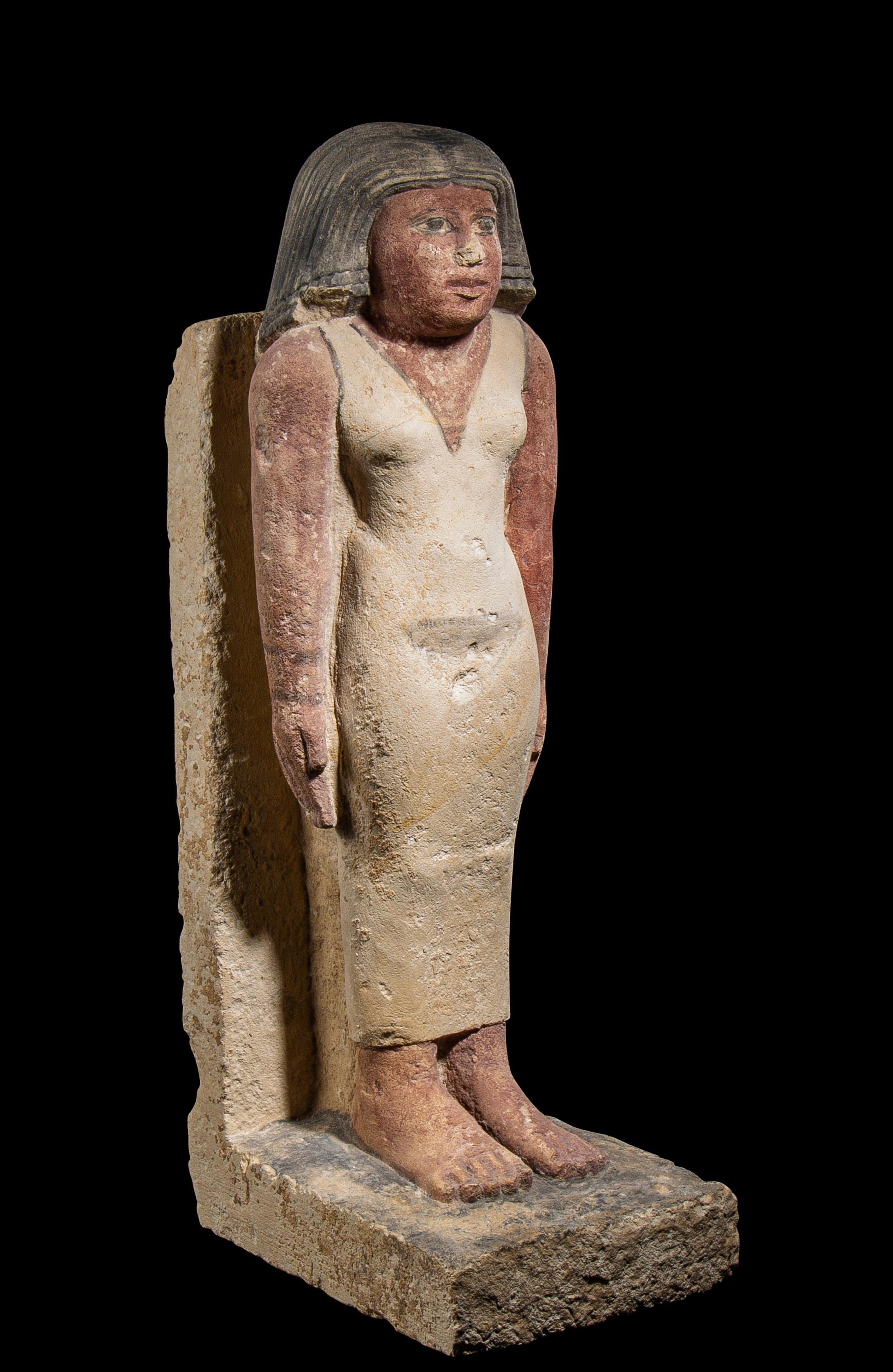


36
An Egyptian Painted Limestone Noblewoman
Old Kingdom, 5th-6th Dynasty, 2465-2150 B.C.
Height 46.5 cm (18 1/4 inches).
Provenance:
Michael Waltz, Hermes Antiken, Munich, prior to 1979.
Anton Groth, Zurich, acquired from the above, 26 June 1979; thence by descent.
Private Collection, Zurich, 2012-2017.
Phoenix Ancient Art, New York 2017 (Crystal 7, no. 5); where acquired by the present owner.
[Art Loss Register no. S00123170]
This statuette is carved from a single block with integral plinth and back-pillar. The woman stands frontally with feet together, arms straight and palms to the thighs, wearing a close-fitting sheath with a deep V-bodice and a centrally parted, striated shoulder-length wig. The blocky massing, pillar height terminating at the shoulders, schematic hands and toes, and restrained modeling of the torso place the work within the corpus of Old Kingdom private tomb statuary for women, particularly of Dynasty V.
Its scale, integral support, and preserved polychromy align it with standing female figures in museum collections at Cairo and Paris catalogued by Borchardt and Ziegler.
Old Kingdom tomb statues served as ka-images (durable surrogates that received offerings and sustained the owner in perpetuity within the tomb chapel). While most female figures of the period appear as consorts in pairs or family groups, single-standing women are less common and signal autonomous commemoration. The present figure’s red flesh tone (more often used for men) belongs to a known but exceptional palette that emphasizes vitality and status; Ziegler cites parallel instances, including the wellknown pair of Raherka and Meresankh in the Louvre. The individualized facial structure and carefully ordered wig further underscore the workshop’s attention to a specific woman, consonant with the broader Old Kingdom milieu in which elite women could hold significant titles and authority, epitomized by figures such as Khentkaus I at Giza, sometimes regarded as a ruler in her own right at the turn of Dynasties IV–V.
For comparable single standing female statues in the Egyptian Museum, Cairo, see Ludwig Borchardt, Statuen und Statuetten von Königen und Privatleuten im Museum von Kairo, Cairo, 1911, pp. 100–103 (with related examples); For corpus discussion of Old Kingdom private sculpture and comparable female coiffures and dress, see Christiane Ziegler, Les statues égyptiennes de l’Ancien Empire, Paris, 1997, pp. 123–137; and for the exceptional use of red female flesh and discussion of individuality in Old Kingdom statuary; for the pair of Raherka and Meresankh, Musée du Louvre, see Christiane Ziegler, Les statues égyptiennes de l’Ancien Empire, Paris, 1997, cover illustration and pp. 218–219, 264, 270–271.
$80,000 - 120,000

37
An Egyptian Faience Flask New Kingdom, 18th Dynasty, 1550-1307 B.C. Height 13 cm (5 1/8 inches).
Property from a Private California Collection
Provenance:

The Groppi Collection, Switzerland, acquired in the 1920s-1940s. Christie’s, London, The Groppi Collection, 26 April 2012, Lot 25.
Exhibited: Germany, Hanover, Museum August Kestner, Köstlichkeiten aus Kairo!, 23 January 2008-4 May 2008.

Switzerland, Basel, Antikenmuseum Basel und Sammlung Ludwig, Köstlichkeiten aus Kairo!, 15 October 2008-15 March 2009.
Published:
C. Loeben et. al., Köstlichkeiten aus Kairo! : die ägyptische Sammlung des Konditoreiund Kaffeehaus-Besitzers Achille Groppi (1890-1949), (Exhibition Catalogue), Antikenmuseum Basel und Sammlung Ludwig und Museum August Kestner, Basel and Hanover, 2008, pp. 84-85, no. 35.
$30,000 - 50,000



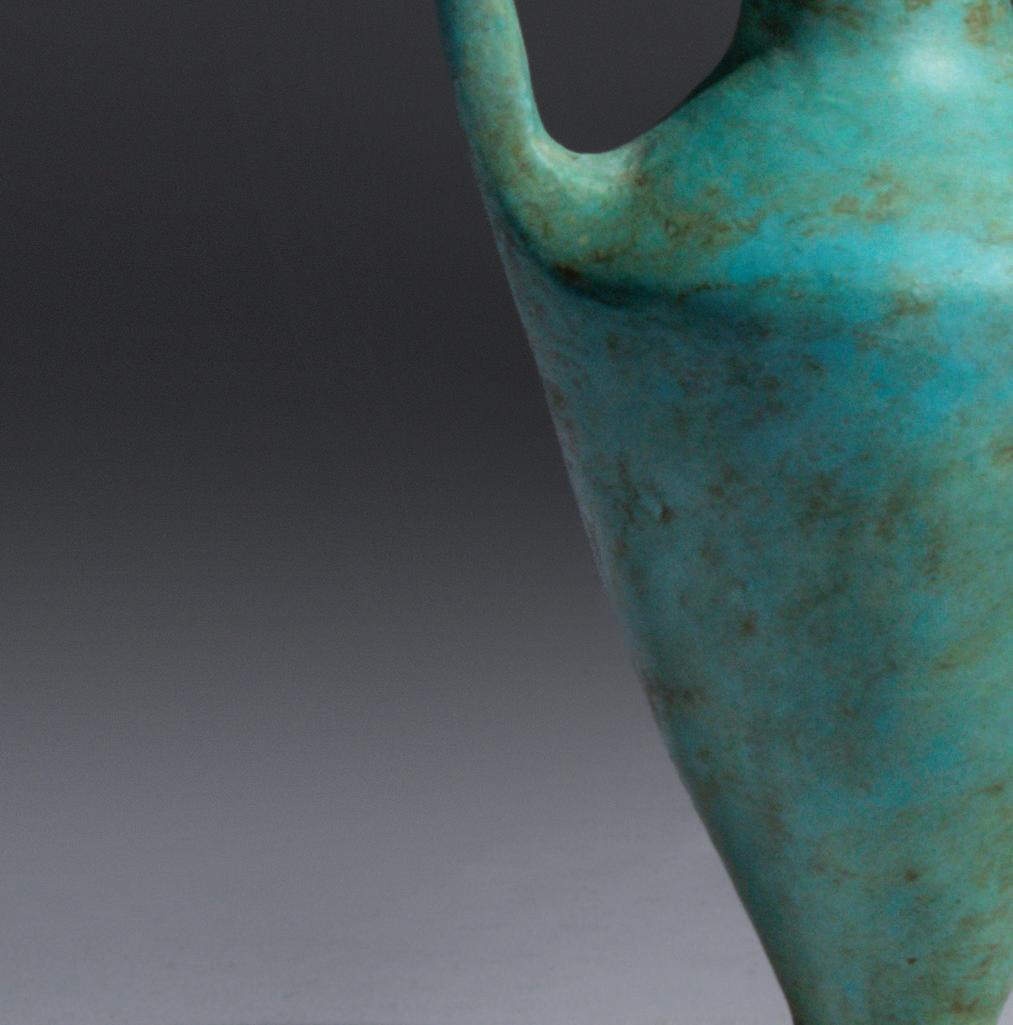




38
An
Property from a New York Collection
Provenance: Art Market, New York. Noel Vreeland Carter (1941-2020), South Nyack, New York, acquired from the above in the 1960s; thence by descent.
$4,000 - 6,000

39
Provenance:
$1,500 - 2,500
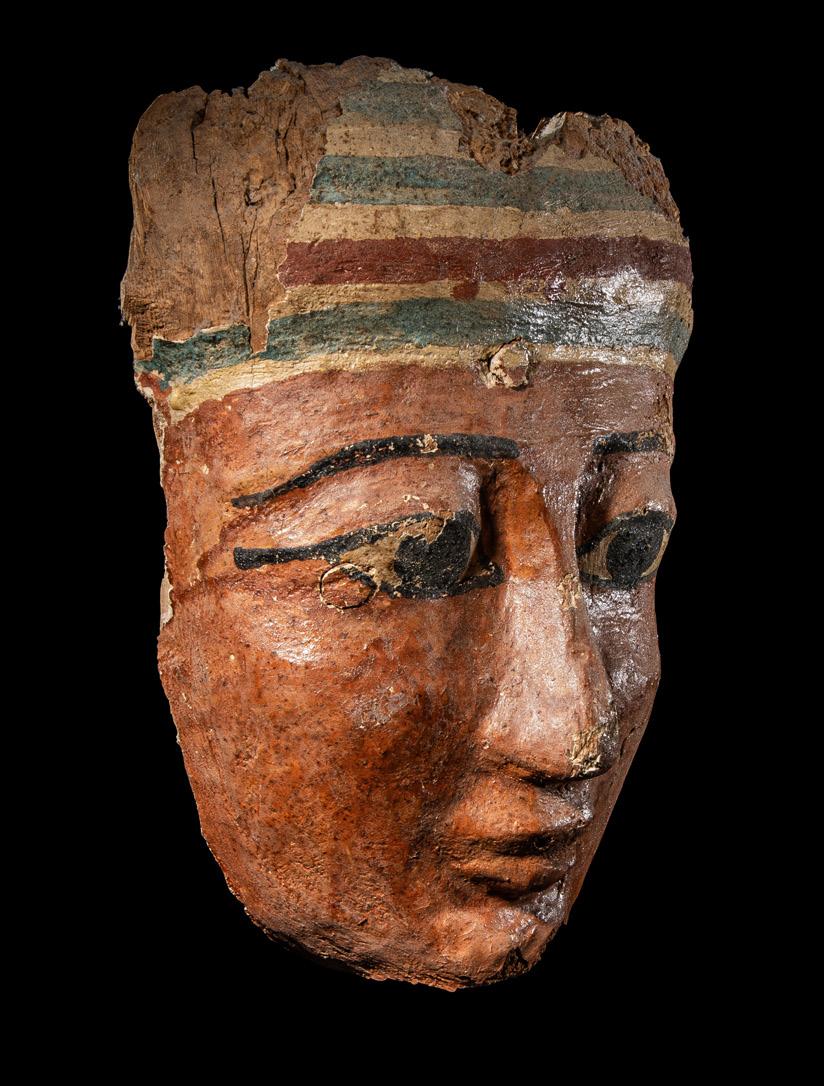

40
An Egyptian Gilt and Painted Wood Ptah-Sokar-Osiris
Late Period to Ptolemaic Period, 664-30 B.C.
Height 47.5 cm (18 3/4 inches).
Provenance: Smith Collection, Cambridge, United Kingdom, acquired in 1949. Private Collection, London, acquired in 1978. Bonhams, London, Antiquities, 23 October 2013, Lot 50.
$6,000 - 8,000

41
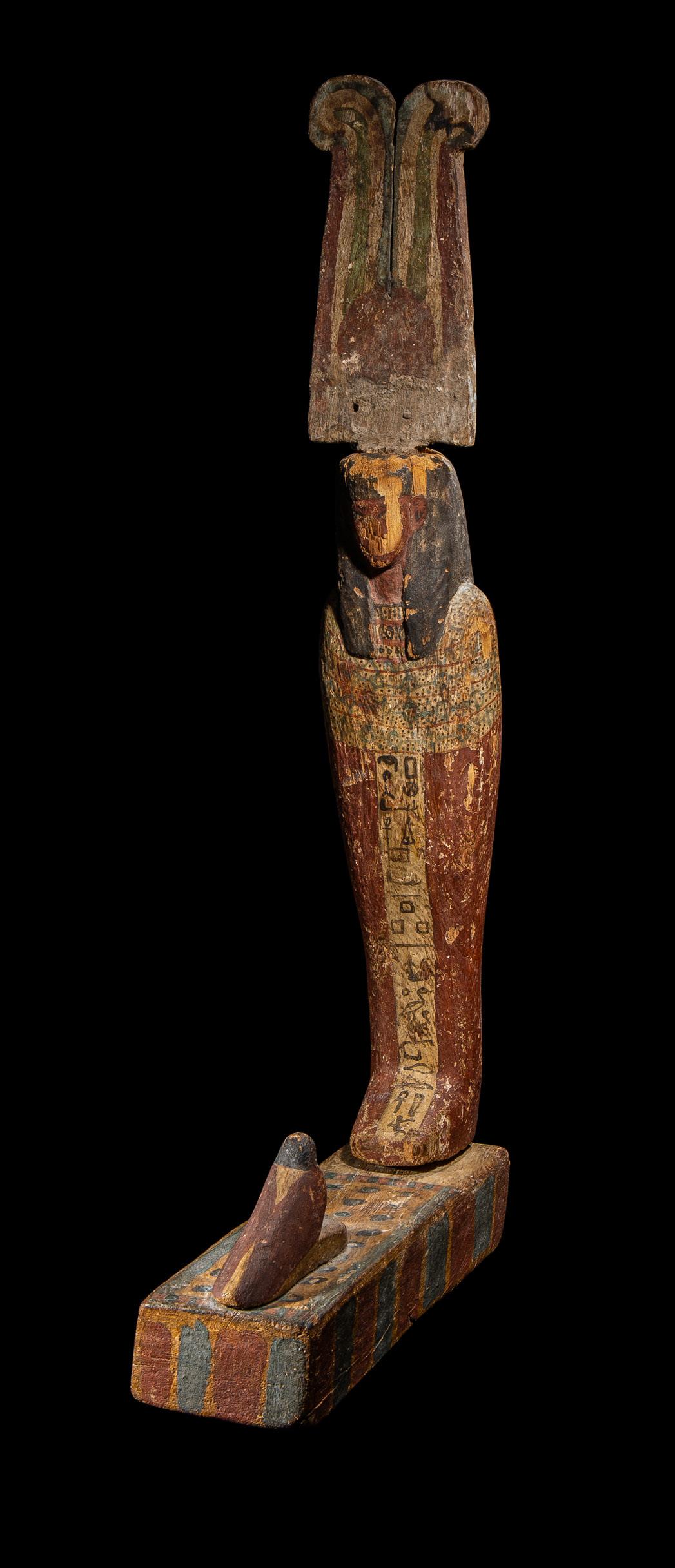
An Egyptian Painted Wood Ptah-Sokar-Osiris
Late Period to Ptolemaic Period, 664-30 B.C.
Height 50 cm (19 5/8 inches).
Property from a New York Collection
Provenance: Art Market, New York and Philadelphia, 1960s-1980s. Noel Vreeland Carter (1941-2020), South Nyack, New York, acquired from the above; thence by descent.
$1,200 - 1,800


42
An Egyptian Bronze Lion-Headed Goddess and Obelisk Late Period, 26th-30th Dynasty, 664-343 B.C.
Height 21.3 cm (8 3/8 inches).
Provenance: Omar Pascha Sultan, Paris, prior to 1929. Mathias Komor, New York, 1969. [Inv. no. C875] Mrs. Sidney F. Brody (1916-2009), California.
Christie’s, New York, Antiquities: Including Property from the Collection of Max Palevsky, 9 December 2010, Lot 22.
Published:
Collection de feu Omar Pacha Sultan, Catalogue descriptif, Paris, 1929, no. 81, pl. XIV. R. Bianchi, “A Bronze Reliquary for an Ichneumon Dedicated to the Egyptian Goddess Wadjet” Arts 11, 2022.
This bronze reliquary features a striking depiction of a lion-headed goddess emerging from an obelisk, a powerful symbol of the sun’s rays. The representation of goddesses with feline heads—such as Sekhmet, Tefnut, Bastet, and Wadjet— reflects their protective and nurturing attributes. The pronounced cobra rising from her sun-disk headdress suggests a strong connection to Wadjet, a deity associated with protection for both the sun god Ra and the pharaoh. In her cobra form, known as the uraeus, she served as a powerful emblem of royalty, often seen adorning pharaonic crowns.
The ichneumon (Egyptian mongoose), which may have once been housed within this reliquary, symbolizes protection against snakes, illustrating the duality of the goddess and her sacred predator. This votive offering likely aimed to ensure divine safeguarding. While such reliquaries were produced in large numbers during the Late Period, this example exemplifies remarkable individual craftsmanship. The intricate details—the tripartite wig, the cobra’s textured body, and the geometric designs on the bracelets—demonstrate the advanced lost-wax casting technique recently perfected in Egypt, solidifying the artistry of this significant goddess. For further insights on this bronze reliquary, see R. Bianchi, “A Bronze Reliquary for an Ichneumon Dedicated to the Egyptian Goddess Wadjet,” Arts 11, 2022, no. 1, p. 21. For similar examples of bronze lion-headed goddesses with obelisks, see The Walters Art Museum, Baltimore (Acc. no. 54.993), and Rijksmuseum van Oudheden, Leiden (Acc. no. F 1953/5.2).
$40,000 - 60,000















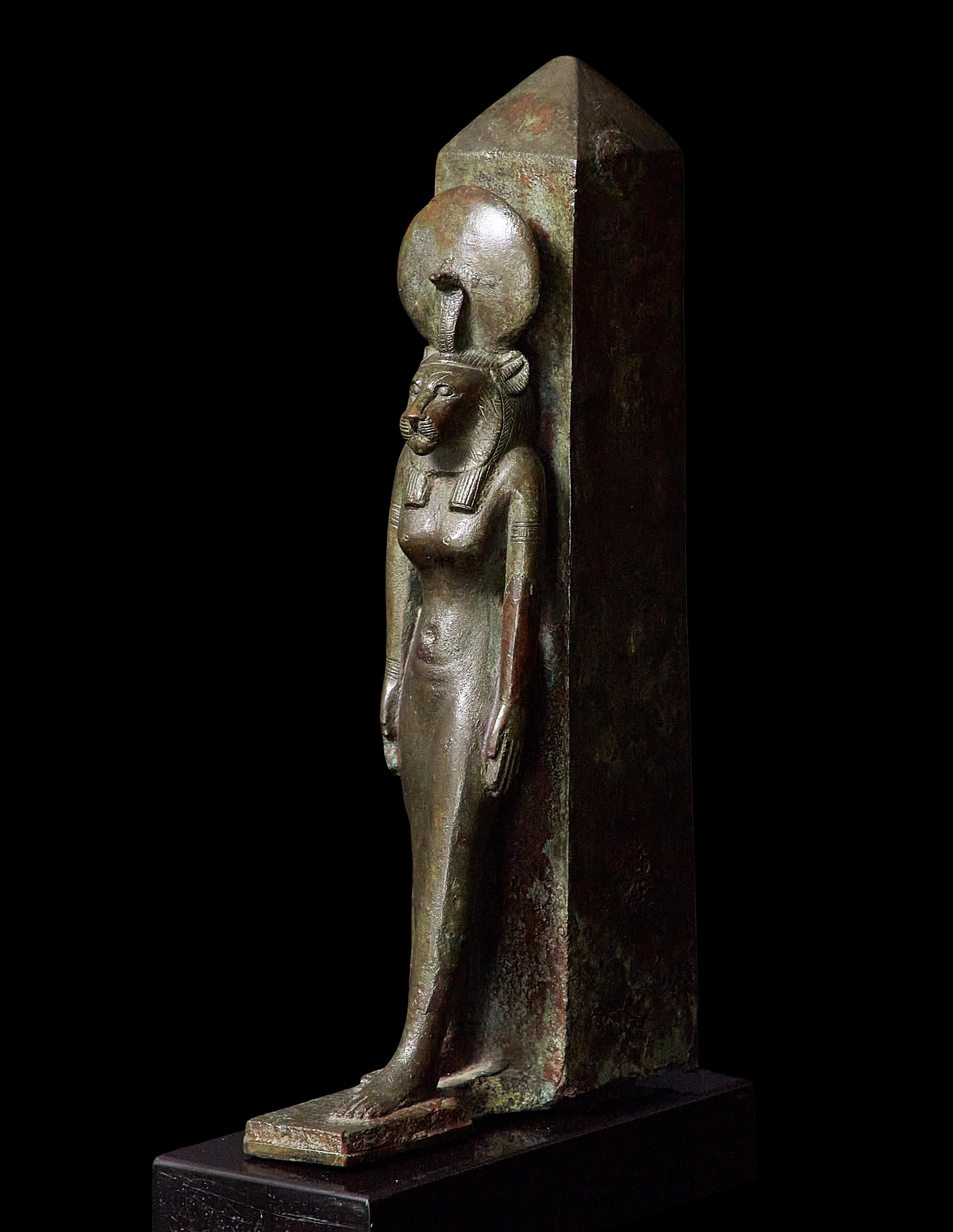
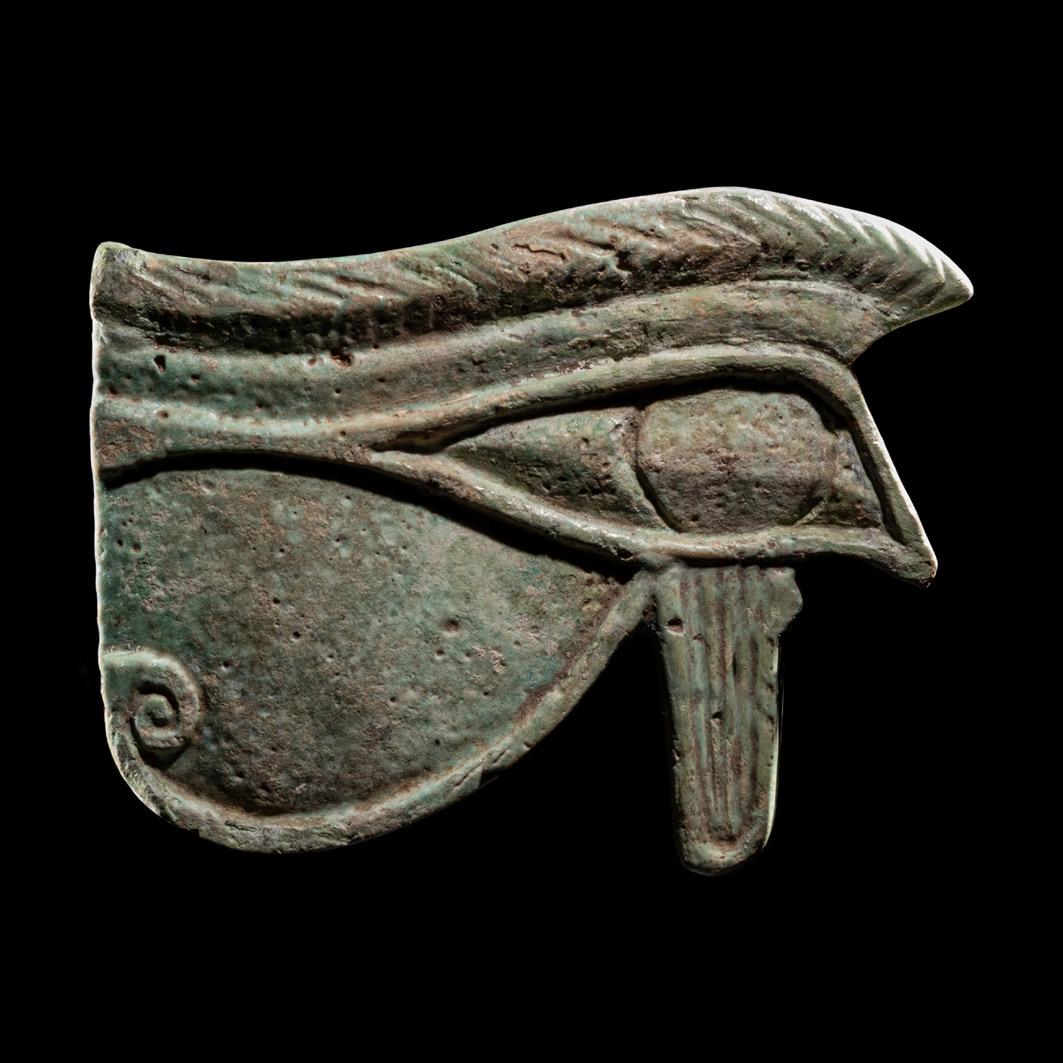

44
An Egyptian Faience Thoueris-Ipet Late Period, 26th-30th Dynasty, 664-343 B.C.
Height 8.9 cm (3 1/2 inches).
Property from a Midwest Private Collection
Provenance:
Private Collection, France. Royal Athena Galleries, New York, 2006 (Art of the Ancient World, Vol. XVII, no. 206).
$1,500 - 2,500

43
An Egyptian Faience Wadjet Late Period to Ptolemaic Period, 664-30 B.C.
Length 11.4 cm (4 1/2 inches).
Property from a Private California Collection
Provenance:
Private Collection, acquired in Germany, 1970-1992; thence by descent. Bonhams, London, Antiquities, 28 April 2010, Lot 344 (part). Hindman Auctions, Chicago, Antiquities & Ethnographic Art, 18 November 2021, Lot 76.
$2,000 - 3,000

46
An Egyptian Glass Bes Late Period, 26th-30th Dynasty, 664-343 B.C.
Height 5.3 cm (2 1/8 inches).
Provenance: Art Market, New York, 2000s.
$1,000 - 2,000
45
An Egyptian Bronze Cat Late Period to Ptolemaic Period, 664-30 B.C. Height 13.8 cm (5 1/2 inches).
Provenance:
Sotheby’s, New York, Antiquities and Islamic Art, 24 and 25 November 1987, Lot 36. with Alexander Gallery, New York. Private Collection, St. Louis, Missouri, acquired prior to 7 December 1989.
$30,000 - 50,000


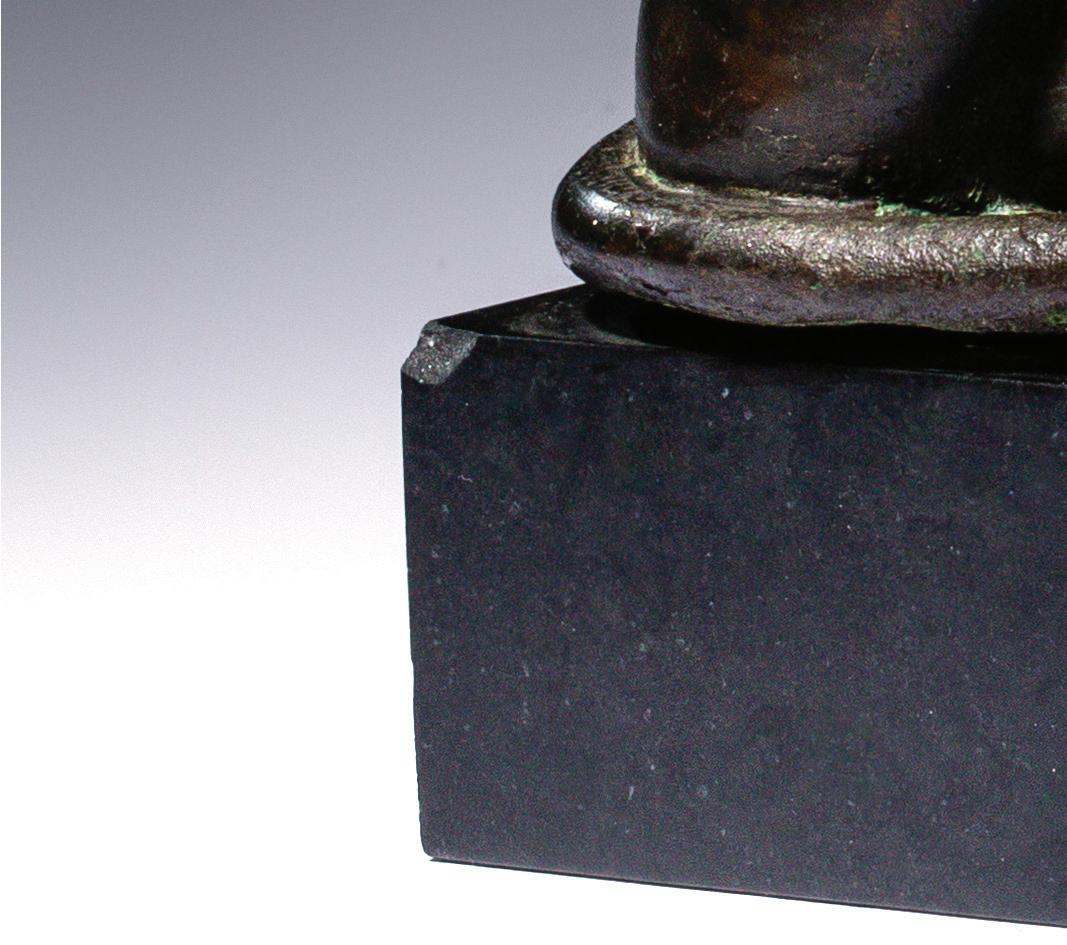






47
An Egyptian Bronze Syncretic Deity
Late Period, 26th-30th Dynasty, 664-343 B.C.
Height 22.9 cm (9 inches).
Property from a Private West Coast Collection
Provenance:
Frederick George Hilton Price (1842–1909), England. Robert de Rustafjaell (c.1859–1943), Europe and Egypt. Sotheby, Wilkinson & Hodge, London, Part of the Valuable Collection of Egyptian Antiquities formed by Robert de Rustafjaell, 20-24 January 1913, Lot 495.
Published:
F.G. Price Hilton, A Catalogue of the Egyptian Antiquities in the Possession of F.G. Hilton Price [illustrated]
$30,000 - 50,000



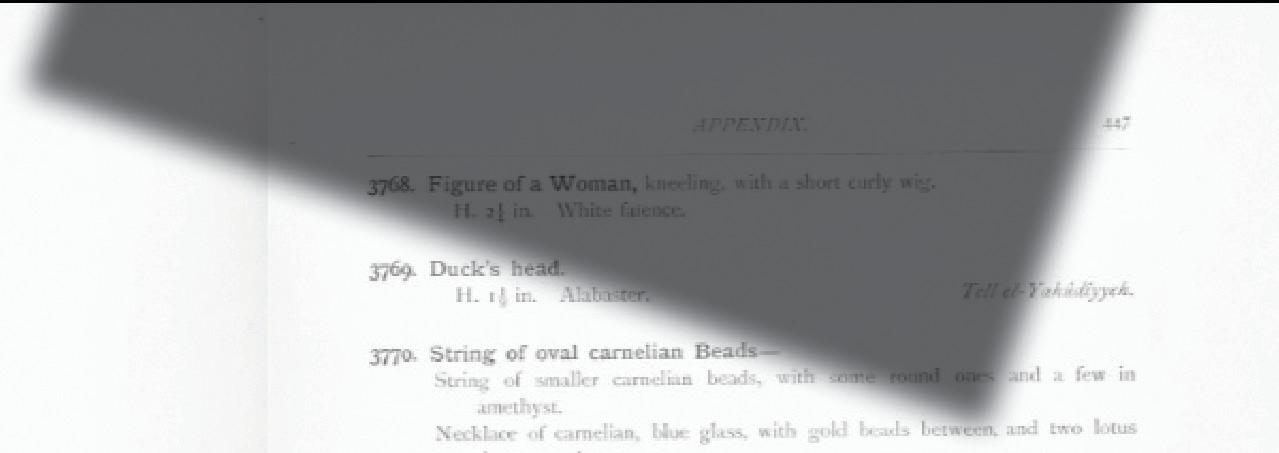



48
An Egyptian Mummified Falcon Late Period to Ptolemaic Period, 664-30 B.C.
Length 20 cm (7 3/4 inches).
Property from a California Private Collection
Provenance: Museum of Haslemere, England.
The Paul Kenny Collection, acquired from the above in 1970. Leonard Joel, Sydney, Australia, The Paul Kenny Collection, 12 May 2025, Lot 51.
$2,500 - 3,500


49
An Egyptian Bronze Ibis Head Late Period, 26th Dynasty, 664-525 B.C.
Length 12.7 cm (5 inches).
Property from a Private Minnesota Collection
Provenance: Galerie Nefer, Zurich; where acquired by the present owner, 24 September 1994.
$800 - 1,200

50
An Egyptian Wood and Bronze Ibis Late Period to Ptolemaic Period, 664-30 B.C.
Length 16.2 cm (6 3/8 inches).
Property from a New York Collection
Provenance: Art Market, New York and Philadelphia, 1960s-1980s. Noel Vreeland Carter (1941-2020), South Nyack, New York, acquired from the above; thence by descent.
$1,000 - 2,000
51

Two Egyptian Bronze Inlays Late Period, 26th-30th Dynasty, 664-343 B.C.
Height of tallest 8.3 cm (3 1/4 inches).
Provenance:
Private Collection, Paderborn, Germany, 1980. Private Collection, Germany, acquired in 1998. Christie’s, London, Antiquities, 25 October 2012, Lot 62.
$2,000 - 3,000


52 A Late Roman Mosaic Panel with a Leaping Ibex Circa 4th-5th Century A.D. Frame 146.8 cm × 104.5 cm (57 3/4 inches × 41 1/8 inches).
Provenance: Art Market, Chicago, Illinois. Estate of Roger Ramsay, Chicago, Illinois.
$4,000 - 6,000





54
A Cycladic Marble Dish Circa 3000-2800 B.C. Diameter 10.2 cm (4 inches).
Provenance: A. Stout Collection, Chicago, 1990s. Private Collection, New York.
$2,000 - 3,000
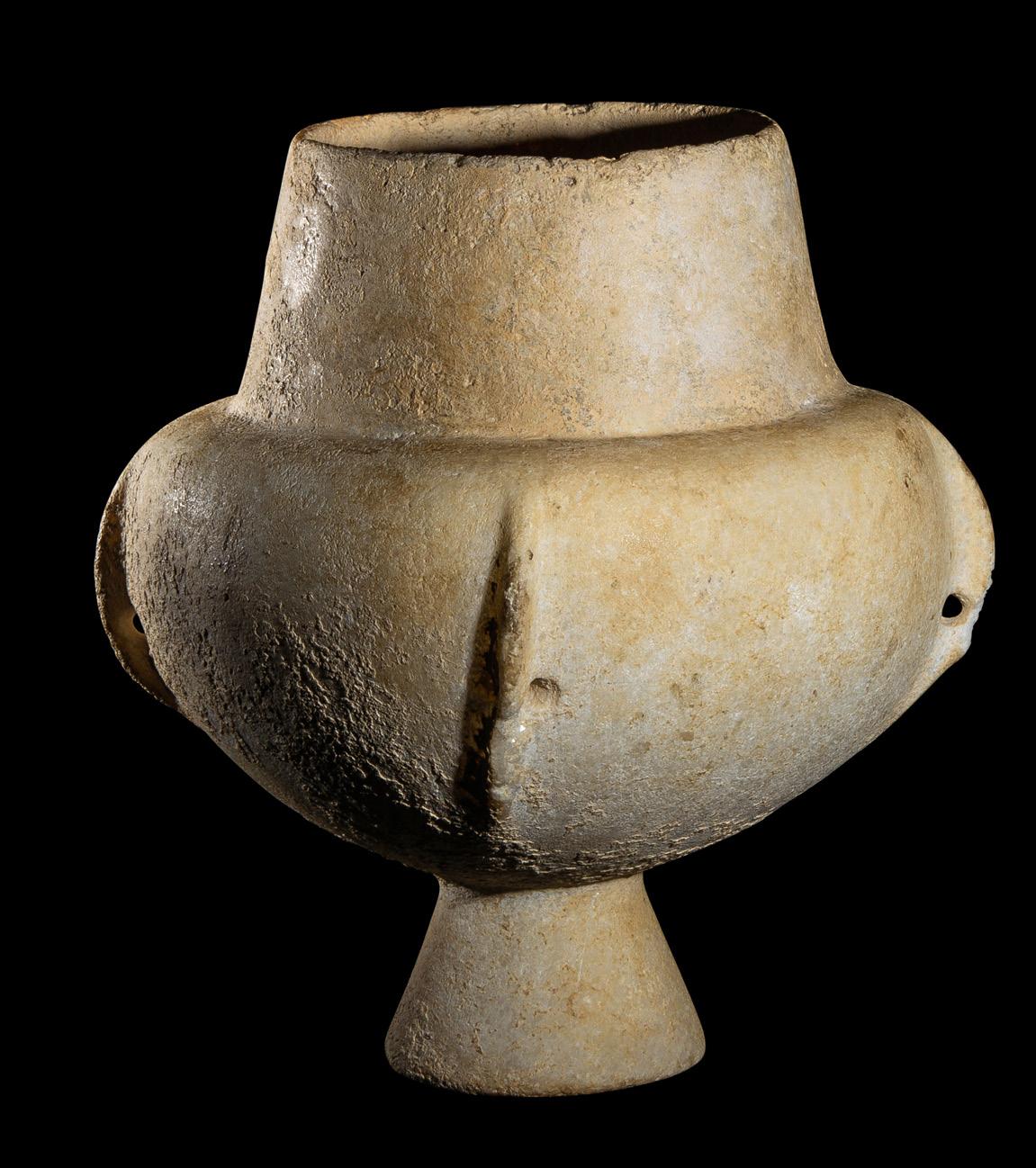
53
A Cycladic Marble Torso Early Bronze Age II, Keros-Syros Culture, Circa 2500-2100 B.C. Height 15 cm (5 7/8 inches).
Provenance: Arte Primitivo, New York, Classical Antiquities, Fine Pre-Columbian and Tribal Art, 2 March 2020, Lot 402. Hindman Auction, Chicago, Antiquities and Ancient Art: A Study, 26 May 2022, Lot 109.
$3,000 - 5,000

56
A Cycladic Marble Kandila Circa 4th-3rd Millennium B.C. Height 19 cm (7 1/2 inches).
Property from a West Hollywood Collection
Provenance: From the personal collection of Pat Getz-Gentle, Connecticut, prior to 2016. Private Collection, New York, 2016-2021. Hindman Auctions, Chicago, Antiquities and Ancient Art, 27 May 2021, Lot 88. Acquired by the present owner from the above.
For a similar but larger vessel attributed to “Sculptor B” see: Getz-Gentle, Stone Vessels of the Cyclades in the Early Bronze Age, Pennsylvania, 1996, pl. 19d.
$5,000 - 7,000


55 A Cycladic Marble Female Torso Early Cycladic II, Circa 2500 B.C. Height 16.5 cm (6 1/2 inches).
Provenance: Drue Heinz Collection, London and New York, acquired prior to 29 April 1971.
Christie’s, London, The Collection of Drue Heinz: Townhouses in London and New York, 4 June 2019, Lot 115.
$50,000 - 70,000

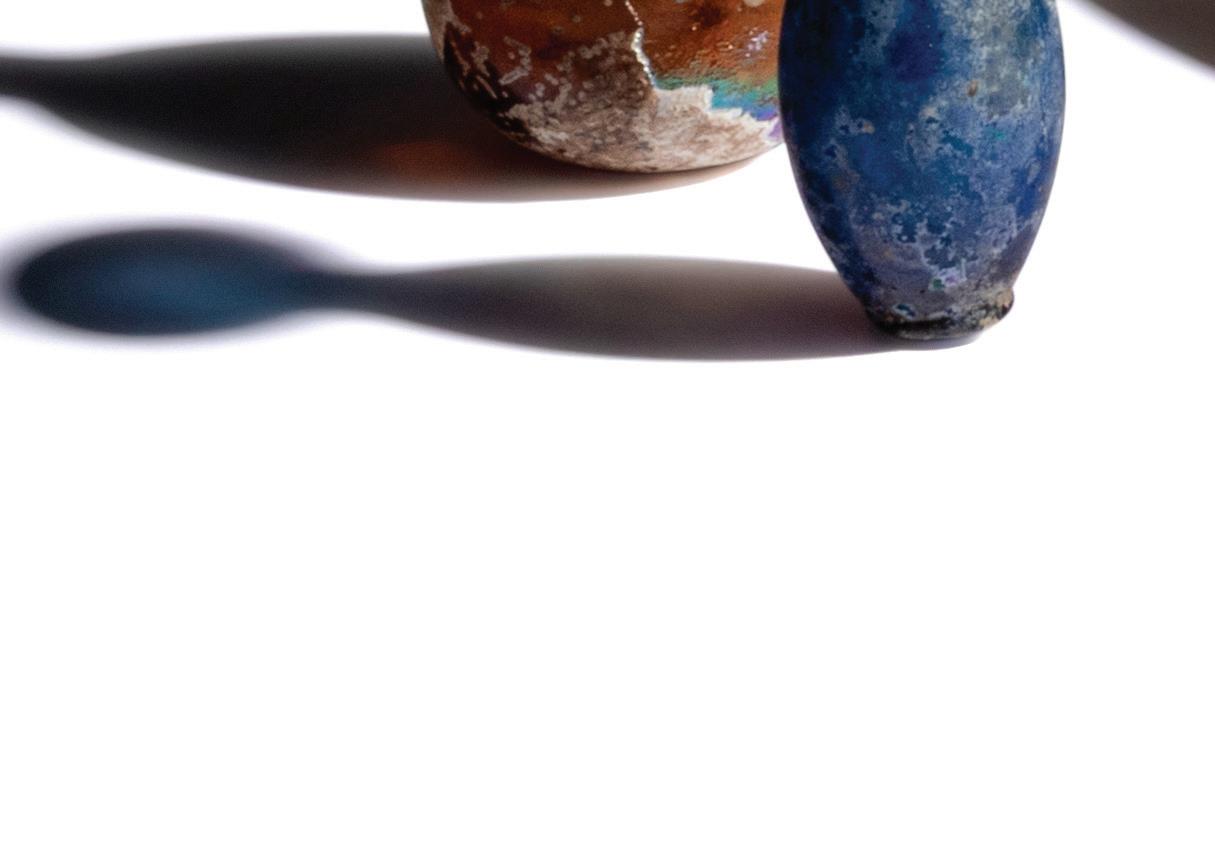

Circa 1st-4th Century A.D. Ship length 22.2 cm (8 3/4 inches).
A Roman Glass Ship and Flask Circa 1st-3rd Century A.D.
Provenance:


Exhibited:


Texas, Houston, Museum of Fine Arts, Houston, Glass of Imperial Rome from the John F. Fort Collection, 2 June-6 October 2002.

A Roman Pale Green Glass Unguentarium Circa 1st-2nd Century A.D.
Provenance:
Ben H. Ward, Houston.
Private Collection, Switzerland, acquired in 1972. Christie’s, New York, Antiquities, 31 October 2018, Lot 89. [part]
A Late Roman Blue Glass Jug Circa 3rd-4th Century A.D.




John F. Fort, New York, acquired from the above in 1996. Christie’s, New York, Antiquities, 31 October 2018, Lot 6.
Exhibited:
Texas, Houston, Museum of Fine Arts, Houston, Glass of Imperial Rome from the John F. Fort Collection, 2 June-6 October 2002.
Antiquarium, New York. , 31 October 2018, Lot 13.
John F. Fort, New York, acquired from the above in 1998.



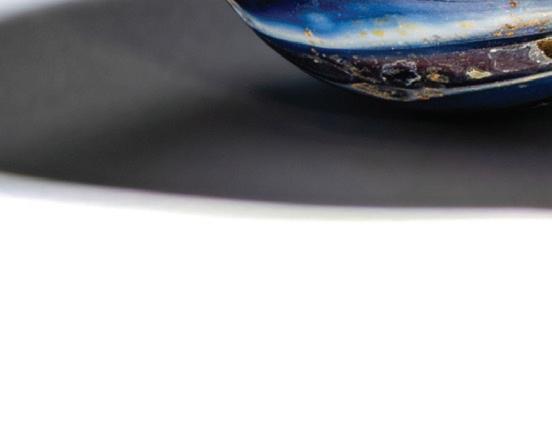




$2,000 - 3,000

58
A Roman Marbled Glass Unguentarium Circa 1st Century A.D. Height 9.2 cm (3 5/8 inches).
Provenance: Weprin Family Collection, New York, acquired 1970s-1991; thence by descent.
$2,000 - 3,000










A Roman Glass Cinerary Urn Circa 1st Century A.D. Height 20 cm (7 7/8 inches).
Property from the Collection of Susan Piser
Provenance:
B.C. Holland Gallery, Chicago; where acquired by the present owner in the late 1980s.
$3,000 - 5,000







A Roman Marbled Glass Unguentarium Circa 1st Century A.D. Height 8 cm (3 1/8 inches).






Provenance: Weprin Family Collection, New York, acquired 1970s-1991; thence by descent.





$3,000 - 5,000

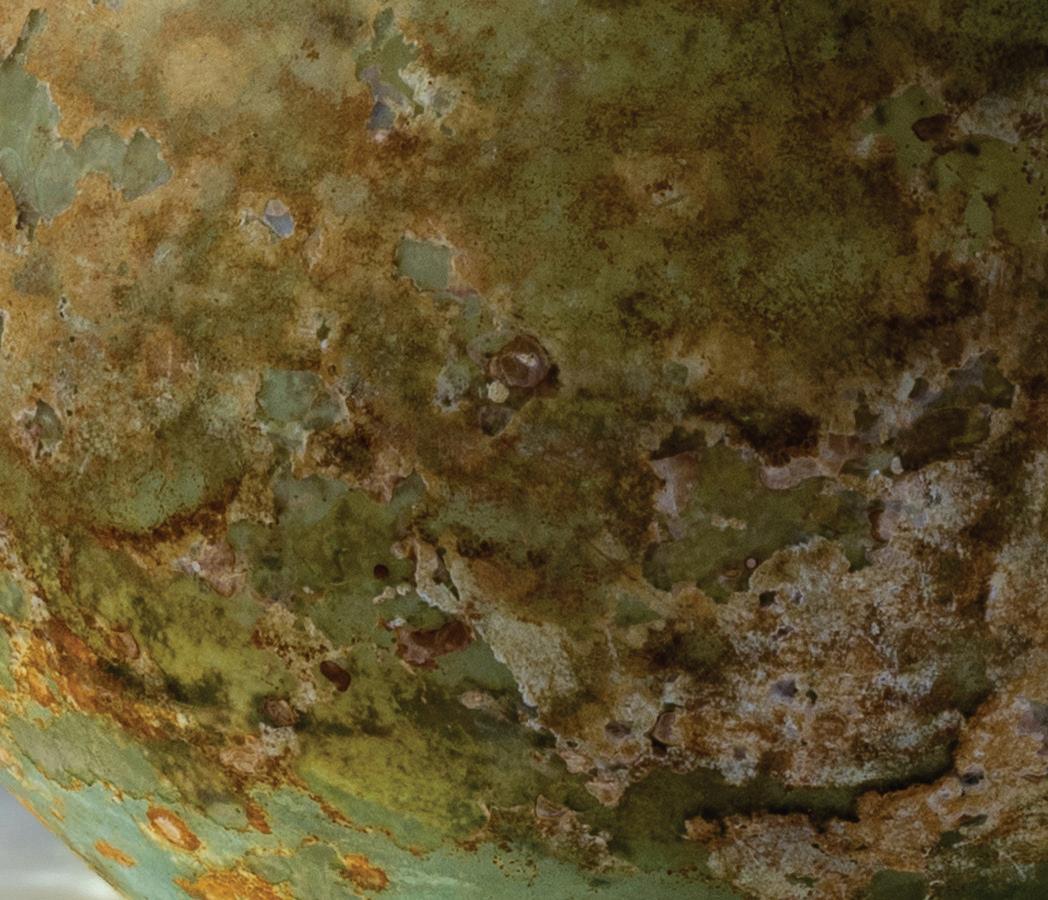








TThese bronze diplomas commemorate the most transformative moment in a Roman soldier’s life: honorable discharge after twenty-five years of service, accompanied by the grant of Roman citizenship. While Roman citizens served in the legions, these diplomas were awarded to auxiliary soldiers, non-citizens recruited from across the empire.


The documents illuminate the personal side of Roman military life. Soldiers were not permitted to marry during active service, yet upon discharge, the diplomas granted the conubium, or the legal right of marriage prized by citizens, even retroactively legitimizing long-standing unions with non-citizens. As seen in Lot 61, the diplomas sometimes even mention the veterans’ children.
After discharge, veterans may have returned to their native provinces. The soldier named in Lot 65, possibly of Noric-Pannonian origin, may have resettled in his native Balkans after discharge in Britannia. Similarly, Lot 61 may trace a soldier’s return from Syria to the Danube region, highlighting the vast geographic trajectory of Rome’s auxiliary forces. Lot 66, said to have been found in Moesia or Thrace, likewise reflects the vast extent of the Roman world. A large proportion of surviving diplomas date from the reigns of Trajan, Hadrian, and Antoninus Pius, a unique everyday window into the period of prosperity and territorial pinnacle known as the Pax Romana.
Physically, the diplomas are finely crafted official documents. Each were issued as two tabellae copied from a larger “constitution” publicly displayed in Rome near the Temple of Divus Augustus. Together, the inside of a diploma contained the faithful official copy, which was copied again on the outer face of the first tabella. The second tabella carried the names of seven witnesses whose seals secured the diploma closed. Lot 63, part of a tabella II, still shows one of the original binding holes, a tangible reminder of the care and ceremony surrounding these important records.

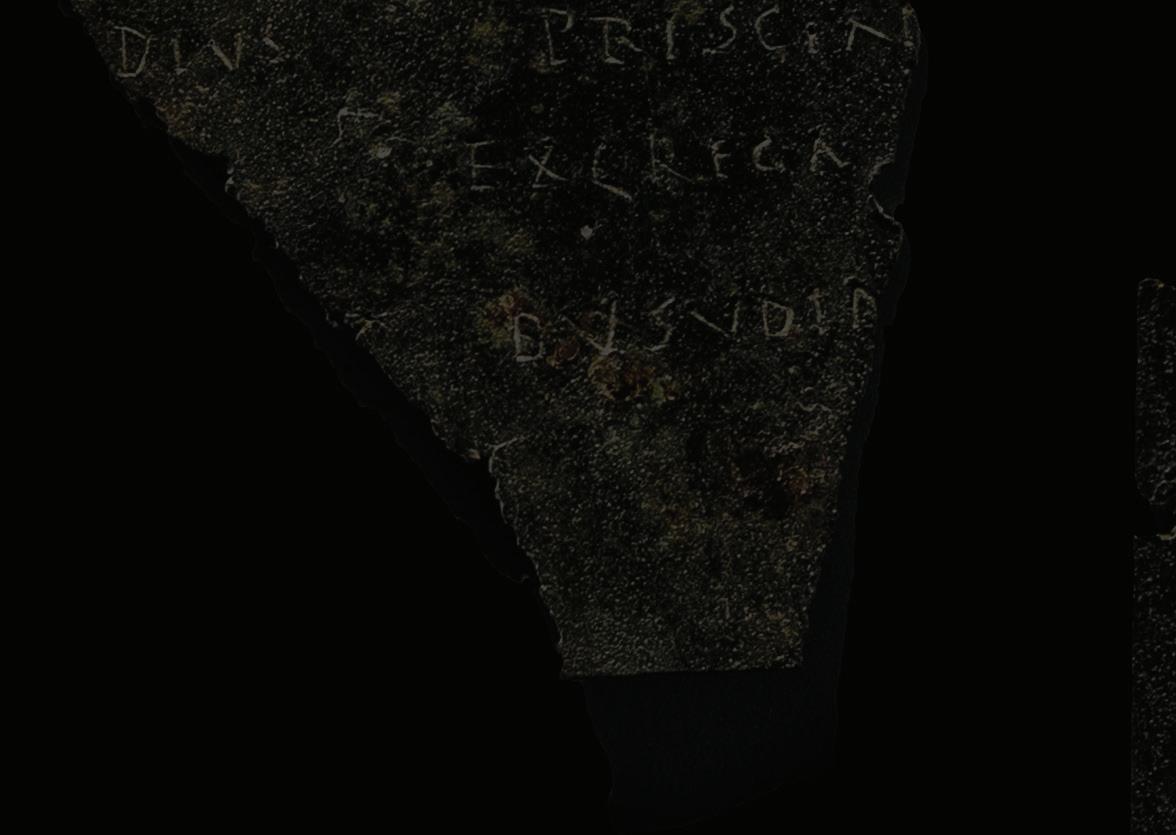


61
A Roman Bronze Military Diploma Fragment for Auxiliaries in Syria
Circa 114-140 A.D.
Width 3.8 cm (1 1/2 inches).
Provenance:
David John MacDonald (1943-2025; Ancient Numismatist and Illinois State University Professor of History from 1971-2005), Carlock, Illinois.
Published:
W. Eck, D. MacDonald, and A. Pangerl, “Neue Diplome für die Auxilien Syriens aus dem Zeitraum 114 bis 140,” Chiron, Iss. 32, 2002, fig. 6, pp. 438-441.
Translation:
The Emperor Caesar Hadrian Augustus, chief priest (pontifex maximus), in possession of tribunician power …, consul for the third time, …, to the cavalrymen and infantrymen who have served in the alae and cohorts, which are called …, and the First Ulpia Dacorum and … and the … archers, and the Second Classica archers, and … and the Fourth Cohort of the Callaeci Lucenses, and …, who are stationed in Syria under ….]
From the infantryman …, son of Staius, (something like PIT? may be a fragment of a cognomen), and …, his son, and …, his son/daughter.
Copied and checked from the bronze tablet which is fixed at Rome on the wall behind the temple of the Divine Augustus near Minerva.
$1,000 - 2,000


62
A Roman Bronze Military Diploma Fragment for Auxiliaries in Syria Circa 129 A.D. Length 6 cm (2 3/8 inches).
Provenance: David John MacDonald (1943-2025; Ancient Numismatist and Illinois State University Professor of History from 1971-2005), Carlock, Illinois.
Published: W. Eck, D. MacDonald, and A. Pangerl, “Neue Diplome für Auxiliartruppen in den Dakischen Provinzen, “Acta Musei Napocensis, vol. 38, iss. 1, 2001, pp. 42-45. [where originally identified as Dacian or British]
[Per Professor MacDonald’s notes]
One of two non-joining fragments comprising tabella I, subsequently re-attributed to soldiers in Syria (see W. Eck and A. Pangerl, “Neue Militärdiplome für die Provinzen Syria und Iudaea/Syria Palaestina,” Scripta Classica Israelica, vol. 24, 2005, pp. 116-118).
$1,000 - 2,000


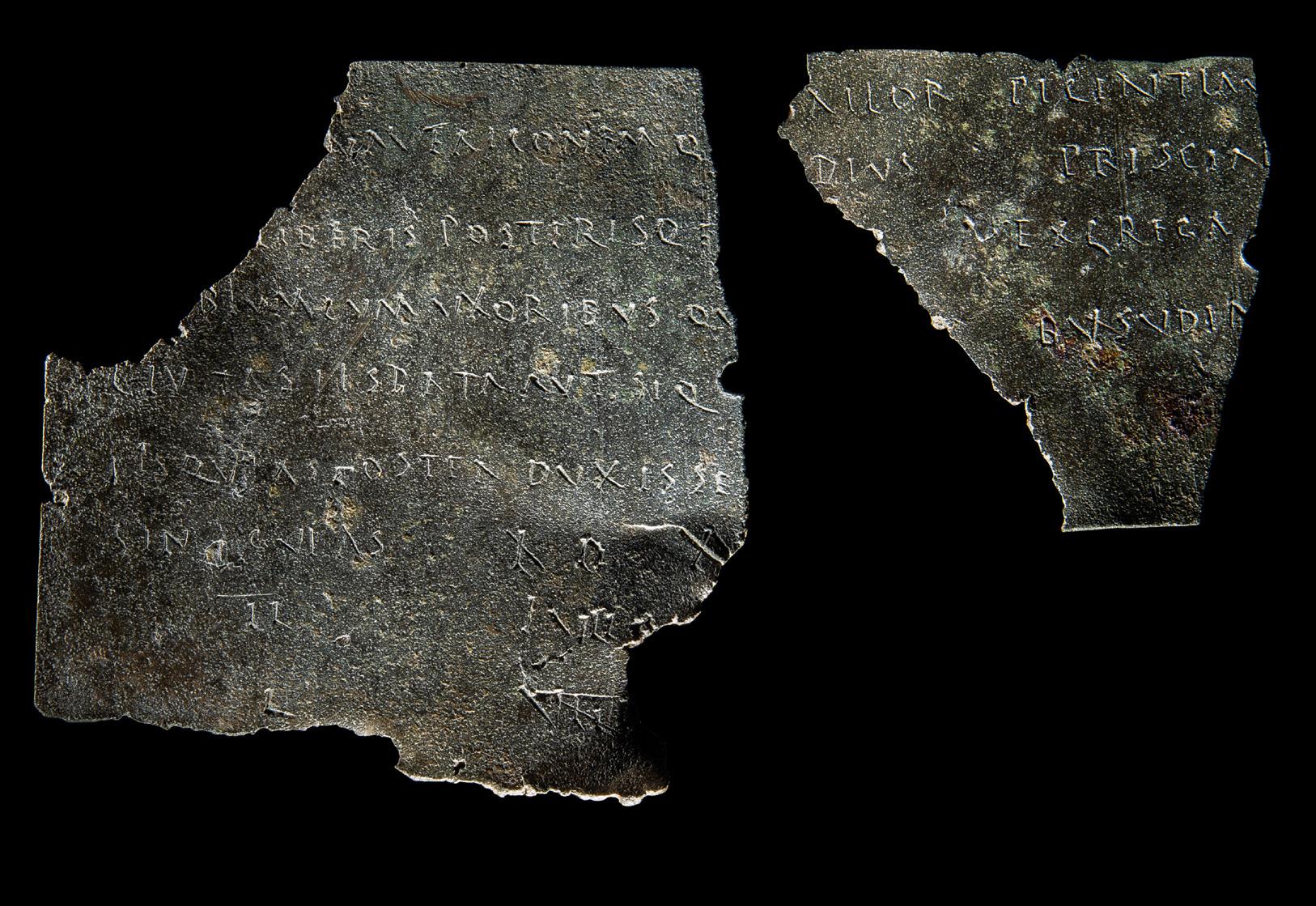


63
A Roman Bronze Military Diploma Fragment for Auxiliaries Circa 114 A.D.
Length 6 cm (2 3/8 inches).
Provenance:
David John MacDonald (1943-2025; Ancient Numismatist and Illinois State University Professor of History from 1971-2005), Carlock, Illinois.
Published:
W. Eck, D. MacDonald, and A. Pangerl, “Neue Militärdiplome mit neuen Konsulndaten,” Chiron, vol. 32, 2002, fig. 2, pp. 401-403.
Translation: Emperor Caesar Nerva Traianus Optimus Augustus Germanicus Dacicus, son of the deified Nerva, chief priest, holding tribunician power for the eighteenth time, acclaimed imperator seven times, consul six times, father of the fatherland, to the cavalrymen and infantrymen who have served [in the auxiliary units named here], and who have completed their service, he has granted Roman citizenship for themselves, their children, and their descendants, together with the right of legal marriage with the wives whom they had at the time citizenship was given, or, if any were unmarried, with those whom they afterwards married, provided that each man have only one wife.
Dated [in September …] in the consulship of Lucius Lollianus Avitus and Lucius Messius Rusticus.
[The diploma concerns the unit … commanded by …].
Witnesses: Tiberius Claudius Iustus, Marcus Maecius Eupator, Lucius Pullius Verecundus, Quintus Apidius Thallus, Gaius Julius Paratus, Tiberius Julius Urbanus, Publius Caulius Vitalis.
$1,000 - 2,000
64 A Roman Bronze Military Diploma for Auxiliaries in Syria 22 March 129 A.D. Length 7.3 cm (2 7/8 inches).
Provenance: David John MacDonald (1943-2025; Ancient Numismatist and Illinois State University Professor of History from 1971-2005), Carlock, Illinois.
Published: D. MacDonald, “New Fragmentary Diploma of the Syrian Army, 22 March 129,” Classica Israelica, vol. XXV, 2006, pp. 97-100.
Translation: Augusta Xoitana, and the First Flavia Agrippiana, and the First of the Ascalonitans archers, and the First Ulpia Dacorum, and the First Ulpia Archers of Roman Citizens, and the First Ulpia Petraeorum Archers of Roman Citizens, and the Second Classica, and the Second Gemina of Ligurians and Corsicans, and the Second Ulpia Equitata Archers of Roman Citizens, and the Second Italica of Roman Citizens, and the Third Thracum Syriaca, and the Fourth Callaecorum Lucensium, and the Fifth Ulpia Petraeorum Archers—who are in Syria under Publicius Marcellus— having completed twenty-five or more years of military service and having been honorably discharged,
to those whose names are written below, he has granted Roman citizenship, and the right of lawful marriage with the wives whom they then had when citizenship was given to them, or, if any were unmarried, with those whom they later married, provided it be only one each.
Dated on the 11th day before the Kalends of April (March 22), in the consulship of Gaius Juventius Celsus (for the second time) and Quintus Iulius Balbus.
…Copied and checked from the bronze tablet which is affixed at Rome on the wall behind the temple of the deified Augustus at Minerva.
$1,200 - 1,800

65
A Roman Bronze Military Diploma for Auxiliaries in Britain 17 July 122 A.D.
Length of largest fragment 8.9 cm (3 1/2 inches).
Provenance: David John MacDonald (1943-2025; Ancient Numismatist and Illinois State University Professor of History from 1971-2005), Carlock, Illinois.
Published:
W. Eck, D. MacDonald, and A. Pangerl, “Neue Militärdiplome für Truppen in Britannia, Pannonia Superior, Pannonia Inferior sowie in Thracia,” Revve des Études militaires anciennes, Iss. I, 2004, pp. 64-68.
Translation: Imperator Caesar, son of the divine Trajan Parthicus, grandson of the divine Nerva, Traianus Hadrianus Augustus, pontifex maximus, holding tribunician power for the sixth time, consul for the third time, proconsul — to the cavalrymen and infantrymen who have served in ten alae and thirty-seven cohorts, which are called: Ala I Pannoniorum Sabiniana, Ala I Pannoniorum Tampiana, Ala Hispanorum Asturum, Ala Tungrorum, Ala II Asturum, Ala Gallorum Picentiana, Ala Gallorum et Thracum Classiana civium Romanorum, Ala Gallorum Petriana milliaria civium Romanorum, Ala Gallorum Sebosiana, Ala Vettonum Hispanorum civium Romanorum, Ala Agrippiana Miniata, Ala Augusta Gallorum, Ala Augusta Vocontiorum civium Romanorum, Ala Celtiberorum, Ala I Thracum, Ala I Afrorum civium Romanorum, Ala Lingonum, Ala I Fida Vardullorum milliaria civium Romanorum, Ala I Frisiavonum, Ala I Vangionum milliaria, Ala I Hamiorum sagittaria, Cohors I Delmatarum, Cohors I Aquitanorum, Cohors I Ulpia Traiana Cugernorum civium Romanorum, Cohors I Morinorum, Cohors I Menapiorum, Cohors I Sunicorum, Cohors I Betasiorum, Cohors I Batavorum, Cohors I Tungrorum, Cohors I Hispanorum, Cohors II Gallorum, Cohors II Vasconum civium Romanorum, Cohors II Thracum, Cohors I Lingonum, Cohors II Asturum, Cohors II Delmatarum, Cohors II Nerviorum, Cohors III Nerviorum, Cohors III Bracarorum, Cohors III Lingonum, Cohors IIII Gallorum, Cohors IV Nerviorum, Cohors VII Thracum. which are in Britain, under Aulus Platorius Nepos, with twenty-five years of service completed and honorably discharged through Pompeius Falcon, whose names are written below. To them, their children, and their descendants he granted Roman citizenship and the right of lawful marriage with the wives they then had when citizenship was granted to them, or, if they were unmarried, with those they later married, provided it was one each. On the sixteenth day before the Kalends of August (July 17), in the consulship of Tiberius Julius Capito and Lucius Vitrasius Flamininus (A.D. 122).
To a man of the ala Gallorum Picentiana, commanded by Tiberius Claudius Priscianus … son of Busidius …
…Tiberius Claudius Menander, Aulus Fulvius Iustus, Tiberius Julius Urbanus, Lucius Pullius Daphnus, Lucius Nonius Victor, Quintus Lollius Festus, Lucius Pullius Anthus.
$1,200 - 1,800
66
Two Roman Bronze Military Diploma Fragments for the Fleet of Misenum Reign of Emperor Hadrian, 117-138 A.D. Length of largest 8.3 cm (3 1/4 inches).
Provenance: David John MacDonald (1943-2025; Ancient Numismatist and Illinois State University Professor of History from 1971-2005), Carlock, Illinois.
Published:
W. Eck, D. MacDonald, and A. Pangerl, “Neue Militärdiplome für Truppen in Italien: Legio II Adiutrix, Flotten und Prätorianer,” Zeitschrift für Papyrologie und Epigraphik, vol. 139, 2002, pp. 200-201.
Translation:
[The Emperor Caesar Trajan Hadrian Augustus, son of the deified Trajan Parthicus, grandson of the deified Nerva, pontifex maximus, holding tribunician power ..., consul ...]
To those who served in the praetorian fleet at Misenum, [who have completed twenty-six or more years of service and have been honorably discharged,] whose names are written below, he granted to them, their children, and their descendants the Roman citizenship and the right of legal marriage (conubium) with the wives whom they had at the time citizenship was given, or, if any were unmarried, with those whom they should later marry, but only one each.
Given before the day ..., when Gaius Antonius ... and ... were consuls.
To Lucius Valerius ..., son of ..., from Taru..., and to his wife A...a, daughter of Paullus. Copied and checked from the bronze tablet which is fixed at Rome on the wall behind the temple of the divine Augustus at Minerva.
$1,500 - 2,500


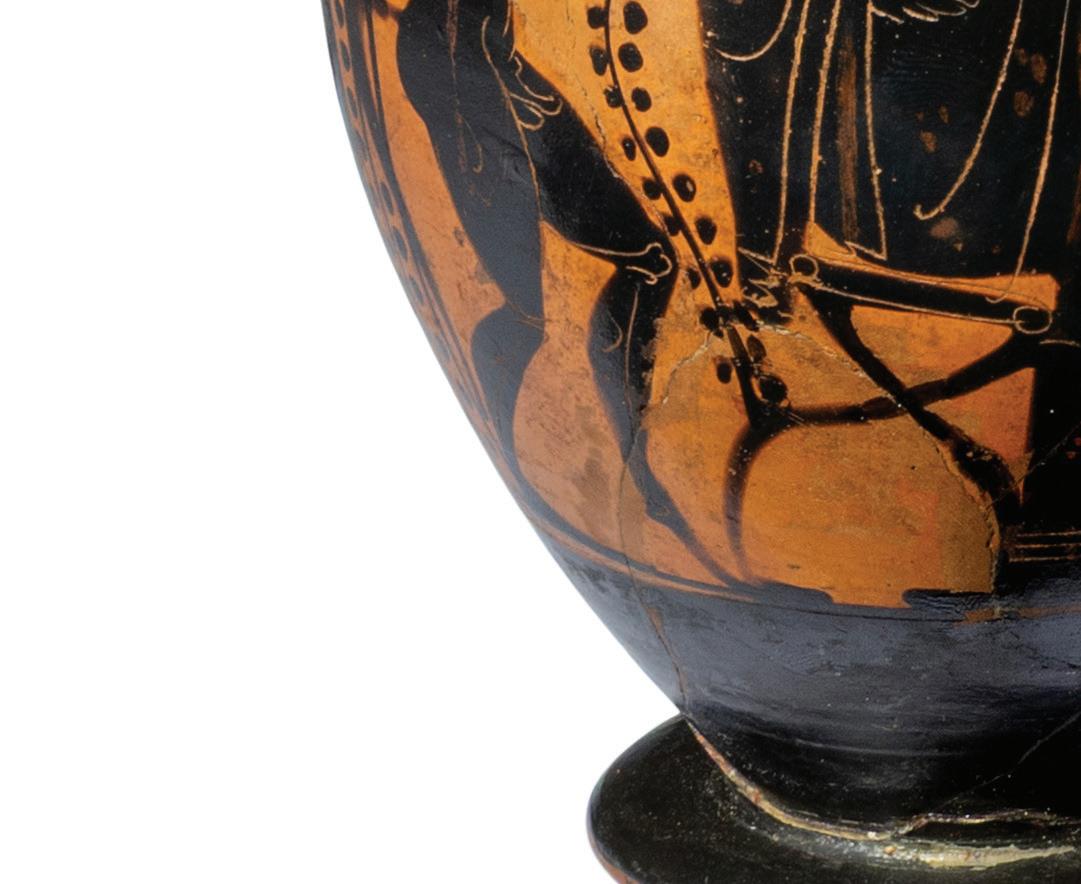


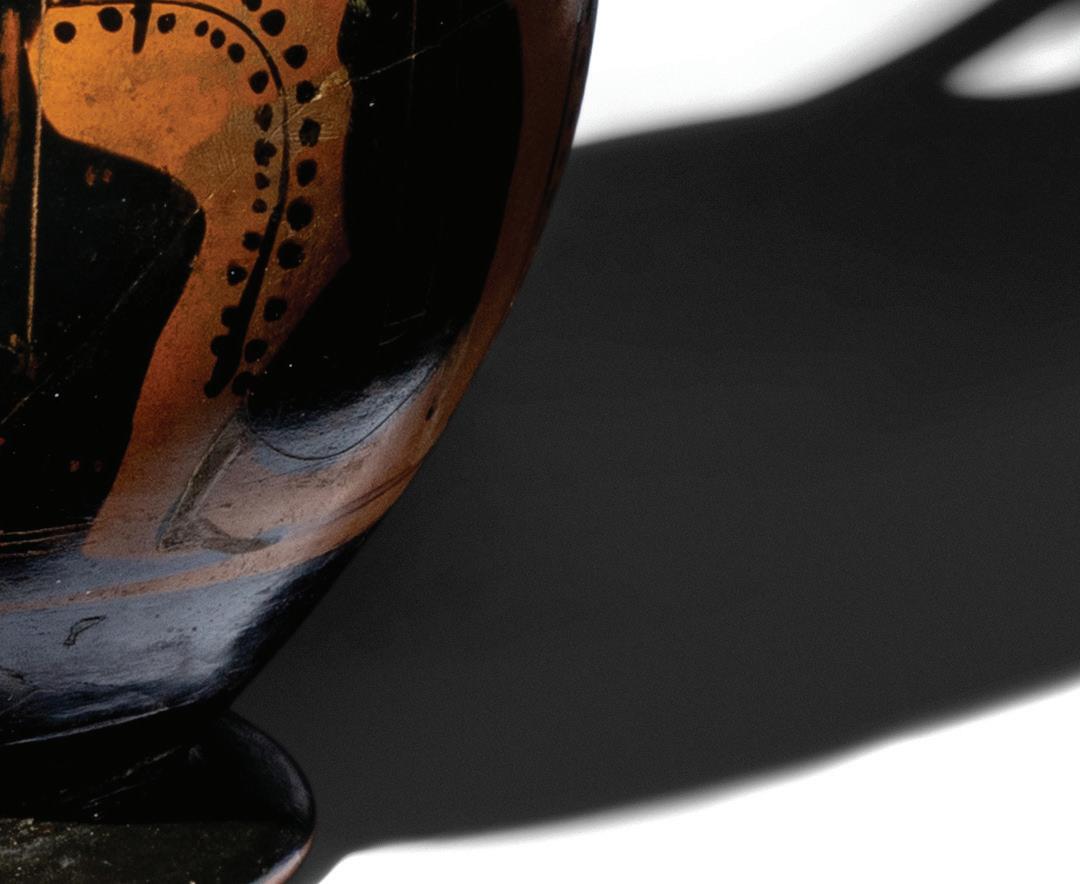

67
An Attic Black-Figured Trefoil Oinochoe
Attributed to the Painter of Brussels R 236, Class of London B 495, Circa 500-490 B.C. Height 22.2 cm (8 3/4 inches).
Property from a Chicago Collection
Provenance:
H. Larrain Collection, New York, prior to 1954.
Parke-Bernet Galleries, New York, Egyptian, Greek, Etruscan, and Roman Art [...], 1 December 1954, Lot 115. R.G. Maeder, Interlaken, Massachusetts.
Parke-Bernet Galleries, New York, Antiquities, 20 January 1967, Lot 206.
Sideo Fromboluti (1920–2014) & Nora Speyer (1923–2024), Artists, New York.

Sotheby’s, New York, Antiquities Including the Collection of Sideo Fromboluti & Nora Speyer: Part II, 8 June 2011, Lot 71.
Published:
J.D. Beazley, Attic Black-figure Vase-Painters, Oxford, 1956, p. 697, addendum to pp. 428-429.
J.D. Beazley, Paralipomena, Oxford, 1971, pp. 184 and 188, 2bis.
A.J. Clark, Attic Black-figured ‘Olpai’ and ‘Oinochoai,’ diss., New York University, 1992, cat. no. 1385.
Beazley Archive Database no. 306646
$8,000 - 12,000



68
An Attic Red-Figured Lekythos Circa Mid 5th Century B.C. Height 16.8 cm (6 5/8 inches).
Provenance:
Collection of Wilhelm Horn (1870-1959), Berlin; thence by descent. Christie’s, London, Fine Antiquities, 11 December 1987, Lot 189. Private Collection, United States. Christie’s, New York, Antiquities, 27 October 2009, Lot 165.
Exhibited:
Germany, Bonn, Rheinisches Landesmuseum, Antiken aus Rheinischem Privatbesitz, 1973-1974.
Published:

Antiken aus rheinischem Privatbesitz, Rheinischen Landesmuseum, Bonn, 1973, p. 46, no. 62, pl. 28.
$2,000 - 3,000





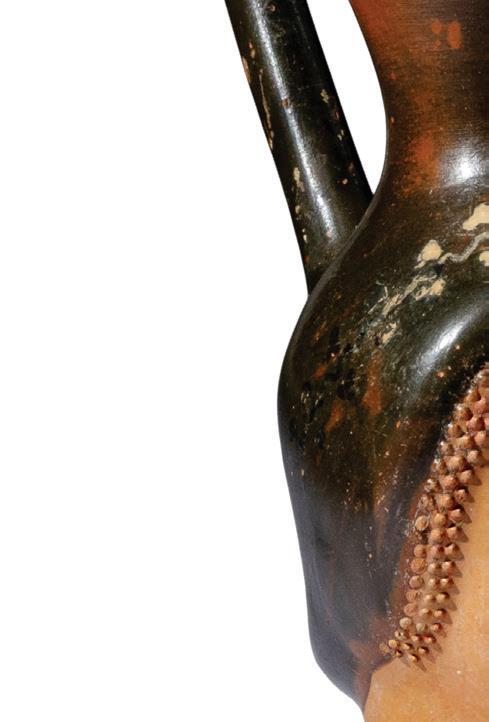




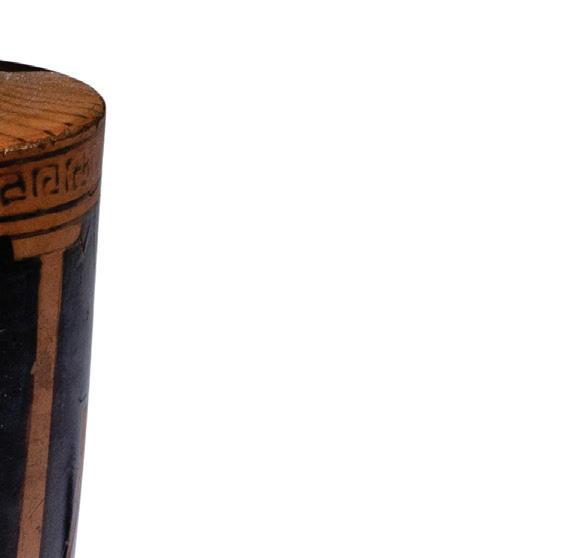



69
A Greek Painted Terracotta Figural Oinochoe Circa 5th Century B.C. Height 16.2 cm (6 3/8 inches).
Property from a Private Minnesota Collection
Provenance: Galerie Nefer, Zurich; where acquired by the present owner in the 1990s.
$2,000 - 3,000





70
A Roman Marble Torso Circa 1st-2nd Century A.D. Height 44.5 cm (17 1/2 inches).
Provenance:
Private Collection (possibly Worthy Gilson), Ray Mill House, Whitshire, England. [Inv. no. ‘8473’]
Phillips, Bath, Contents of Ray Mill
Reybridge, Chippenham,
$15,000 - 20,000

, 24-25 October 1995, Lot 128.



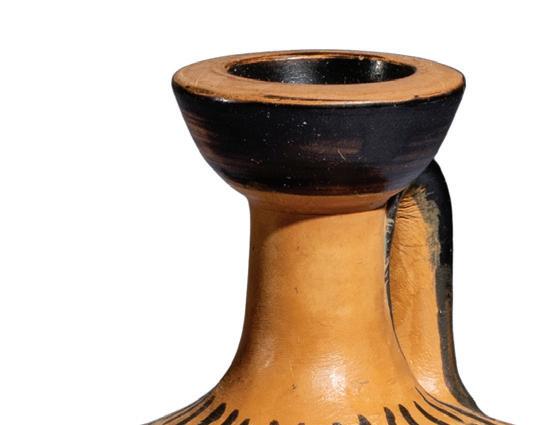




72
An Attic Buff-Ware Kylix

71
An Attic Black-Figured Lekythos Circa 5th Century B.C. Height 14 cm (5 1/2 inches).
Property from the Collection of Mr. Felix Brejente, Schaumburg, Illinois
Provenance: Harlan J. Berk, Chicago, 115th Buy or Bid Sale, 2 August 2000, Lot 603. Acquired by the present owner from the above, 26 August 2021.


$800 - 1,200


Provenance: Munzen und Medaillen, Basel, 1970-1990. Private Collection, Germany. Sotheby’s, New York, Antiquities, 12 June 2003, Lot 162.
$800 - 1,200

73
A Roman Marble Fragment of a Seated Offical Circa 3rd-4th Century A.D.
Height 43 cm (17 inches).
Provenance:
Art Market, New York, 2000s.
$6,000 - 8,000





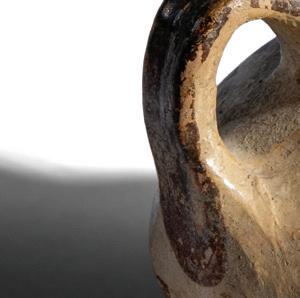


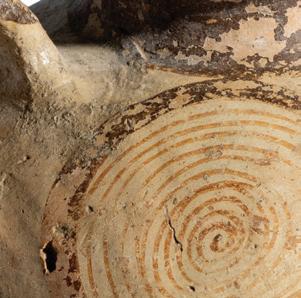

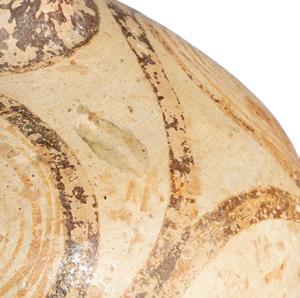




75 A Mycenaean Painted Terracotta Stirrup Jar
Circa 1400-1300 B.C.


74 A Mycenaean Painted Terracotta Jar
Circa 1600-1500 B.C.
Width 10.8 cm (4 1/4 inches).
Provenance: Jean-Alain Mariaud de Serre Collection, Paris. Royal Athena Galleries, New York, acquired prior to 2003. [with Art Loss Register certificate]
$10,000 - 15,000



Height 16.8 cm (6 5/8 inches).
Provenance:
Sotheby’s, New York, Antiquities and Islamic Art, 1 June 1995, Lot 287.
$3,000 - 5,000





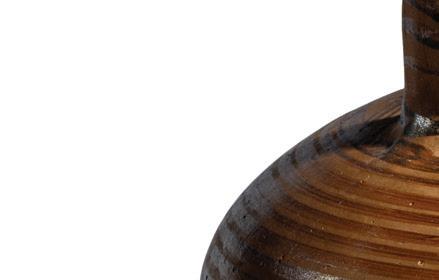



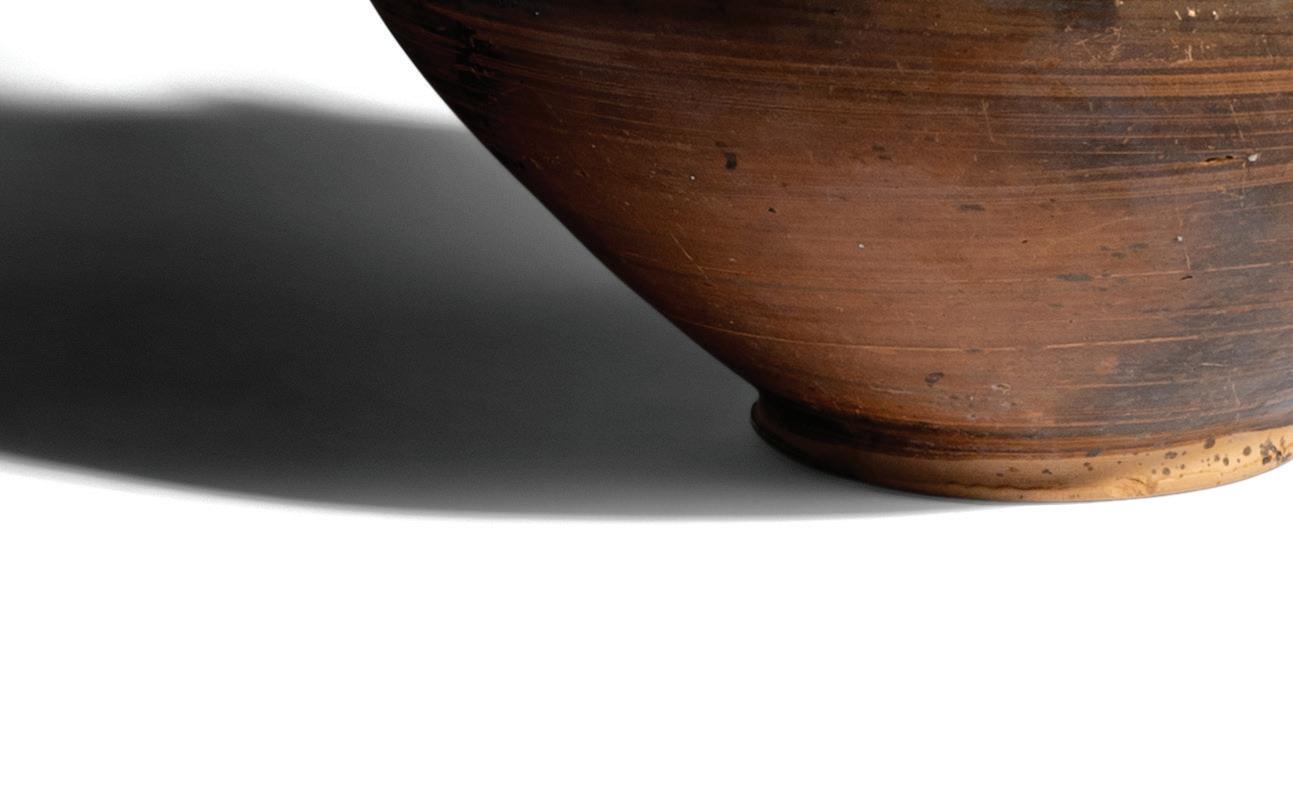



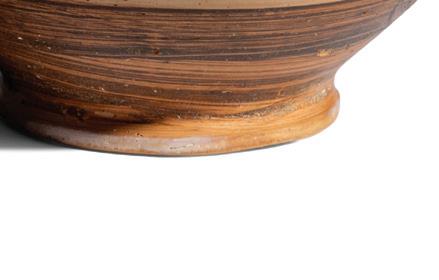



A Mycenaean Painted Terracotta Amphora
Circa 1400-1300 B.C.
Width 32.4 cm (12 3/4 inches).
Sotheby’s, New York, Antiquities and Islamic Art, 1 June 1995, Lot 56.
$4,000 - 6,000

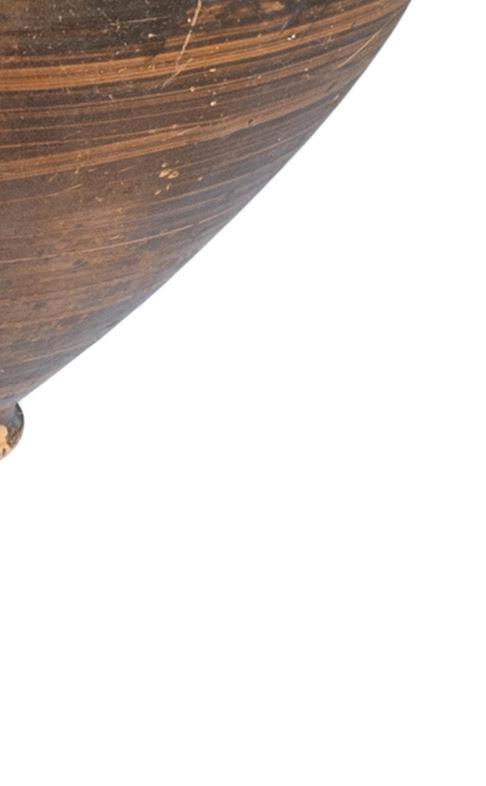


77
An Over-Lifesized Roman Marble Torso Circa 2nd Century A.D.
Height 66 cm (26 inches).
Property from a Private Collection
Provenance:
Ariadne Galleries, New York. Private Collection, Chicago, acquired from the above, 23 February 1989.
Nude apart from the chlamys (mantle) pinned and partially draped over one shoulder and the balteus (swordstrap) slung across the broad chest, this torso belonged to the full-length statue of an idealized hero or perhaps even a member of the Imperial family. With powerful shoulders and well-defined pectorals, the tensed abdominals, with a curved linea alba and corresponding curvature at the spine, indicate that the fulllength statue stood in a pose rather more dynamic than a staid Polykleitan contrapposto. The chlamys covers the left pectoral to the nipple and the upper portion of the bicep, extends down the back on the same side, and is folded over the preserved forearm. The balteus crosses the torso diagonally, slackening towards the left hip, where it connects to the sword scabbard, which is raised slightly aloft and to the side. The quality of the carving is immediately evident in the deeply carved drapery of the chlamys, the great attention to detail paid to the texture and three-dimensionality of the leather balteus, and the subtleties of the anatomy, including the vein on the upper surface of the bicep, and the delicate rendering of the clavicles and jugular.
The distinctive movement of the torso takes direct inspiration from a late fifth-century B.C. statue of Diomedes attributed to the Greek sculptor Kresilas, who adapted the Polykleitan canon to depict the Homeric hero absconding with the Palladion of Troy. Surviving Roman copies and adaptations of the statue are classified as the ‘Cumae-Munich Diomedes’ type, named after the most famous surviving examples from Cumae (currently in the Museo Archeologico Nazionale di Napoli, inv. no. 144978) and in Munich (Glyptothek, inv. no. 304). While already admired in the Augustan period, the specific pose of this idealized body experienced a surge in popularity during the Hadrianic period, as discussed by C. Maderna (noted below).
While originally conceived to represent a mythological character, the body of the Cumae-Munich Diomedes type enjoyed arguably greater popularity when combined with portrait heads - a continuation and refinement of the quintessentially Roman tradition that began in the Republican period. This seems to be especially true for the portraiture of Hadrian and his successors. The best preserved of these includes the Hadrian (r. 117-138) found in the Roman theatre in Vaison-la-Romaine (Musée Archéologique Théo Desplans), and Lucius Verus (r. 161-169 A.D.) and the colossal Alexander Severus (r. 222-235 A.D.) with portrait head re-carved from that of Elagabalus in Naples (both from the Farnese collection, Museo Archeologico Nazionale di Napoli, inv. No 6095 and 4993 respectively).
The Diomedes-type served as an eminently adaptable visual paradigm - attractive and ideologically well-suited for imperial representation. Physically commanding, it combined an undeniable vigor with a simultaneous sense of restraint that visually embodied a host of moral virtues that appealed to Hadrian and his successors. The over lifesized proportions and high-quality of carving suggest that the present torso belonged to an important statue, but without the head, it is not possible to determine concretely whether a hero or emperor was represented.
Another instructive Roman copy of the type is in Rome (Galleria Borghese, inv. no. IX). For a full discussion and catalogue of Roman portraits joined to the body type of Diomedes, see C. Maderna, luppiter, Diomedes und Merkur als Vorbilder fur romische Bildnisstatuen (Heidelberg, 1988), 56-80, 196-222. On the heroic nude body deployed as a “costume” more generally, see C. Hallett, The Roman Nude: Heroic Portrait Statuary 200 B.C.-A.D (2005), with the Diomedes type discussed and illustrated on pages 183–184, 191-192, and 322-326. For a discussion of Hadrianic ethos and the use of the Diomedes body type in the portraiture of Hadrian and his successors, see F. C. Albertson, “A Portrait of Hadrian as Diomedes,” Muse (Vol. 27, 1993–94 ), 11-29.
$60,000 - 80,000








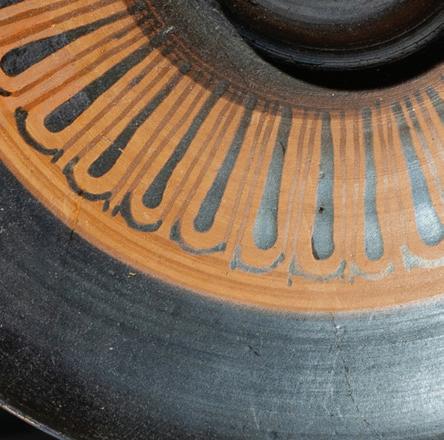


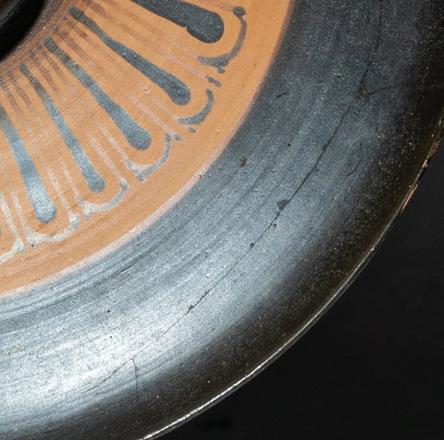



79
An Apulian Red-Figured Fishplate

Provenance:




A Faliscan Black-Glazed Phiale Mesomphalos

Circa 5th-4th Century B.C. Diameter 21 cm (8 1/4 inches).


Royal Athena Galleries, New York, 1991. John Kluge (Morven Collection), Virginia, acquired from the above. Antiquities, 8 June 2012, Lot 120.

Christie’s, New York, $2,000 - 3,000



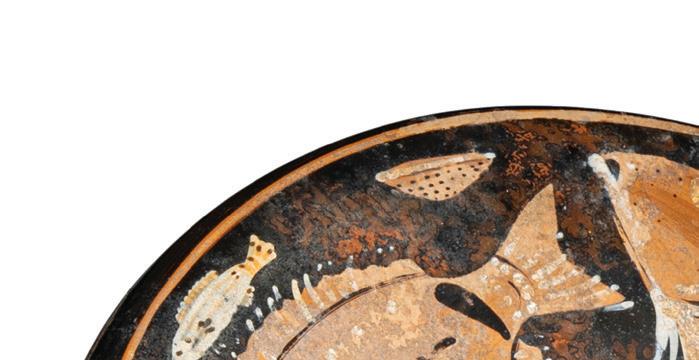





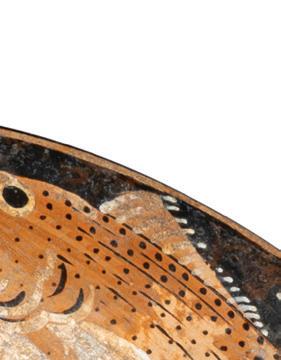



$5,000 - 7,000




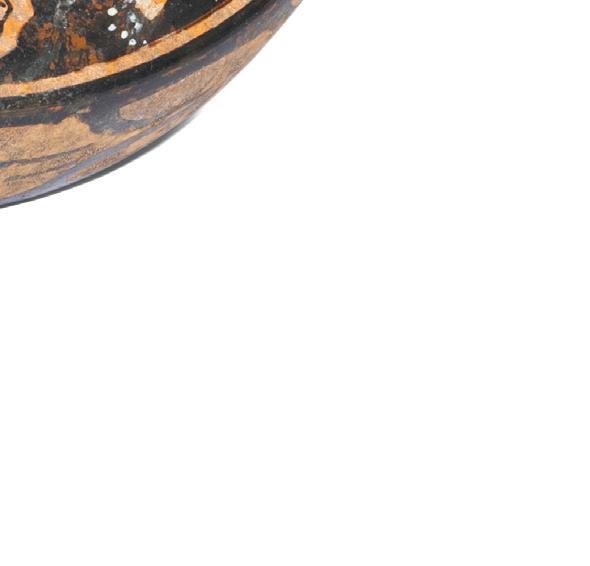



80
A Roman Marble Venus Circa 2nd Century A.D. Height 34.3 cm (13 1/2 inches).
Property from a West Hollywood Collection
Provenance: Sotheby’s, London, Antiquities, The Property of the Thetis Foundation and Other Owners, 23 May 1991, Lot 300.
$5,000 - 7,000


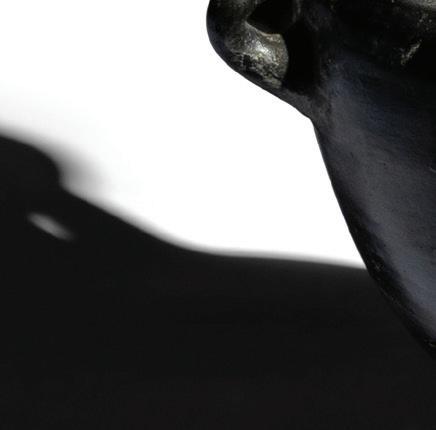







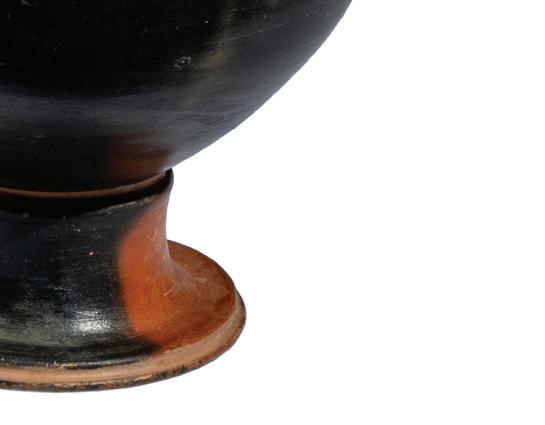





An Apulian Black-Glazed Hydria Circa 4th Century B.C.




Provenance
Jorge
111th Buy or Bid Sale


$7,000 - 9,000







Height 30.5 cm (12 inches).


Provenance:





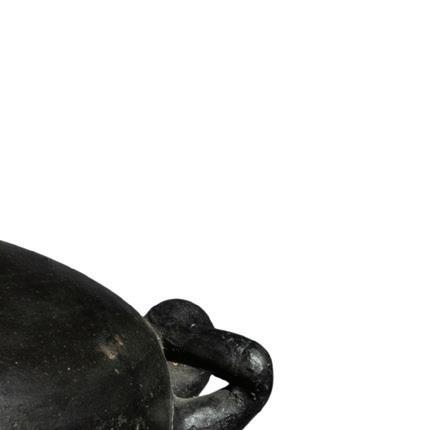

Private Estate, Connecticut, acquired in the mid 1980s. Hindman Auctions, Chicago, Antiquities and Ethnographic Art, 18 November 2021, Lot 192.



$3,000 - 5,000





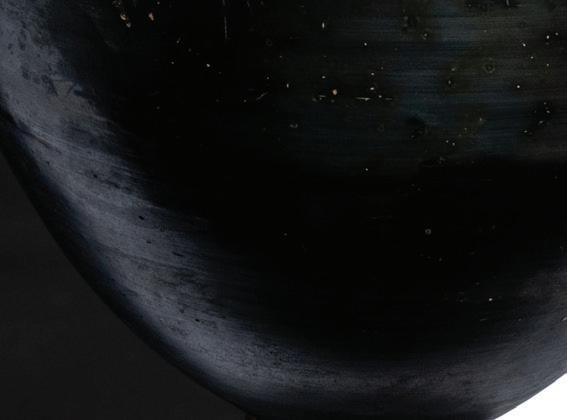



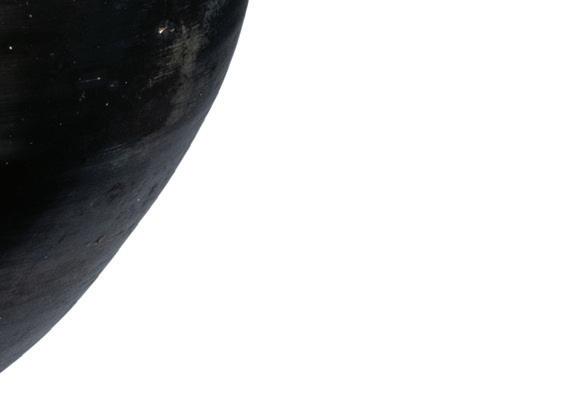


83
A Late Roman or Byzantine Marble Togatus Holding a Mappa Circa 5th-7th Century A.D. Height 58 cm (22 3/4 inches).
Provenance: Private Collection, New York, primarily formed in the 1980s-1990s.
Fortuna Fine Arts, New York. Artemis Galleries, Louisville, Colorado, Exceptional Ancient, Ethnographic, Fine Art, 27 June 2025, Lot 40.
$8,000 - 12,000


84
Two Etruscan Bucchero Kyathoi
1/2 inches).
Property from a California Private Collection

Provenance: Art Market, California, 2000s.
$2,000 - 3,000

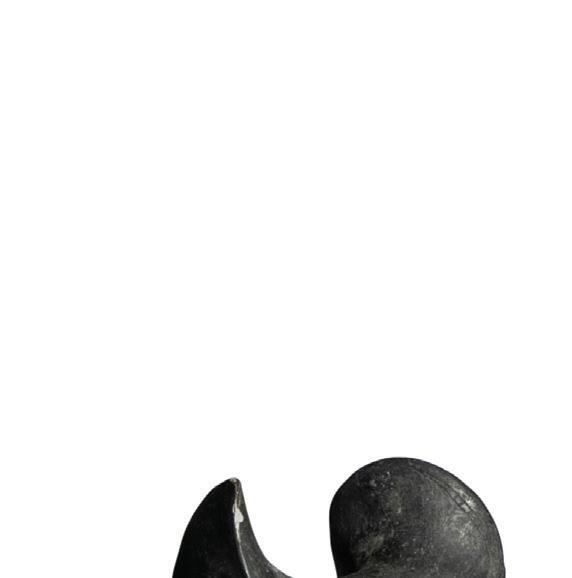










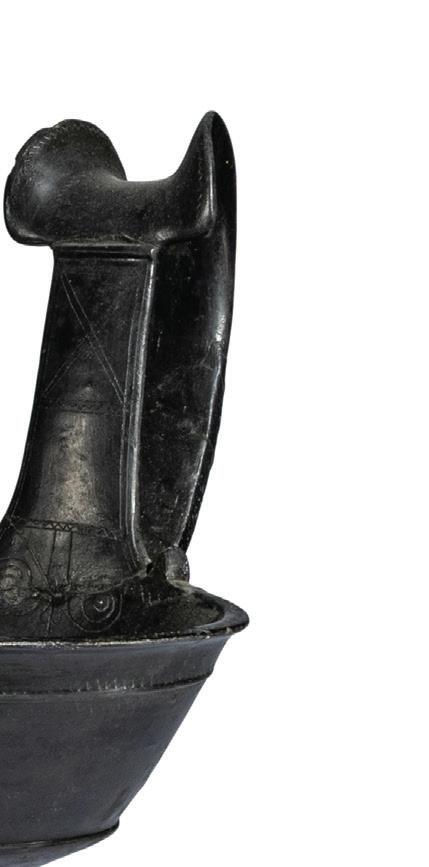
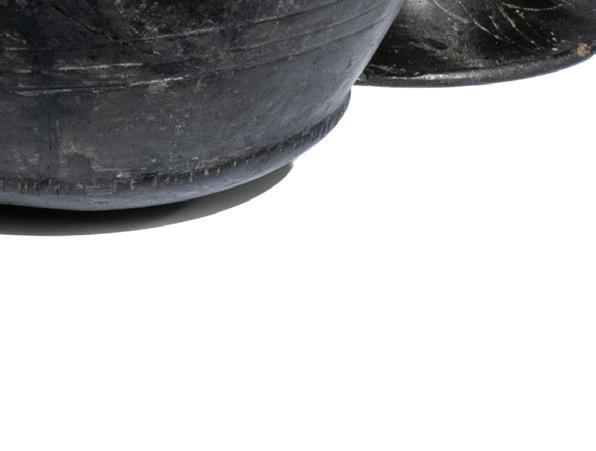


85
An Etruscan Black-Figured Amphora Circa 300 B.C. Height 40.5 cm (16 inches).

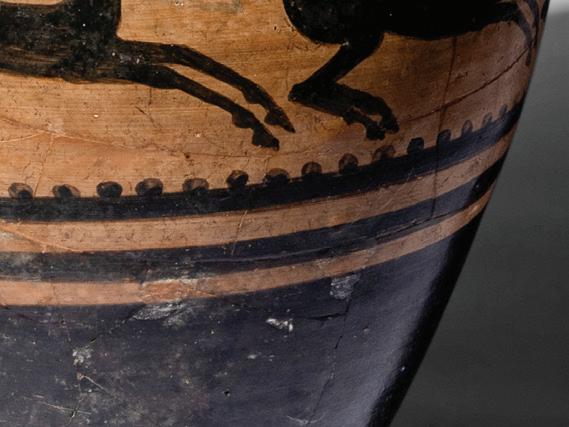


Harmer Rooke Galleries, New York, prior to 1 May 1978. [Inv. no. 61295] The Dr. Jerry Buss Collection (1933-2013), Los Angeles. California. Ira & Larry Goldberg Auction, Los Angeles, The Collectibles Auction Featuring Fine Documents and Memorabilia,




86
An Etruscan Terracotta Lidded Urn
Circa 6th Century B.C.
Height 60 cm (23 5/8 inches).
Provenance:
Patti Cadby Birch Collection (1923-2007), New York, acquired in the 1980s. Stair Galleries, Hudson, New York, Anonymous Sale, 21 June 2008, Lot 142. [accompanied with a laboratory examination report]
[Art Loss Register no. S00139418]
$4,000 - 6,000

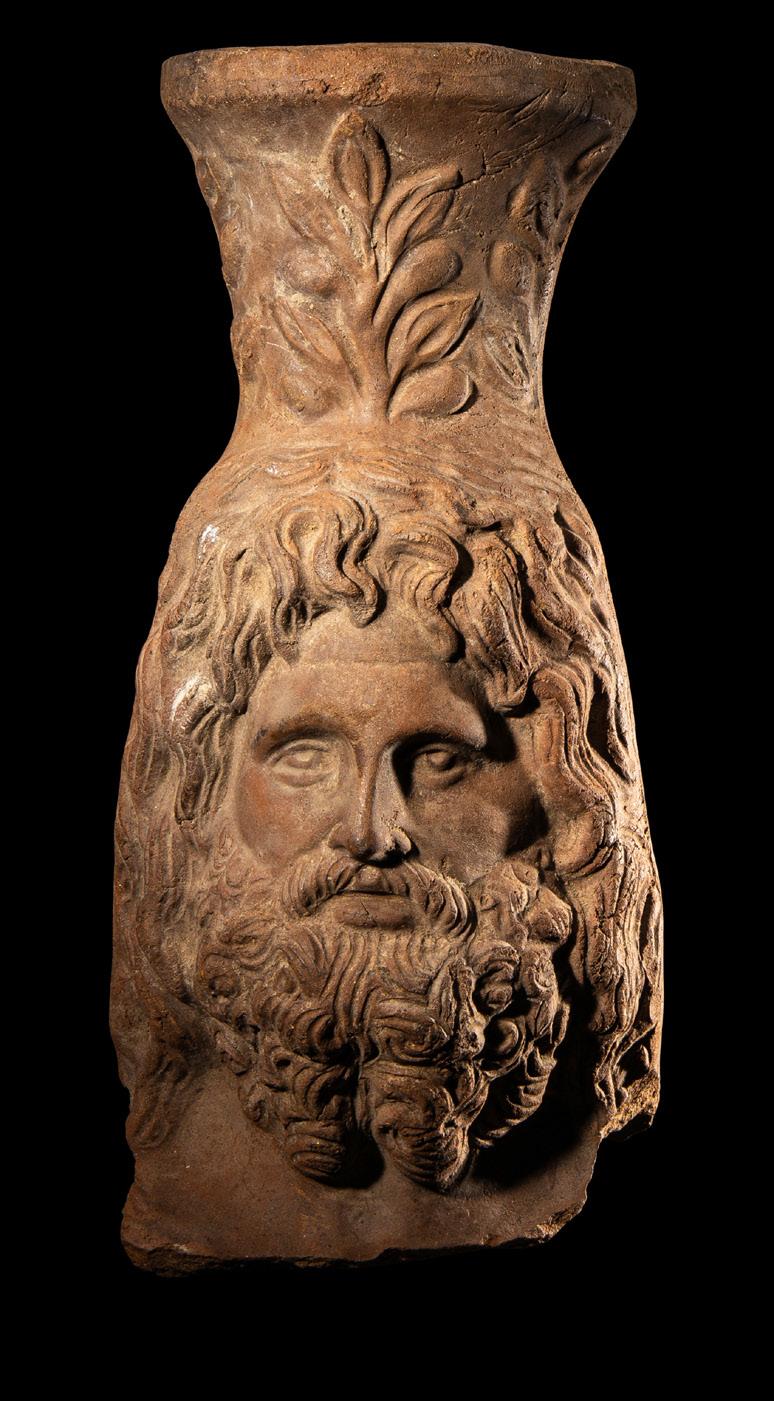

87
A Romano-Egyptian Terracotta Head of Serapis
Circa 1st Century B.C.-1st Century A.D.
Height 23 cm (9 inches).
Property from a Private Minnesota Collection
Provenance:
Christie’s, South Kensington, Antiquities, 5 October 2000, Lot 345.
$2,000 - 3,000
88
A Hellenistic Bronze Asklepios Circa 3rd Century B.C. Height 16.2 cm (6 3/8 inches).
Property from a Private Minnesota Collection
Provenance:
George Ortiz (1927-2013), Geneva, Switzerland.
Royal Athena Galleries, New York, prior to 2001 (Art of the Ancient World, vol. XII, no. 44); where acquired by the present owner.
$12,000 - 18,000



90
A Roman Terracotta Figure of a Youth Circa 1st Century A.D. Height 17 cm (6 3/4 inches).
Property from a Private Minnesota Collection
Provenance:
Royal Athena Galleries, New York; where acquired by the present owner in 2001.
$1,000 - 2,000


89
A Roman Bronze Togatus
Circa Early 1st Century A.D.
Height 19.4 cm (7 5/8 inches).
Provenance: Private Collection, Germany.
Sotheby’s, New York, Antiquities and Islamic Works of Art, 8 December 2000, Lot 107.
Phoenix Ancient Art, Geneva, 2005 (Phoenix Ancient Art, vol. 1, pp. 74-75, no. 55); where acquired by the present owner.
Immaculately cast in bronze, a young man is shown in an elaborately draped toga. A quintessentially Roman and symbolically charged garment, the toga is rendered here with sweeping sinus folds over the right thigh and pendulous umbo tucked in at the waist. Longer pleats run diagonally from the crown of the head at the rear, along the lowered right arm, and are drawn against the calf of the left leg. That foot wears a closed leather boot (calceus), and along with the vertical stripe running along the
right side of the garment (once inlaid, perhaps in silver) indicates the wearer was of high rank. The back edge of the garment is pulled up to cover the neck and partially veil the head (capite velato), a pious mode used by officials and priests when performing religious rites. While the right arm is missing beneath the elbow, its positioning indicates that it was once outstretched and proffering a patera, a shallow vessel used to pour libations. The left hand grasps a partially preserved cylindrical object, perhaps a scroll or staff.
The beardless youth has a fleshy oval face dominated by large eyes with deeply drilled pupils and exhibiting traces of silver gilding. The coiffure visible is made up of a thick fringe of comma-shaped locks, reminiscent of a member of the JulioClaudian family and perhaps even young Nero. The small scale of the statuette indicates that it was a ‘genius’ – a representation of an official or member of the imperial family that would have been worshipped in aristocratic domestic contexts. A remarkably similar example in Baltimore (Walters Art Museum, inv. no. 54.2329) has been plausibly identified as Nero, and the two statuettes surely served the same function in private devotion to the imperial family.
$50,000 - 70,000

The Gréau Goddess
A Roman Bronze Statuette of Juno Circa 1st Century B.C.
Height 17.8 cm (7 inches).
Provenance:
Jules Charvet (1824-1882), Château du Donjon, Le Pecq, France.
Julien Gréau (1810-1895), Troyes, France, acquired 1866-1878.
Hôtel Drouot, Paris, Collection Julien Gréau: Catalogue des bronzes antiques et des objets d’art du Moyen-âge et de la Renaissance, 1-9 June 1885, Lot 935. [illustrated]
Kevorkian, Paris, 2005.
Sotheby’s, New York, Antiquities, 10 December 2008, Lot 34.
Phoenix Ancient Art, New York, 2016 (Crystal 6, pp. 92-97, no. 16); where acquired by the present owner.
Exhibited:
France, Paris, Musée rétrospectif, Palais de l’Industrie, Champs-Elysées, 1865. France, Paris, Exposition Universelle (Third Paris World’s Fair), Palais du Trocadéro, 1 May10 November 1878.
Published:
Union Centrale Des Beaux-Arts Appliqués a l’Industrie, Exposition de 1865. Palais de l›Industrie. Musée Rétrospectif, Catalogue, Paris, 1865, p.7, no. 66.
F. Lenormant, “Union Centrale des Beaux-Arts appliqués à l’Industrie. Musée rétrospectif. Les antiques,” Gazette des Beaux-Arts, vol. I, 1866, pp. 174-175. [illustrated]
F. Lenormant, “Books and Monuments Bearing upon Figured Representations of Antiquity,” The Contemporary Review, London, vol. XXXIII, September 1878, p. 849.
O. Rayet, “L’art grec au Trocadéro,” in L. Gonse, ed., L’art ancien au exposition de 1878 , Paris, 1879, pp. 75-76; p. 70. [illustrated]
F. Wieseler, “Archäologische Excurse zu Pausanias I, 24,3 und I, 27,8,” Nachrichten von der königl. Gesellschaft der Wissenschaften und der Georg-Augusts-Universität, 1886, p. 45.
K. Sittl, Archäologie der Kunst, Munich, 1895, p. 237, note 18.
S. Reinach, Répertoire de la statuaire grecque et romaine, vol. II.2, Paris, 1908, p. 333, no.1.
International Herald Tribune, advertising supplement, Saturday- Sunday, 7-8 January, 2006, p. 12. [illustrated]
Apollo Magazine, February 2006, p. 27 (advertisement).
The New York Times, Sunday, 18 March 2007, section 3, p. 3. [illustrated]
$80,000 - 120,000



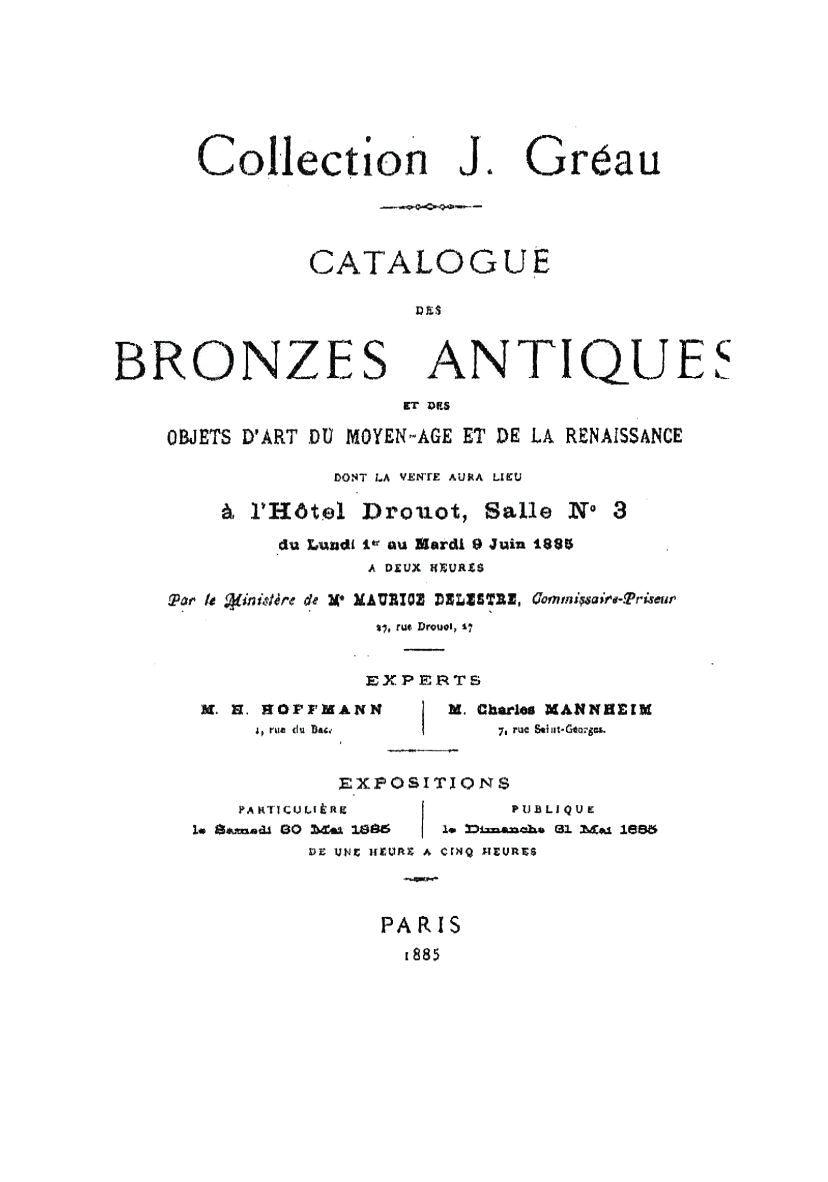







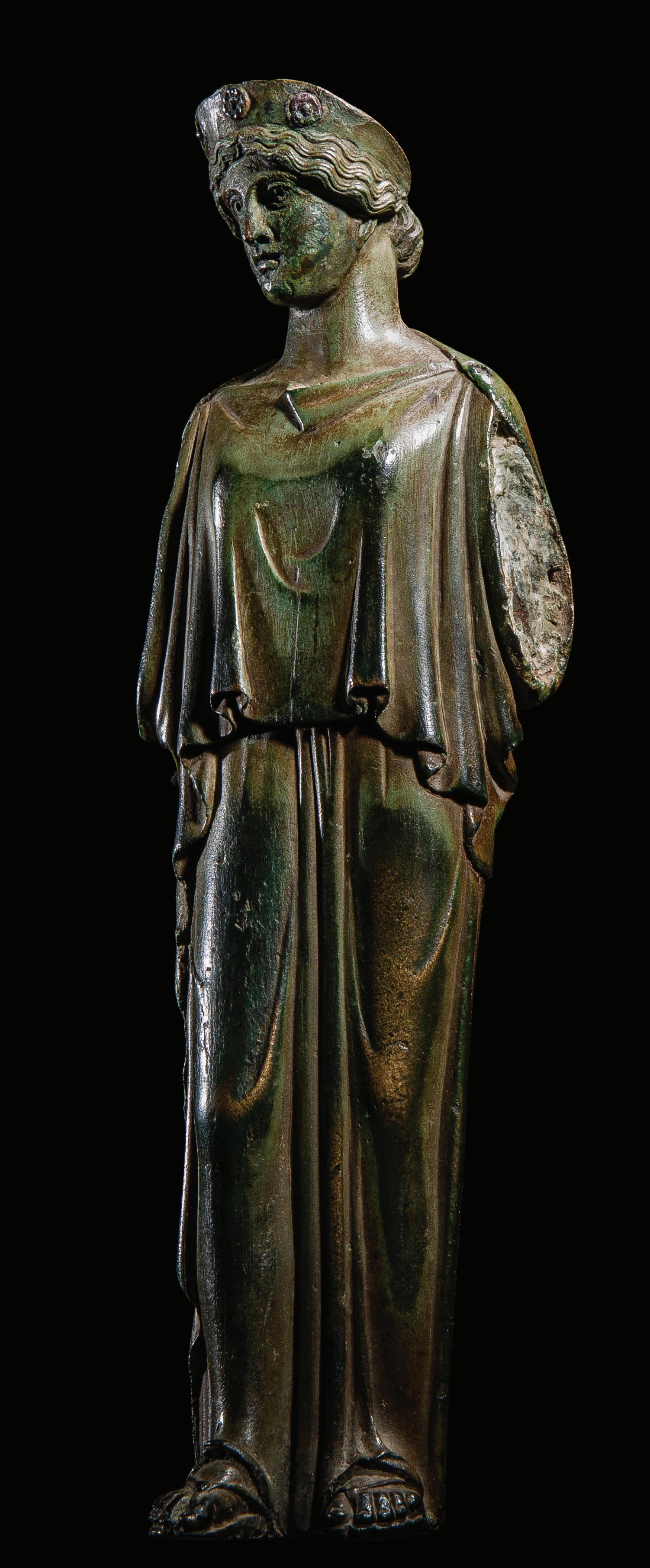


















Regal in miniature, the pleasure of this statuette lies in the abundant attention the sculptor has lavished upon each detail, from elements of posture and costume to the inscrutable expression on the goddess’s fair face. Standing tall, she is by no means stiff or trapped in a generic contrapposto, but rather shifts her weight subtly in a small forward step. She wears a peplos, a woolen garment originating in Archaic Greece, where it was used to dress both maidens and matrons, as well as mortals and divinities. Here, the woven rectangular cloth is wrapped around the body, pinned at each shoulder, and belted at the waist. The overhang (apoptygma) falls in symmetrical folds over the high bosom and drapes artfully at the hips with much longer sections forming swallow-tail pleats down the sides. The arms were likely separately cast and are now missing. At the front, the skirt is enlivened by her forward movement, with the right knee pressing against the fabric and creating a channel between the legs, whereas at the rear, the drapery descends column-like to the feet. Remarkably, both feet survive, are clad in thong-style sandals, and have been rendered in exceptional detail down to each toenail.
No less attention has been spared above the shoulders, where a clear understanding of anatomy is evident at the neck, with subtly tensed muscles supporting the slightly turned and inclined head. The face itself is a soft oval dominated by large eyes with deep, focused pupils beneath a smooth brow. The full lips bear no hint of a smile, and, with the positioning of the head and imposing eyes, the overall effect is somewhat imperious. The hair is a mass of wavy locks parted centrally, combed over the temples and ears, and gathered in a chignon at the nape. A high crown is nestled within this coiffure, adorned by gilded rosettes. Such floral diadems have no clear Greek antecedents (although lofty polos crowns are the eventual precursors) and instead seem to be rooted in Italic tradition or

Roman invention, reserved to adorn the brows of goddesses. Loose parallels can be found in a marble archaistic Athena in New York (Metropolitan Museum of Art, inv. no. 12.157) and the famous terracotta Faliscan bust of Juno in Rome’s Museo Nazionale Etrusco di Villa Giulia.
The sculptor drew heavily on the so-called ‘Severe style’ of the second quarter of the 5th century B.C., both for the goddess’s costume and facial features. One source of artistic inspiration was certainly bronze mirror handles in the form of peplophoroi that were produced in some quantity in Athens and mainland Greece during that period (for example, see in Paris, Musée du Louvre inv. no. MNC 1022; Br 1691 and London, British Museum inv. no. 1854,0810.1). The present statuette displays none of the coquettish plucking at skirts that these maidens are prone to. Rather, the dignified drape of her peplos and somewhat commanding gaze suggest a mature goddess at the height of her powers. While Athena is best known for wearing the peplos as part of her no-nonsense wardrobe, the garment was also frequently worn by Hera (Latinized to Juno), queen of the Olympian pantheon and a formidable player in both divine and mortal realms. The ornate crown further supports this identification, clearly indicating regal status and deployed in Greek and Roman tradition for depictions of Juno/Hera.
A masterful example of early Imperial eclecticism, the statuette demonstrates the remarkable fluidity with which Roman artists adapted centuries-old styles and formats, while creating aspects of movement and mood not displayed by potential prototypes. This statuette caused a sensation in late 19th-century Paris among an educated public that appreciated such nuance and has been exhibited frequently since.



92
A Greek Terracotta Plaque Circa Late 7th-6th Century B.C. Height 20 cm (7 3/4 inches).
Property from an Illinois Private Collection
Provenance: Private Collection, United Kingdom. Crow’s Auction Gallery, Dorking, United Kingdom, Antiques & Collectables, 16 March 2022, Lot 36.
$1,200 - 1,800

93
A Greek Terracotta Female Protome Circa Mid 4th Century B.C. Height 34 cm (13 3/8 inches).
Property from a Private Minnesota Collection
Provenance: Galerie Nefer, Zurich; where acquired by the present owner, 29 September 1994.
$800 - 1,200
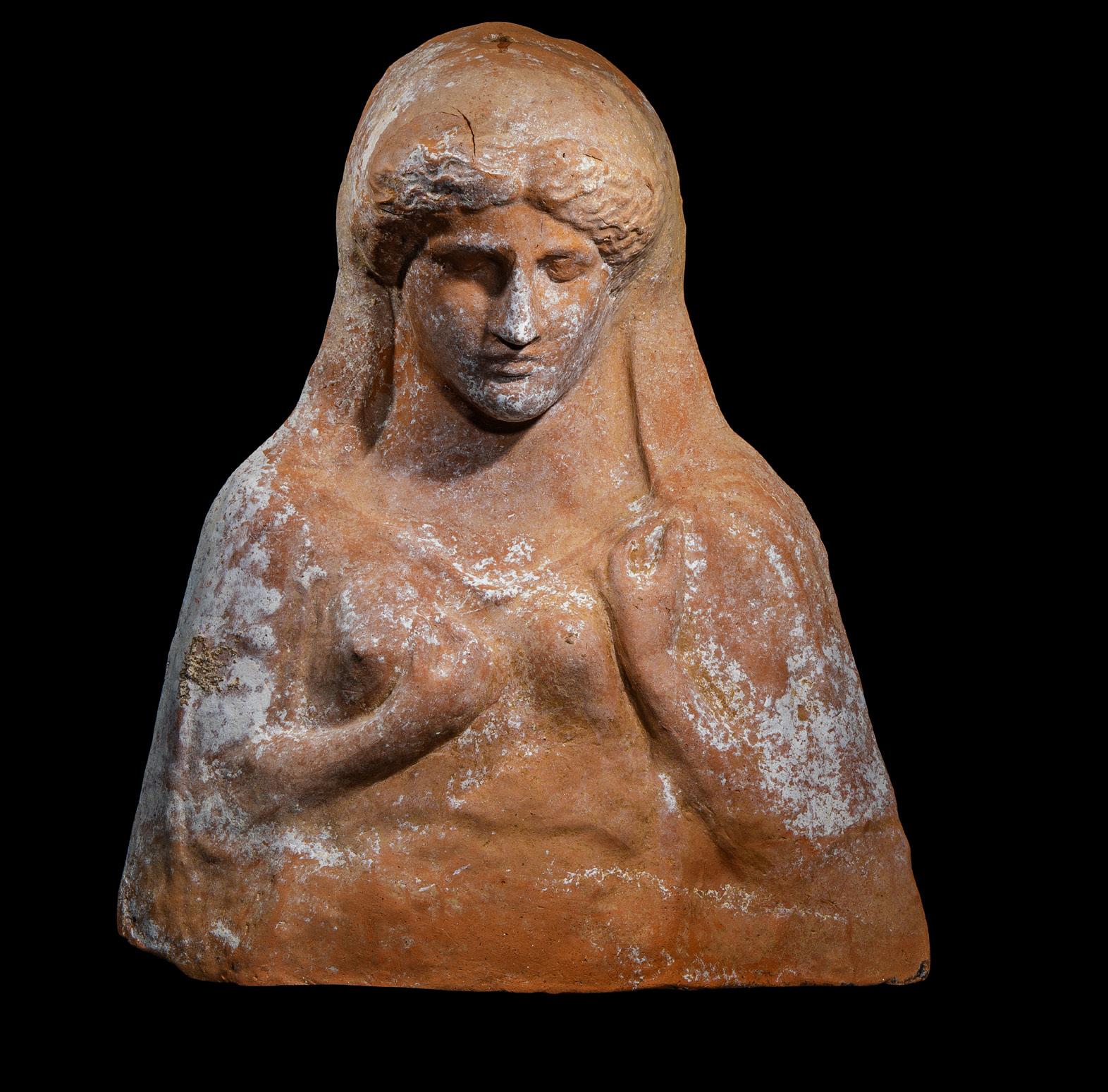

A Hellenistic Gilt-Silver Bowl with Acanthus Scrolls Circa Late 3rd-2nd Century B.C. Diameter 15.2 cm (6 inches); 1833.4 grams.
Provenance:
Private Collection, Switzerland, 1970s. Private Collection, New York, prior to 2007.
Phoenix Ancient Art, Geneva, 2010 (Phoenix Ancient Art, vol. 1, pp. 34-35, no. 24). Phoenix Ancient Art, New York, 2017 (Crystal 7, pp. 92-97, no. 15); where acquired by the present owner.
Exhibiting the finest craftsmanship of the Hellenistic period, this cup is composed of multiple layers of silver – the more robust body is a single solid piece, with the exterior decorated in high relief and featuring light gilding throughout. The spiky acanthus leaves take on a bewitching naturalism, with crisp serrated edges and veining. Tendrils and leaves are whimsically included throughout, and the artist has further enlivened the surface by stippling the interior of some leaves and a feathered motif on others. An ornate guilloche band neatly separates the vigorous vegetal decoration from the everted silver lip, and the bottom of the cup features a decorative rosette where it would have been cupped in the hand of the lucky drinker.
The present example is strikingly similar in conception and decoration to the famous cups found in Falerii Novi in 1810 (now in Naples, Museo Archeologico Nazionale inv. nos. 25284, 25285, 25288), which are thought to be of Pergamene craftsmanship. These three examples preserve a garnet cabochon at the center of the bottom rosette, and it is rather likely that such a gem was originally included in the present example but has since been lost.
Certainly, the luxurious design exemplifies the famous tryphe of the Hellenistic courts, and cups such as these were intended for royal banquet tables. Silver table services were enthusiastically adopted by the cultured upper classes in Rome during the heady years of the Late Republic and early principate (the ‘Cena Trimalchionis’ in Petronius’ Satyricon being one of the most famous descriptions of such luxurious banqueting), consciously emulating the style of the Hellenistic royal courts. The survival of such vessels is rare, with most having been melted down and the precious raw materials reused in times of economic hardship. Like the Falerii Novi examples, this exquisite cup likely survived because its shrewd owner buried it in times of incipient political turmoil.
$20,000 - 30,000




95
An Etruscan Bronze Kore Circa 6th Century B.C.
Height 9.8 cm (3 7/8 inches).
Provenance:
The Mr. and Mrs. K. Ishiguro Collection, Tokyo, Japan, 1970s. Gordian Weber Kunsthandel, Cologne, Germany.
Private Collection, California, where acquired from the above.
Ira & Larry Goldberg Auction, Los Angeles, Ancient and World Coins, 29 October 2009, Lot 839.
$5,000 - 7,000

96
A Celtic Bronze Spout Circa 5th Century B.C.
Length 3.8 cm (1 1/2 inches).
Provenance:
Private Collection, Germany, 1980s-1990s.
Private Collection, West Coast, United States, 2000s. Private Collection, New York, acquired in 2010.
$1,000 - 2,000
97
A Roman Bronze Bust of Minerva Circa 4th Century A.D.
Height 14.3 cm (5 5/8 inches).
Provenance:
Sotheby’s, New York, Antiquities, 29 November 1989, Lot 88. Fortuna Fine Arts, New York, 1990 (Earth and Metal, no. 87).
Christie’s, New York, Antiquities, 11 June 2003, Lot 193. Private Collection, Colorado.
Christie’s, New York, Antiquities, 5 December 2012, Lot 93.
$4,000 - 6,000
98
A Roman Bronze Muse Circa 1st Century B.C.-1st Century A.D. Height 7 cm (2 3/4 inches).
Property from a Private Minnesota Collection
Provenance:
Galerie Nefer, Zurich; where acquired by the present owner in the 1990s.
$1,000 - 2,000
99
A Roman Bronze Seated Child
Circa 1st Century B.C.
Length 4.8 cm (1 7/8 inches).
Property from a Private Minnesota Collection
Provenance:
Galerie Nefer, Zurich; where acquired by the present owner, 17 June 1997.
$1,200 - 1,800







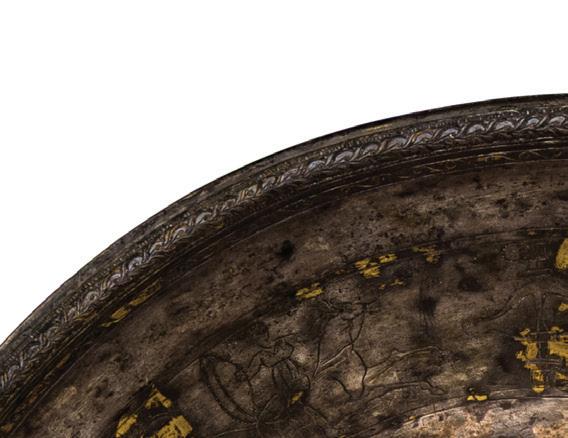


A Hellenistic Gilt-Silver Cup with Dionysos and Marine Thiasos
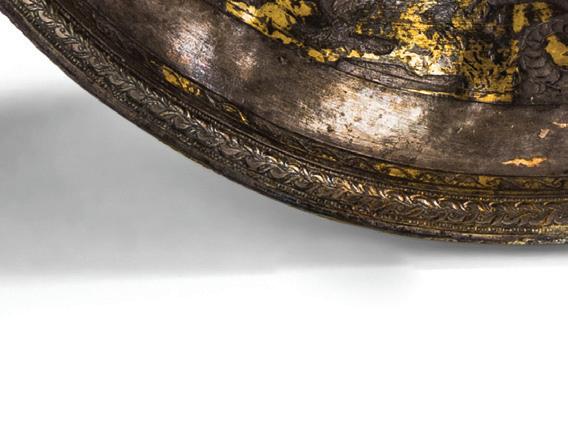
Diameter 31.5 cm (12 3/8 inches); 1250.7 grams.
Provenance:
Private Collection, London, 1980s.
Private Collection, acquired in London in 1999. Christie’s, London, Antiquities, 29 April 2010, Lot 63. Phoenix Ancient Art, Geneva, 2014 (Point Art Monaco, no. 22); where acquired by the present owner.
The interior of this large wine cup is decorated in two registers, making for a somewhat idiosyncratic and intriguing mythological combination. The center is eminently appropriate for a drinking vessel, showing nearly nude (apart from his festive wreath) Dionysos after an evening of carousing, somewhat worse for wear and being propped up by a stalwart attendant while tilting his kantharos to pour the dregs onto a small altar in an impromptu libation. In front of this pair, hairy Pan plays his syrinx (panpipes), standing with one hoof perched upon the edge of the altar and the other precariously balanced on the rocky landscape. Behind, another horned and booted figure blows enthusiastically upon the aulos (doubleflute) in an exhortative musical accompaniment.
The outer register of decoration shows an aquatic procession of sea-nymphs led by Poseidon. This is not a typical marine thiasos, with its lively tritons and scant drapery; instead, its restrained tone reflects the seriousness of the scene - the delivery of Achilles’ armor by Thetis and her nereid attendants. Riding an assortment of fantastical sea-creatures (ketoi, hippocampoi, and pugnacious porpoises) each bears a component of the hero’s armor: shield, spear, greaves, sword, corslet, and helmet. The forging and delivery of Achilles’ armor was a poignant maternal (and divine) attempt at subverting his tragic fate, and eventually a futile one.
Dionysos always had a connection with the sea (transforming blasphemous pirates into dolphins, etc.) and had an obscure link with the nereid Thetis, as it



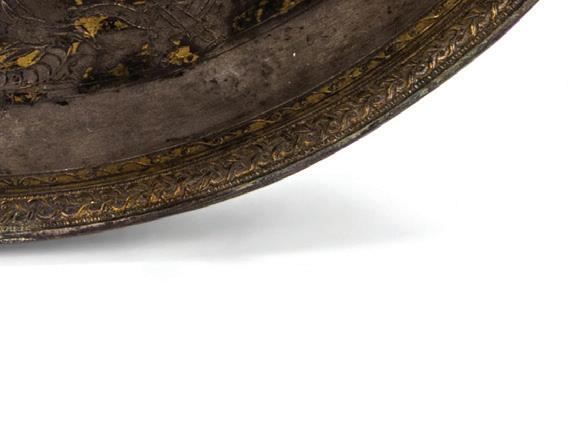


was she who nurtured and protected him for a time, sheltered by seaweed in the Erethraean Sea, during his fraught childhood. It is possible the ancient audience would have immediately grasped a link between the two mythological vignettes, although the combination remains rather inscrutable to the modern eye. When used at banquets, the relatively opaque red wine – perhaps here intended to evoke the poetics of Homer’s oinops pontos (‘wine-dark sea’) – first exposing the thickened rim and its ornate band of guilloche and wave meander, before slowly revealing each register as the night went on, perhaps inviting discussion of Homeric epic before devolving into sheer enjoyment of the tipsy god of wine in action at the bottom of the deep conical cup.
Decorating the interior of drinking vessels with a profusion of imagery (running the gamut from mythological to downright profane) was an invention most associated with the extraordinary creative output of Athenian potters and painters during the Archaic and Classical periods. The interplay between these terracotta creations (black- and red-figured) and vessels in precious materials was complex, and the inspiration surely ran both ways: the use of incision for the figures here, as well as gilding for the background, might well have drawn inspiration from the earlier terracotta tradition. By the Hellenistic period, when this cup was produced and the riches of Persia had flooded into the Mediterranean along with Alexander’s battleweary troops, the luxury arts were ascendant and arguably creatively overtook more humdrum pottery production. This cup, with its mythologically complex and intricately incised details, falls into the type of luxurious tableware that came to embody the decadence and tryphe (the almost god-like luxury) that so typified the Hellenistic East.
The interaction between terracotta black- and red- vessels and those silver and gold is discussed extensively and in M.J. Vickers and D.W. Gill, Artful Crafts: Ancient Greek Silverware and Pottery (1994) with short analysis of the situation in the Hellenistic period. On touretics and tableware after Alexander’s conquests, see M. Pfrommer, Metalwork from the Hellenized East: Catalogue of the Collections. J. Paul Getty Museum. (1993).
$30,000 - 50,000


103
A Hellenistic Bronze Bull Forepart Circa 3rd-1st Century B.C.
Height 12.4 cm (4 7/8 inches).
Property from a Private Minnesota Collection
Provenance: Galerie Nefer, Zurich; where acquired by the present owner in the mid-1980s-early 1990s.
$3,000 - 5,000

104
A Pair of Hellenistic Silver Ram’s Head Appliques
Circa 2nd-1st Century B.C.
Width 4 cm (1 1/2 inches).
$2,000 - 3,000

101
A Pair of Etruscan Bronze Vessel Handles
Circa 4th Century B.C.
Length 11.4 cm (4 1/2 inches).
Provenance:
Private Collection, Geneva, Switzerland.
Ira & Larry Goldberg Auction, Los Angeles, Ancient and World Coins, 29 October 2009, Lot 841.
$1,200 - 1,800

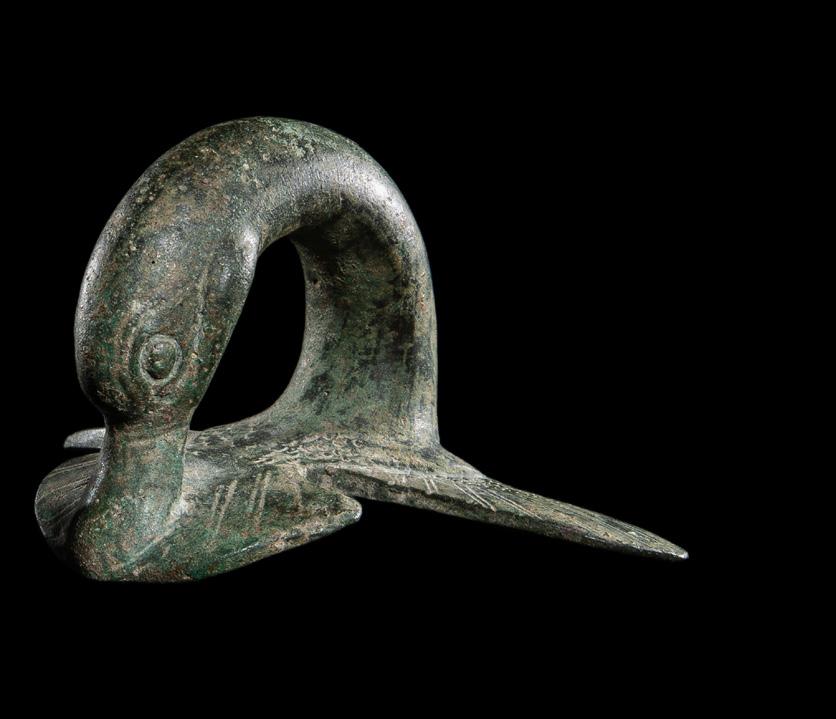
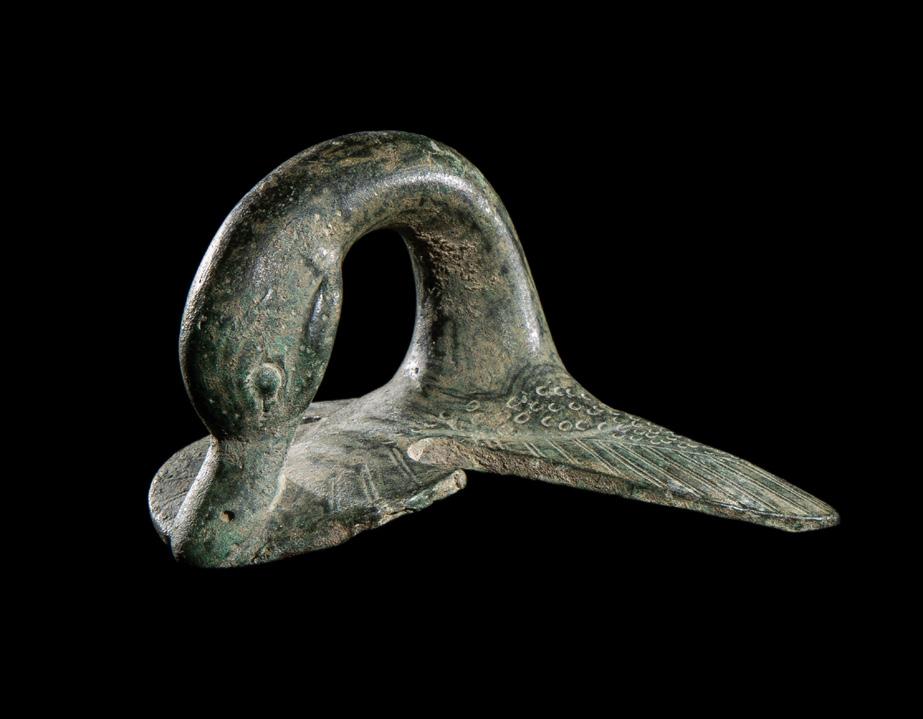
102
A Hellenistic Bronze Applique with a Bucranium and Gorgon Circa 3rd-2nd Century B.C.
Width 6.4 cm (2 1/2 inches).
Property from a Private Minnesota Collection
Provenance: Galerie Nefer, Zurich; where acquired by the present owner in the 1990s.
$800 - 1,200

105
A Roman Silver Spoon
Circa 1st-2nd Century A.D.
Length 15 cm (5 7/8 inches).
Provenance:
Gorny and Mosch, Munich, Auktion 137, 15 December 2004, Lot 677.
$2,000 - 3,000


106
Two Hellenistic Silver Mastoi Circa 2nd-1st Century B.C.
Diameter of largest 17.5 cm (6 7/8 inches); 852.2 grams (gross).
Provenance:
Private Collection, England, 1970s.
Gorny and Mosch, Munich, Auktion 206: Kunst der Antike, 20 June 2012, Lot 83. [part]
$1,200 - 1,800
107
A Roman Bronze Lidded Pyxis
Circa 3rd Century A.D.
Diameter 14.6 cm (5 3/4 inches).
Provenance: Merrin Gallery, New York, 1980s.
$3,000 - 5,000


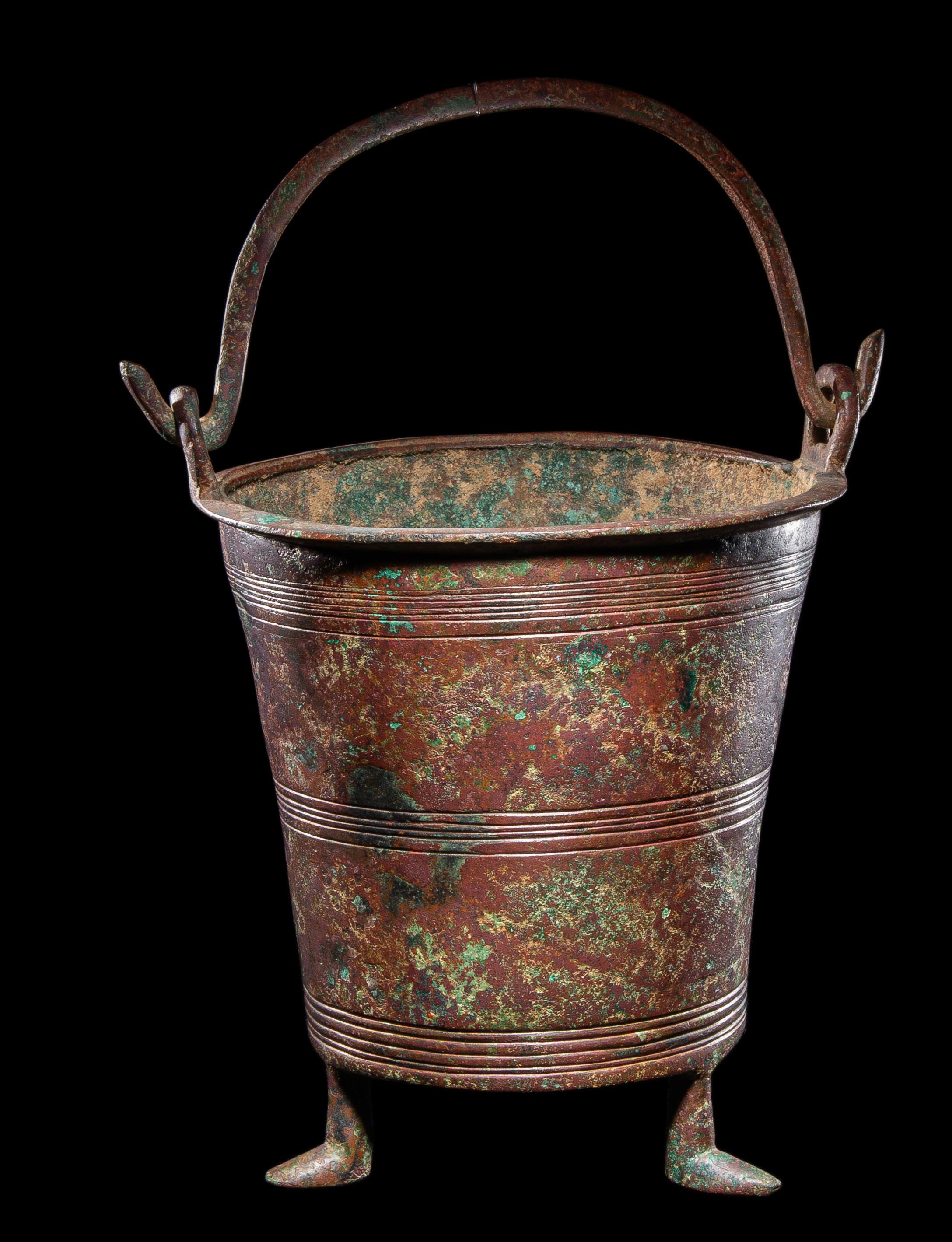
108
A Roman Bronze Situla Circa 2nd-3rd Century A.D.
Height 19 cm (7 1/2 inches).
Provenance: Art Market, Europe, acquired in the early 1980s. Bonhams, London, Antiquities, 20 October 2005, Lot 202.
$3,000 - 5,000

110
An Etruscan Bronze Mirror
Circa 3rd Century B.C.
Height 23.5 cm (9 1/4 inches).
Provenance:
Private Collection, New England, acquired prior to 1980; thence by descent. Christie’s, New York, Antiquities, 5 December 2012, Lot 60.
$3,000 - 5,000

109
A Roman Bronze Patera
Circa 1st Century A.D.
Length 31.1 cm (12 1/4 inches).
Provenance:
Private Collection, Germany, 1998.
Private Collection, United States, 2006.
$1,200 - 1,800


111
An Urartian Bronze Belt
Circa 8th Century B.C.
Length 66 cm (26 inches).
Provenance:
Private Collection, acquired in London in 1996.
$1,000 - 2,000

112
A Roman Bronze Sword Hilt
Circa 1st Century A.D.
Length 10.8 cm (4 1/4 inches).
Provenance:
Gorny and Mosch, Munich, Auktion 105, 10 October 2000, Lot 2530. Cahn Auktionen AG, Basel, Switzerland, Auktion 3, 19 September 2008, Lot 18. Ira & Larry Goldberg Auction, Los Angeles, Ancient and World Coins, 29 October 2009, Lot 850.
$1,500 - 2,500
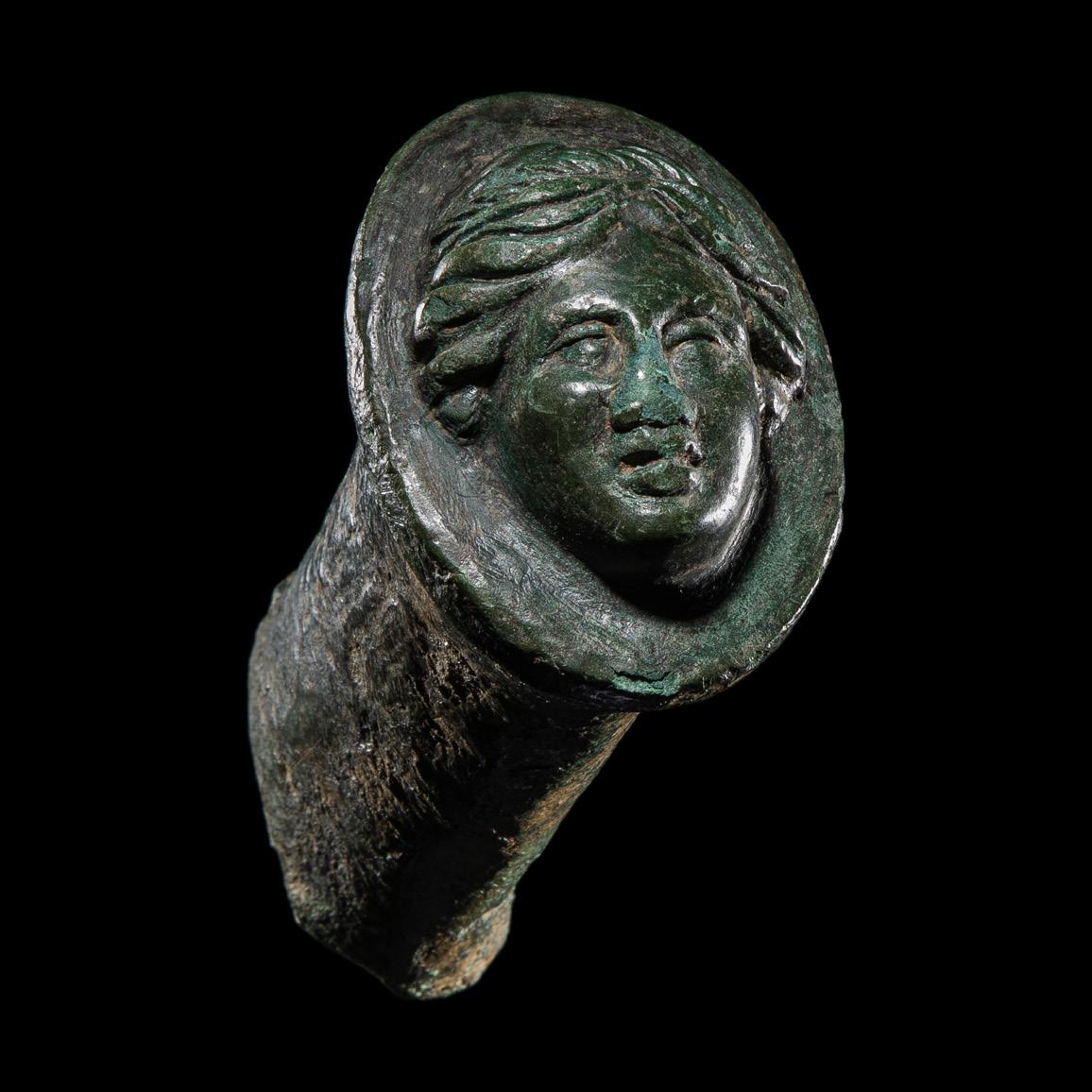
113
A Roman Mosaic Panel with Dionysus and Satyrs Circa 1st–2nd Century A.D. Panel 45 × 45 cm (17 3/4 × 17 3/4 inches).
Property from a Private Minnesota Collection
Provenance:
Galerie Nefer, Zurich; where acquired by the present owner in the mid-1980s-early 1990s.
Executed in fine tessellatum, the panel depicts Dionysus seated in short chiton, holding a thyrsos and extending a kantharos toward a youthful, nude satyr, while a bearded satyr approaches bearing a smaller child upon his shoulders; a goatskin wineskin (askos) under the god’s foot, a tree and rocky ground, and a column topped by an exaleiptron complete the setting, evoking the god’s role as initiator into wine and ecstatic rites; the theme, rooted in Greek imagery of the 5th–4th centuries B.C. and transmitted into Roman domestic décor, aligns with known scenes of youthful satyrs introduced to Dionysiac practice (cf. LIMC III, s.v. “Dionysos” nos. 848, 854).
$10,000 - 15,000



114
A Roman Marble Lower Torso of Venus Circa 1st-2nd Century A.D.
Height 18 cm (7 inches).
Property from a Private Collection
Provenance:
Likely John Mullanphy Harney (1924-2014), owner of Warfield’s Inc., St. Louis, Missouri.
Edgar W. Ellermann, Jr. (1942-2025), St. Louis, Missouri, acquired from the above by the late 1970s.
$1,200 - 1,800

116
A Roman Marble Fragment of a Sphinx Circa 2nd Century A.D.
Length 24.1 cm (9 1/2 inches).
Property from the Collection of Elana Klein, Montreal
Provenance: Max Klein (1904-1991), Jerusalem and Montreal, acquired prior to 1955; thence by descent.
$1,500 - 2,500


115
A Roman Marble Eros Circa 1st–2nd Century A.D.
Height 39.4 cm (15 1/2 inches).
Property from the Collection of Mr. Felix Brejente, Schaumburg, Illinois
Provenance:
Private Collection (K.A.), Belgium, acquired in the 1990s. Art Market, Germany, 2000s.
Harlan J. Berk, Chicago; where acquired by the present owner, 23 February 2018.
$6,000 - 8,000

A Roman ‘Occhio di Pavone’ Colonnette Circa 2nd-3rd Century A.D. Height 100.3 cm (39 1/2 inches).
Provenance:


Dr. Gary Karch, Florida, acquired in the 1980s. [by repute] Art Market, New York, prior to 14 March 2011. Private Collection, New York. [accompanied with a laboratory examination report]
$10,000 - 15,000



118
A Roman Gray Basalt Column Capital Circa 3rd-6th Century A.D. Width 49 cm (19 1/4 inches).
Provenance: Art Market, Europe, 2000s.
Art Market, New York, prior to 24 November 2004.
$2,000 - 3,000


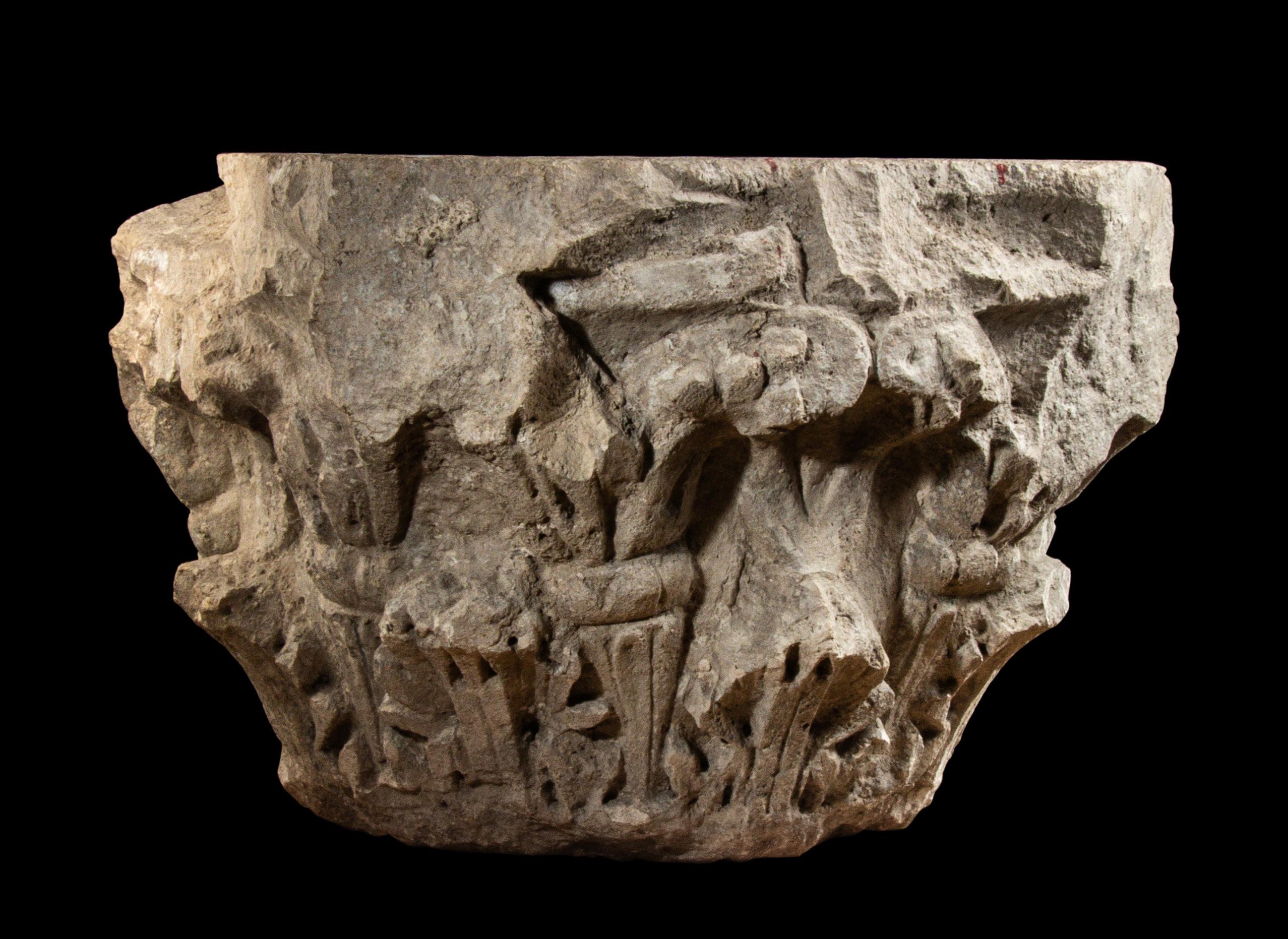
119
A Roman Marble Capital Circa 2nd-3rd Century A.D. Length 54 cm (21 1/4 inches).
Property from a New York Private Collection
Provenance:
Art Market, Europe, 2000s.
Art Market, New York, since 5 December 2002.
$3,000 - 5,000
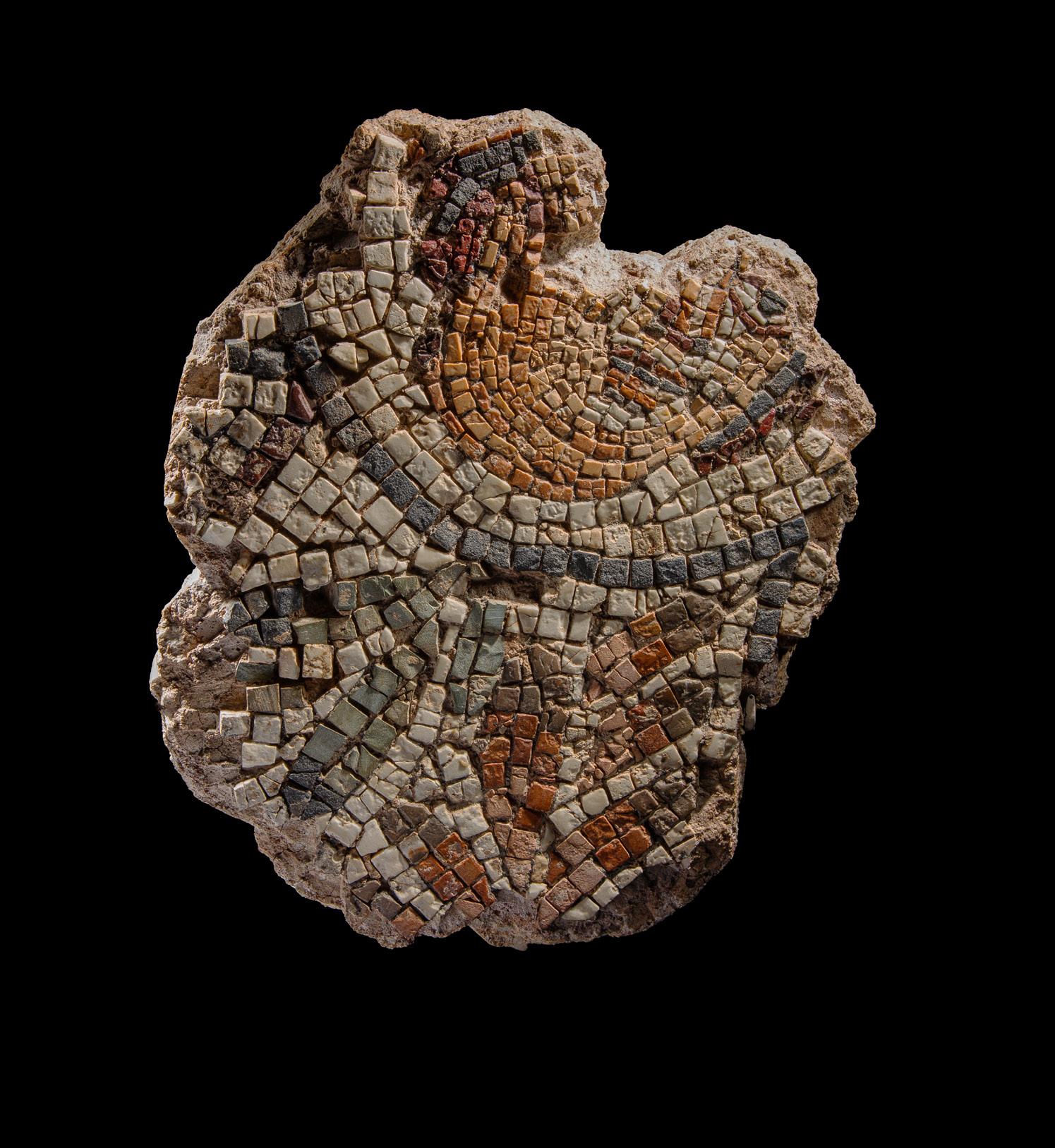
120
A Roman Mosaic Fragment
Circa 1st-2nd Century A.D.
Height 23 cm (9 inches).
Property from a New York Private Collection
Provenance:
Art Market, New York, 2000s.
$1,000 - 2,000

121
A Roman Marble Relief Fragment with the Head of a Satyr
Circa 1st-3rd Century A.D.
Width 32 cm (12 5/8 inches).
Provenance:
Art Market, Germany, prior to 1998.
Acquired by the present owner, 24 July 1998.
$1,200 - 1,800

122
A Roman Marble Relief Fragment with an Actor’s Mask
Circa 2nd-3rd Century A.D.
Height 37 cm (14 1/2 inches).
Provenance:
Private Collection, New York, primarily formed in the 1980s-1990s.
Fortuna Fine Arts, New York.
Artemis Galleries, Louisville, Colorado, Fine Antiquities, Asian, Ethno, Fine Arts, 7 August 2025, Lot 15A.
$4,000 - 6,000


123
A Roman Marble Funerary Altar
Circa 1st Century A.D.
Width 29.9 cm (11 3/4 inches).
Property from a California Private Collection
Provenance:
Pridham’s Auctions & Appraisals, Ottawa, Ontario, Ancient Coins & Objects, 22 June 2024, Lot 323.
$4,000 - 6,000


124
A Roman Marble Archaistic Head of a Goddess
Circa 1st Century A.D.
Height 30 cm (11 3/4 inches).
Provenance:
Karl Wittgenstein (1847-1913), Vienna; thence by descent to his daughter, Margaret Wittgenstein-Stonborough (1882-1958); thence by descent.
Christie’s, New York, Antiquities, 25 October 2016, Lot 97.
Phoenix Ancient Art, New York, 2019 (Salon Art + Design, no. 25); where acquired by the present owner.
With stark frontality, cool half-smile, and complex coiffure, the present head is a masterful Roman creation harkening back to a sculptural style originating nearly five centuries earlier in Greece. The idealized facial features are characterized by almond-shaped eyes (originally inlaid in contrasting materials) beneath a smooth brow with contours descending to a straight nose. The full lips are arranged in a faint smile, and the rounded chin is slightly dimpled. The hair is organized in an ornate array of plaits, some vertical, originating at the nape, which converge into long braids wound around the head several times. At the front, a cropped fringe lies against the brow, with longer corkscrew curls lying against each cheek. A smooth, upstanding crown is nestled within this fantastical arrangement.
These cultivated anachronisms made up a retrospective style that became wildly popular in metropolitan Rome during the last decades of the 1st century B.C. and into the 1st century A.D. The phenomenon was largely borne of Augustus’ concerted interest in reviving the perceived virtues of bygone Greece – in calculated opposition to the profligate luxury of the Hellenistic kingdoms that he mightily opposed and eventually quashed with his victory over Marc Antony and Cleopatra in 31 B.C. Archaistic and Classical styles were deployed frequently for depictions of the new princeps’ patron god Apollo, and the present head could represent that deity if not for the prominent crown; with it, a mature goddess is certainly intended - perhaps Juno.
The eclectic nature of Roman archaizing and classicizing styles precludes exact parallels to the present head. Inlaid eyes were a rare feature, but find parallels in the famous Athena ‘Carpegna’ at Palazzo Massimo alle Terme (Museo Nazionale Romano, inv. no. 55051), an Augustan Athena at the Metropolitan Museum of Art (inv. no. 12.157), a 1st century ‘kore’ currently in Melbourne (National Gallery of Victoria, inv. no. 1045B-D4), and a fragmentary head from Ostia in the Vatican (Musei Vaticani, inv. no. 36849) that also exhibits a similar arrangement of side-curls. While the archaistic and classicizing styles are generally associated with the Augustan period, during which they experienced a surge in popularity, such retrospective styles were pioneered in the late Hellenistic period (for example, see the dancer from the Attalid palace at Pergamon, Berlin Antikensammlung, Staatliche Museen zu Berlin inv. no. AvP VII 43). The suggestion has been made that the present head could represent Isis, presumably on account of the curls against her cheeks – but that need not be the case: the curls are more likely an effort to evoke those of Archaic korai. On Archaic and Classicizing styles deployed in Roman sculpture, see M.D. Fullerton, The Archaistic Style in Roman Statuary (Leiden, 1990), and E.B. Harrison, Archaic and Archaistic Sculpture. The Athenian Agora, vol. 11 (Princeton, 1965).
$60,000 - 80,000

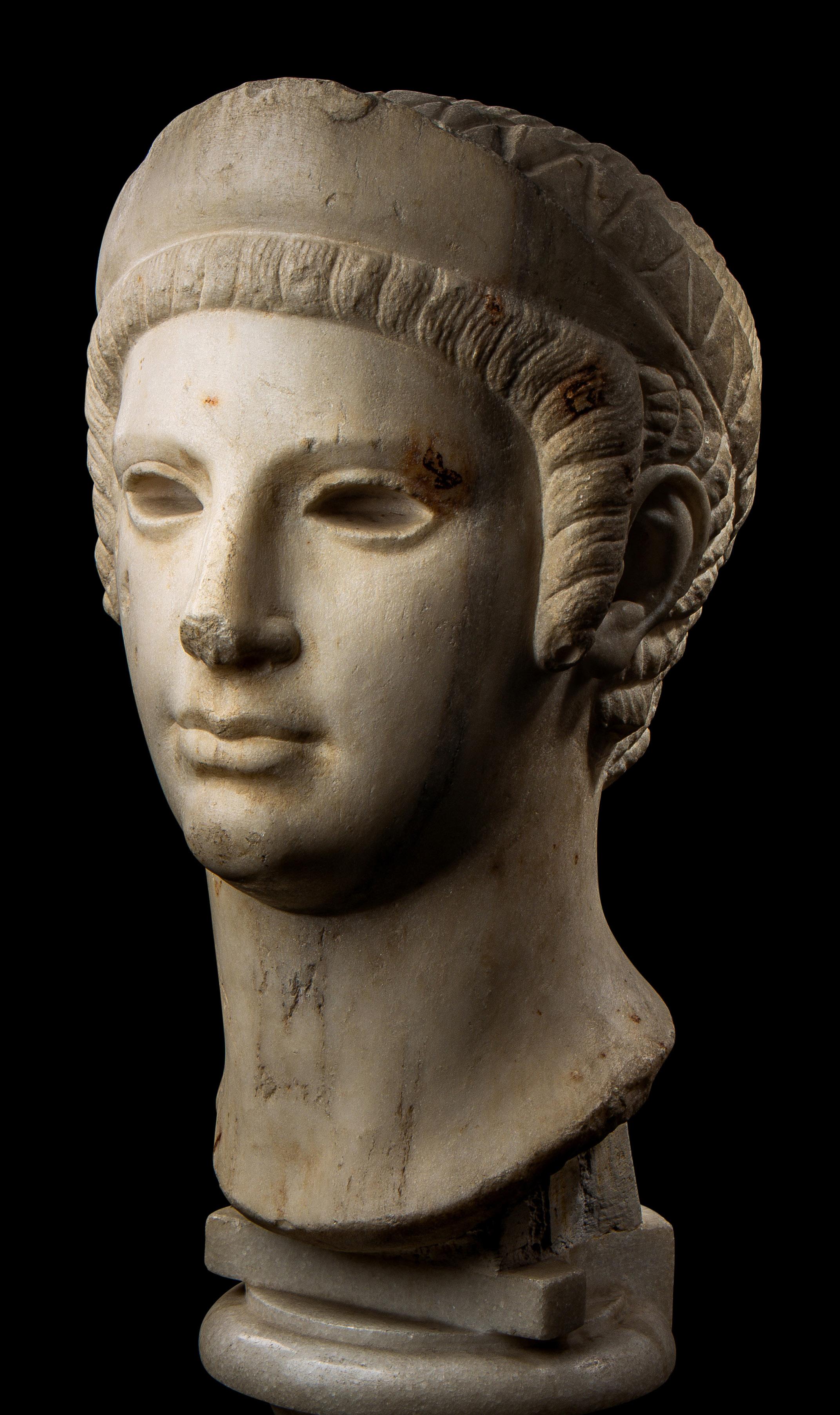
125
A Roman Marble Head of a Goddess Circa 2nd-3rd Century A.D.
Height 18 cm (7 inches).
Provenance:
Art Market, Chicago, Illinois.
Mr. and Mrs. Arthur Bailes (1929-2025), Chicago, 1990s; thence by descent.
$4,000 - 6,000



126
A Roman Marble Portrait Head of a Woman Severan Period, Circa Early 3rd Century A.D.
Height 31 cm (12 1/4 inches).
Property from a California Private Collection
Provenance:
Private Collection, New York.
Stair Gallery, New York, East Meets West: Works of Art Across Cultures, 6 August 2020, Lot 56. [where catalogued as Italian]
$2,000 - 3,000
127
A Roman Marble Oscillum with a Dancing Maenad Circa 1st Century A.D.
Height 26 cm (10 1/4 inches).
Provenance:
Private Collection, early 20th Century. [based on mounting technique]
Private Collection, Estrablin, France; thence by descent. Sadde, Dijon, France, Belle Vente Classique chez Sadde-Dijon, 12 March 2018, Lot 19.
Private Collection.
Sotheby’s, London, Ancient Sculpture & Works of Art, 4 December 2018, Lot 49.
[Art Loss Register no. S00150504]
[With U.K. export certificate]
$20,000 - 30,000


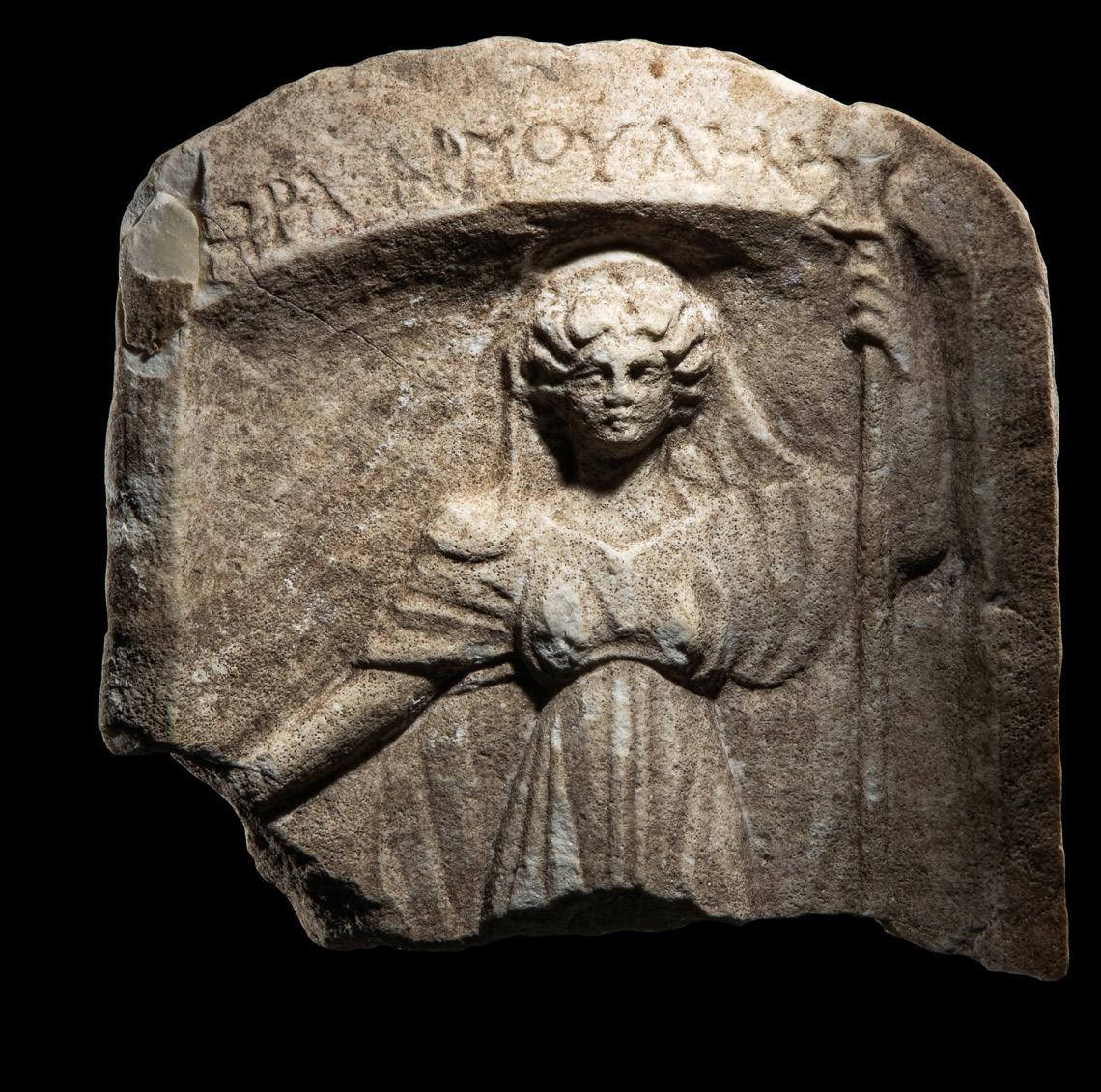
128
A Roman Marble Relief Fragment with the Goddess Hera Circa 1st-2nd Century A.D.
Width 16.3 cm (6 3/8 inches).
Provenance:
Joseph S. Melchione (1948-2012), United States.
Ira & Larry Goldberg Auction, Los Angeles, The Manuscripts, Collectibles & Space Auction, 1 December 2012, Lot 387.
$4,000 - 6,000
129
A Roman Marble Votive Stele with Greek Inscription Circa 1st-2nd Century A.D.
Height 58.5 cm (23 inches).
Provenance: Art Market, London. Private Collection, United Kingdom, acquired from the above 1985-1997. Bonhams, London, Antiquities, 1 May 2013, Lot 106.
$6,000 - 8,000
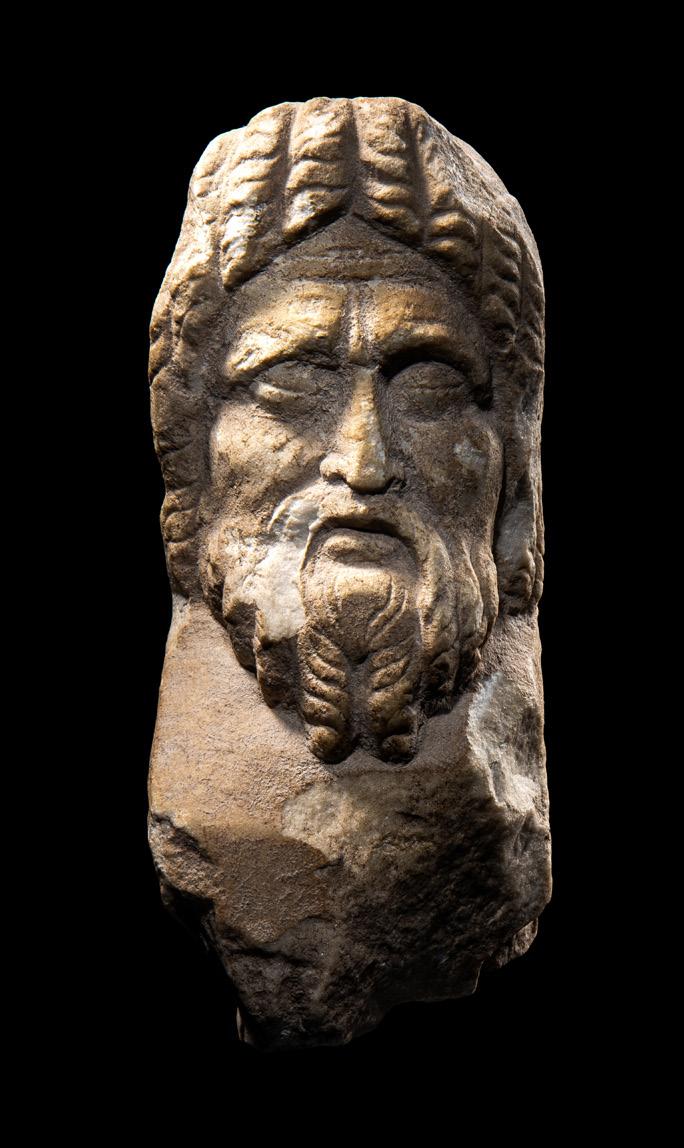
131 A Roman Marble Herm Head Circa 2nd-3rd Century A.D. Height 20 cm (7 7/8 inches).
Provenance: Private Collection, France, 1940s. Christie’s, London, Antiquities, 29 April 2010, Lot 326.
$2,000 - 3,000

130
A Roman Marble Herm Circa 3rd Century A.D. Height 79 cm (31 1/8 inches).
Provenance: Harlan J. Berk, Chicago, Buy or Bid Sale,12 April 1984, Lot 357. Estate of Professor David J. MacDonald (1943-2025), Carlock, Illinois.
$3,000 - 5,000




Provenance: Dr. Angelo R. Bergamo, New Jersey, 1970s-1980s.
$15,000 - 20,000

134
A Roman Marble Portrait Head of a Man Circa 2nd Century A.D. Height 31 cm (12 1/4 inches).
Property from a California Private Collection
Provenance:
Private Collection, New York, acquired in the 1970s. Shapiro Auctions, Bedford Hills, New York, Fine and Decorative Art, 27 April 2024, Lot 184.
$12,000 - 18,000

136
A Roman Marble Portrait Head of a Youth Circa 2nd-3rd Century A.D.
Height 13.5 cm (5 1/4 inches).
Provenance:
Private Collection, Switzerland, acquired in 1970. Pierre Berge and Assoc., Paris, Archeologie, 5 December 2010, Lot 227. Bonhams, London, Antiquities, 1 May 2013, Lot 129.
$4,000 - 6,000

133
A Roman Marble Bust of a Youth Circa 2nd Century A.D.
Height 26.5 cm (10 1/2 inches).
Provenance:
Ralph W. Stephan, Washington, D.C., 1960s. Catharina Baart Biddle, Washington, D.C.
Christie’s, New York, Antiquities, 8 June 2012, Lot 233.
$8,000 - 12,000


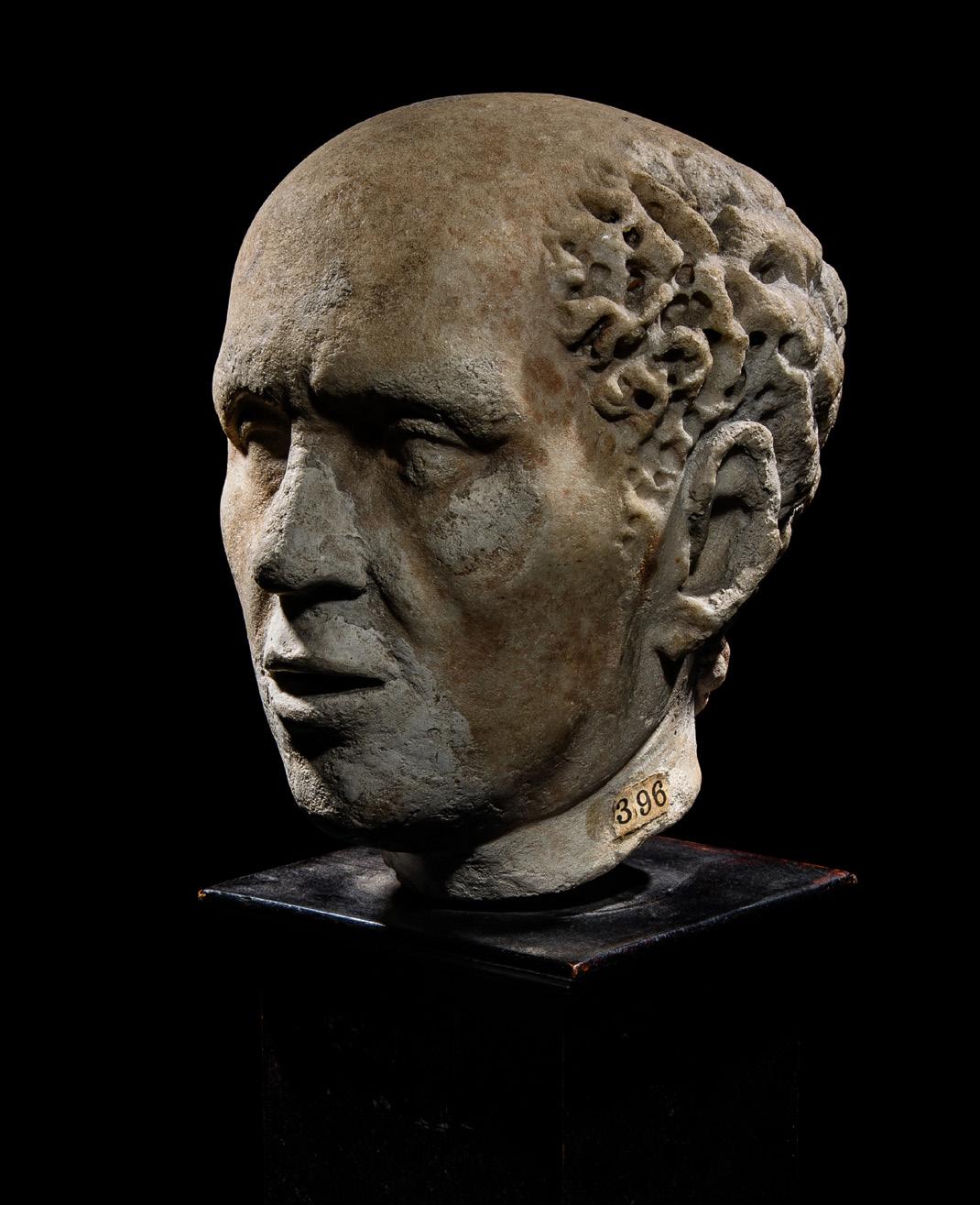
135
A Roman Marble Portrait Head of a Man Circa 1st Century B.C.-1st Century A.D.
Height 14 cm (5 1/2 inches).
Provenance:
Joseph Klein (1899-1987), New York, acquired 1941-1980; thence by descent. Bonhams, London, Antiquities, 1 May 2013, Lot 99.
$4,000 - 6,000
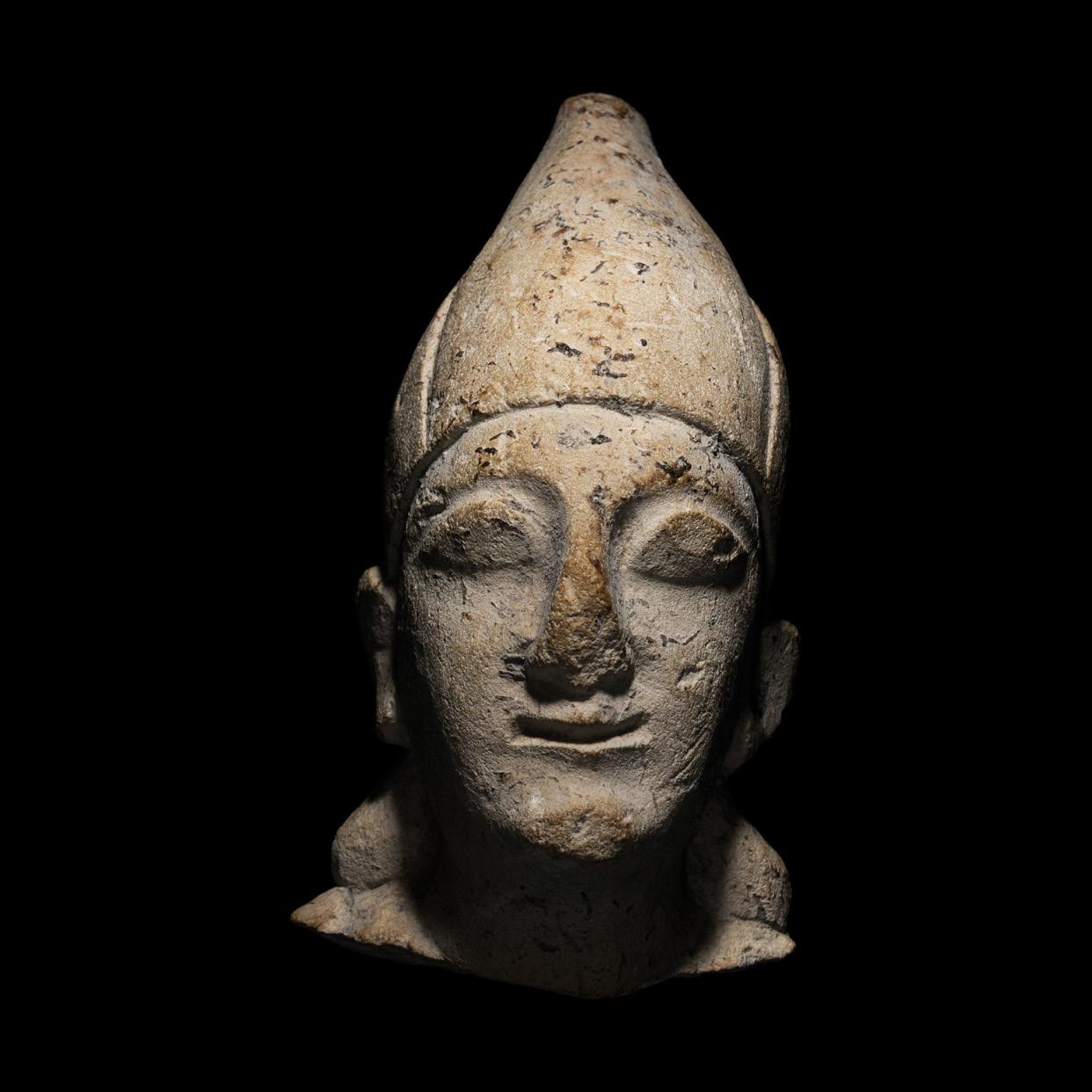
137
A Cypriot Limestone Votive Head
Circa Early 6th Century B.C.
Height 11.4 cm (4 1/2 inches).
Provenance:
Donald McDonald Creveling (1901-1974), Lake Charles, Louisiana (MIT-trained mining engineer who consulted with the Swedish expedition in Cyprus between 1927-1932); thence by descent to his daughter, Mary C. Krombholz (1935-2015), Indian Hills, Ohio.
Everything But The House, Cincinnati, Art, Collectibles, Home Furnishings & More, 30 May 2017, Lot 44.
Private Collection, Kentucky, acquired from the above.
Christie’s, New York, Antiquities, 31 October 2018, Lot 42.
Private Collection, New York.
Christie’s, New York, The Devoted Classicist: The Private Collection of a New York Antiquarian, 6 October 2022, Lot 41.
$2,000 - 3,000

138
A Cypriot Limestone Votive Head
Circa 6th-5th Century B.C.
Height 12 cm (4 3/4 inches).
Provenance:
Louis de Clerq (1836-1901), Paris. Nicolas Koutoulakis (1910-1996), Paris and Geneva; thence by descent.
Published:
A. de Ridder, Collection de Clercq, Catalogue Tome V: Les Antiquités
Chypriotes, Paris, 1908, no. 55.
$3,000 - 5,000

139 A Palmyrene Limestone Bust of a Man
Circa 2nd-3rd Century A.D.
Height 38.1 cm (15 inches).
Provenance: Private Collection, acquired in 2006.
$3,000 - 5,000


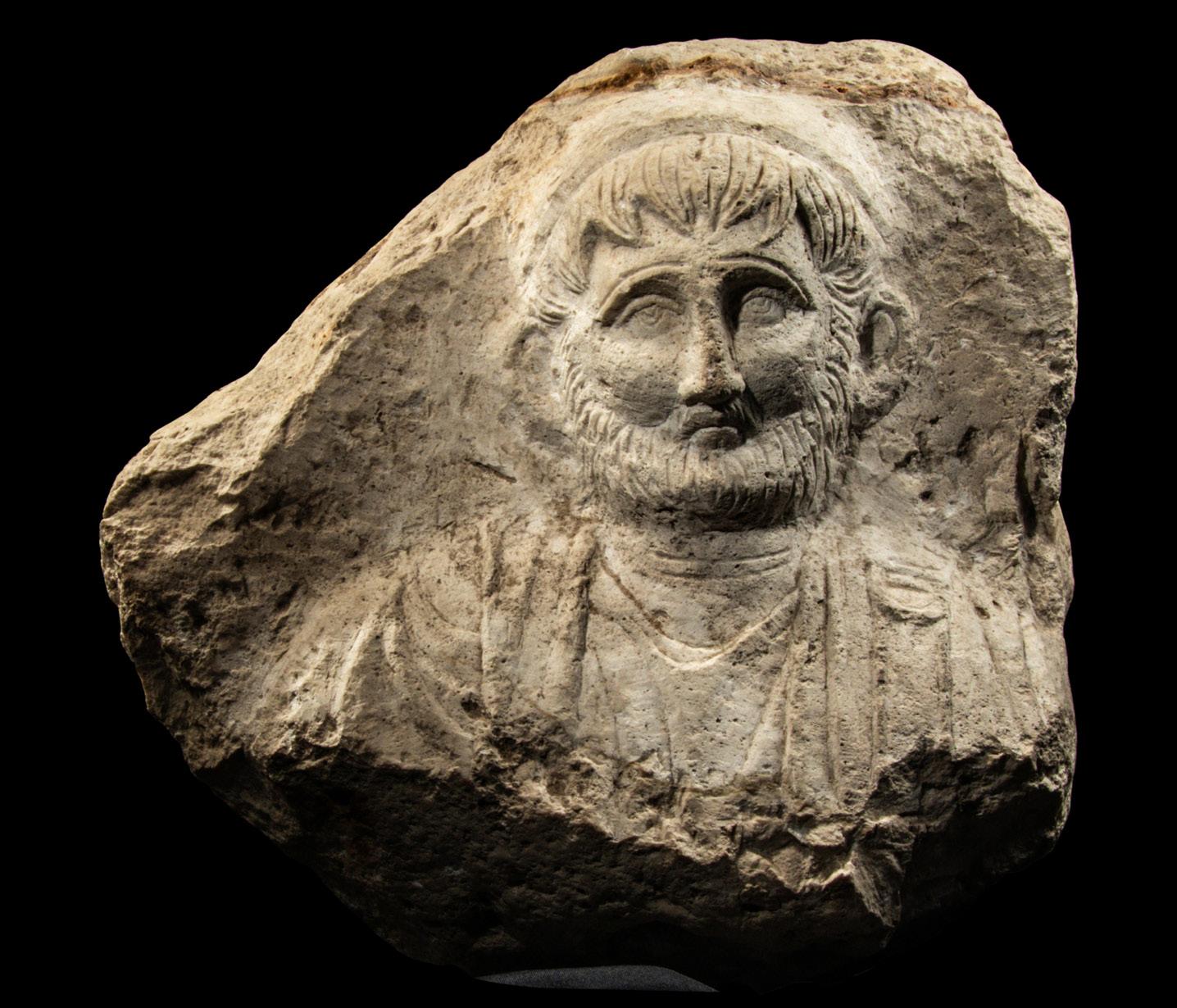
140 A Palmyrene Limestone Bust of a Man Circa 2nd-3rd Century A.D.
Width 44.5 cm (17 1/2 inches).
Provenance: Private Collection, acquired in 2006.
$2,000 - 3,000
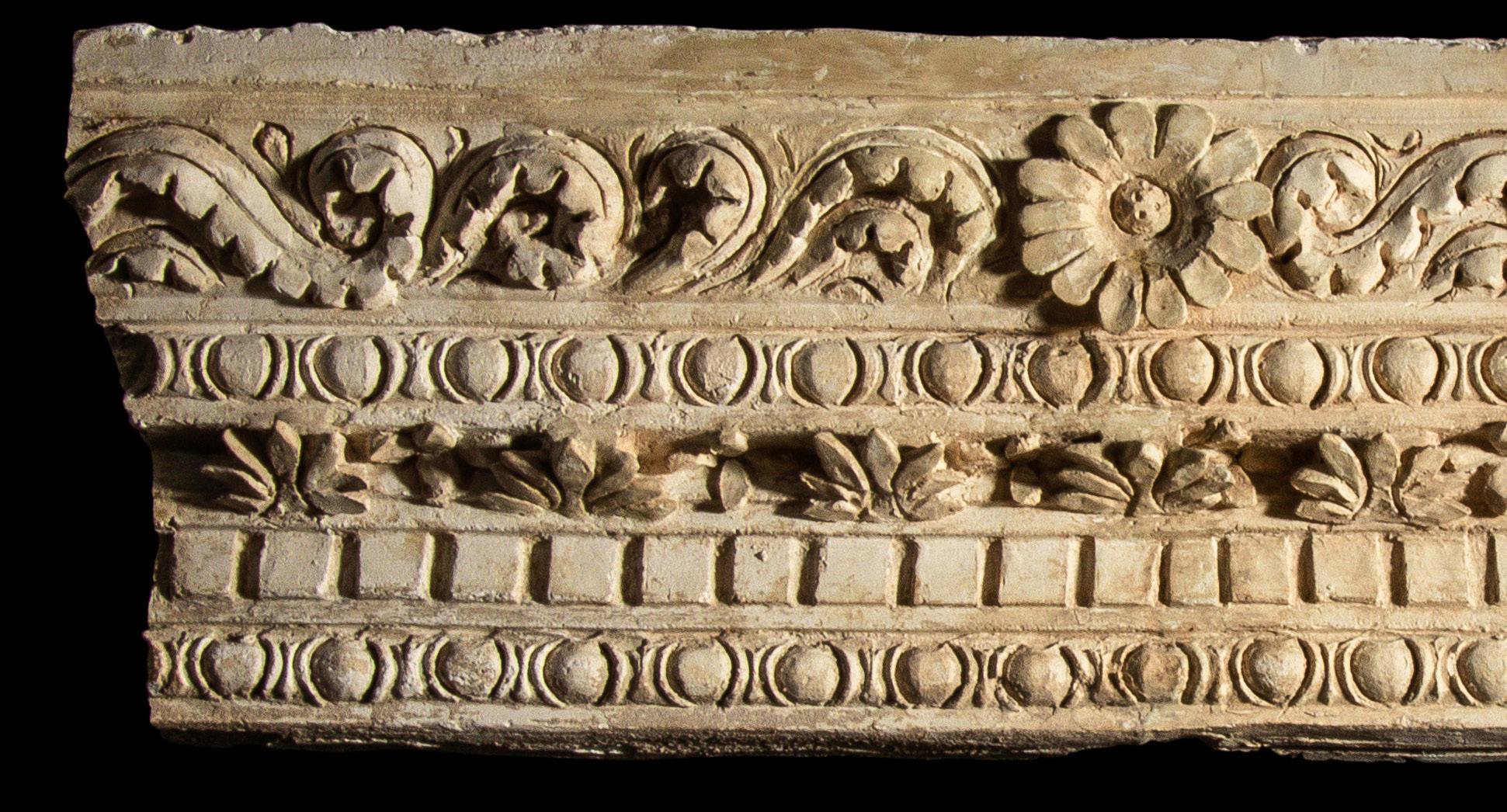
141 A Palmyrene Limestone Altar Circa 2nd-3rd Century A.D. Width 99 cm (39 inches).
Property from a New York Private Collection
Provenance:
Art Market, Europe, prior to 2008. Art Market, New York, since 5 November 2008.
$3,000 - 5,000



142 A Palmyrene Stucco Architectural Relief Circa 2nd-3rd Century A.D. Length 87 cm (34 1/4 inches).
Provenance:
Private Collection, Switzerland, 1970s. Private Collection, Connecticut, 1980s. [Art Loss Register no. S00017737]
$8,000 - 12,000


143
A Roman Glass Bangle
Set in modern gold signed T. Kochi 1984
Circa 2nd Century A.D.
Diameter 8.9 cm (3 1/2 inches); High karat gold; 59.20 grams.
Provenance:
Private Collection (B.D.), Connecticut.
$2,000 - 3,000



145
An Ostrogothic Gilt-Silver and Stone Belt Buckle
Circa 6th Century A.D.
Length 7.6 cm (3 inches).
Provenance:
S. Benzaquen Family Collection, 1960s.
Private Collection, Connecticut. Private Collection, United Kingdom, 2009-2022.
Exhibited: Belgium, Brussels, Salon des Grands Antiquaries, 10 November 2006.
$2,000 - 3,000
144
An Ostrogothic Gilt-Silver and Garnet Belt Buckle Circa 6th Century A.D.
Length 8.9 cm (3 1/2 inches).
Provenance: Private Collection, New York, 1970s. Private Collection, United Kingdom, 2010-2022.
Exhibited: Belgium, Brussels, Salon des Grands Antiquaries, 10 November 2006.
$2,000 - 3,000


146
A Merovingian Gilt-Silver and Garnet Belt Buckle
Circa 6th Century A.D.
Length 6.7 cm (2 5/8 inches).
Provenance:
Private Collection, France, 1970s.
Private Collection, Connecticut.
Private Collection, United Kingdom, 2009.
$2,000 - 3,000

148
A Byzantine Gold, Garnet, and Pearl Brooch
Circa 6th Century A.D.
Diameter 3.3 cm (1 1/4 inches); High karat gold; 8.18 grams.
Provenance:
Madame F. Artuner, Belgium, since the 1970s. with Ariadne Galleries, New York, late 1990s-2000s.
Private Collection, United Kingdom, 2009-2022.
$2,000 - 3,000


147
A Pair of Ostrogothic Silver and Garnet Fibulae
Circa 4th-6th Century A.D.
Length 7.4 cm (3 inches).
Provenance:
Fortuna Fine Arts, New York, 2001 (Reflections of the Past, no. 71).
$800 - 1,200

149
A Byzantine Silver Pendant
Circa 9th-14th Century A.D.
Height 6.6 cm (2 5/8 inches).
Property from the Collection of Mr. Felix Brejente, Schaumburg, Illinois
Provenance:
Harlan J. Berk, Chicago. Acquired by the present owner from the above, 30 September 2021.
$1,500 - 2,500
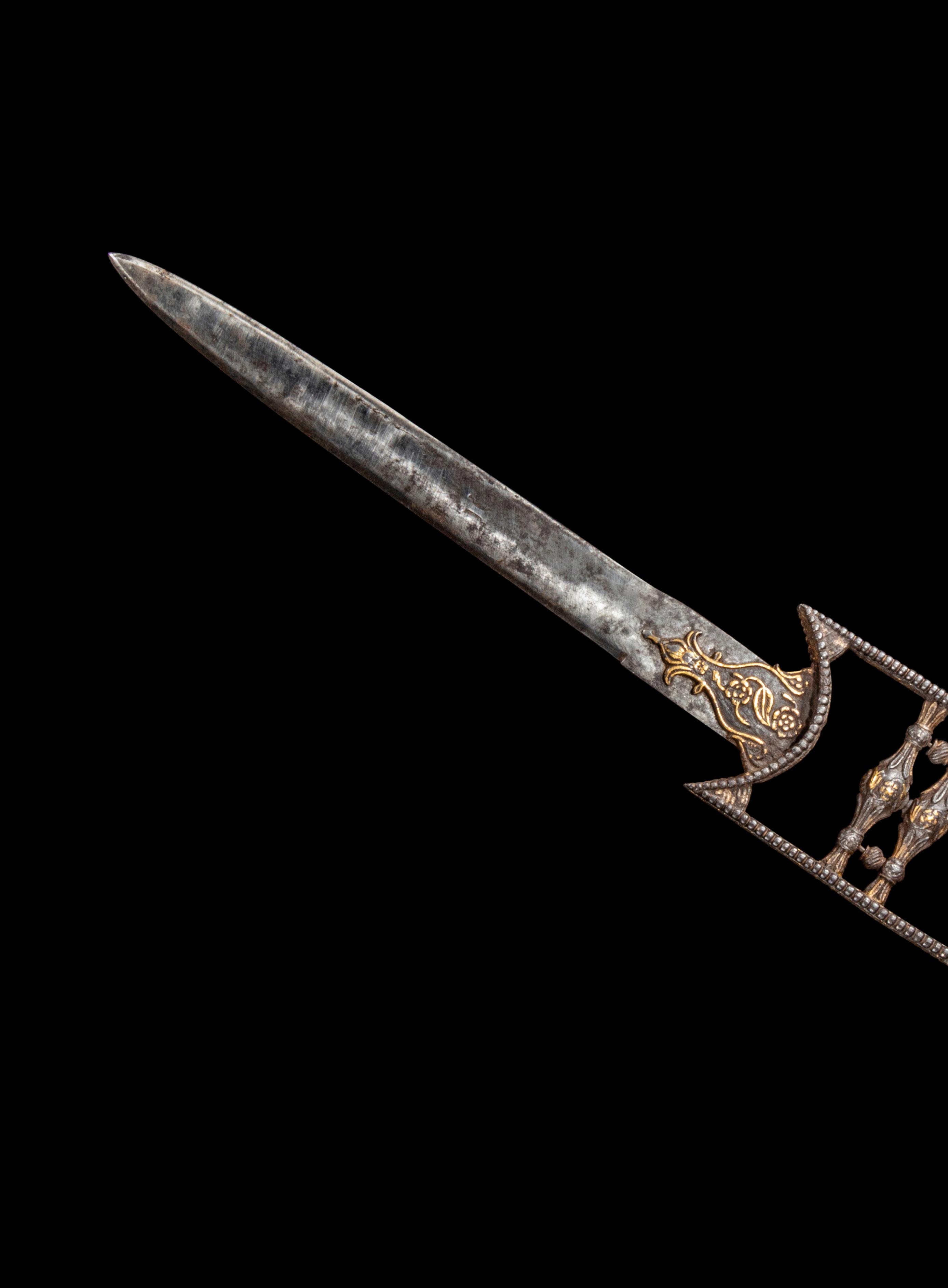
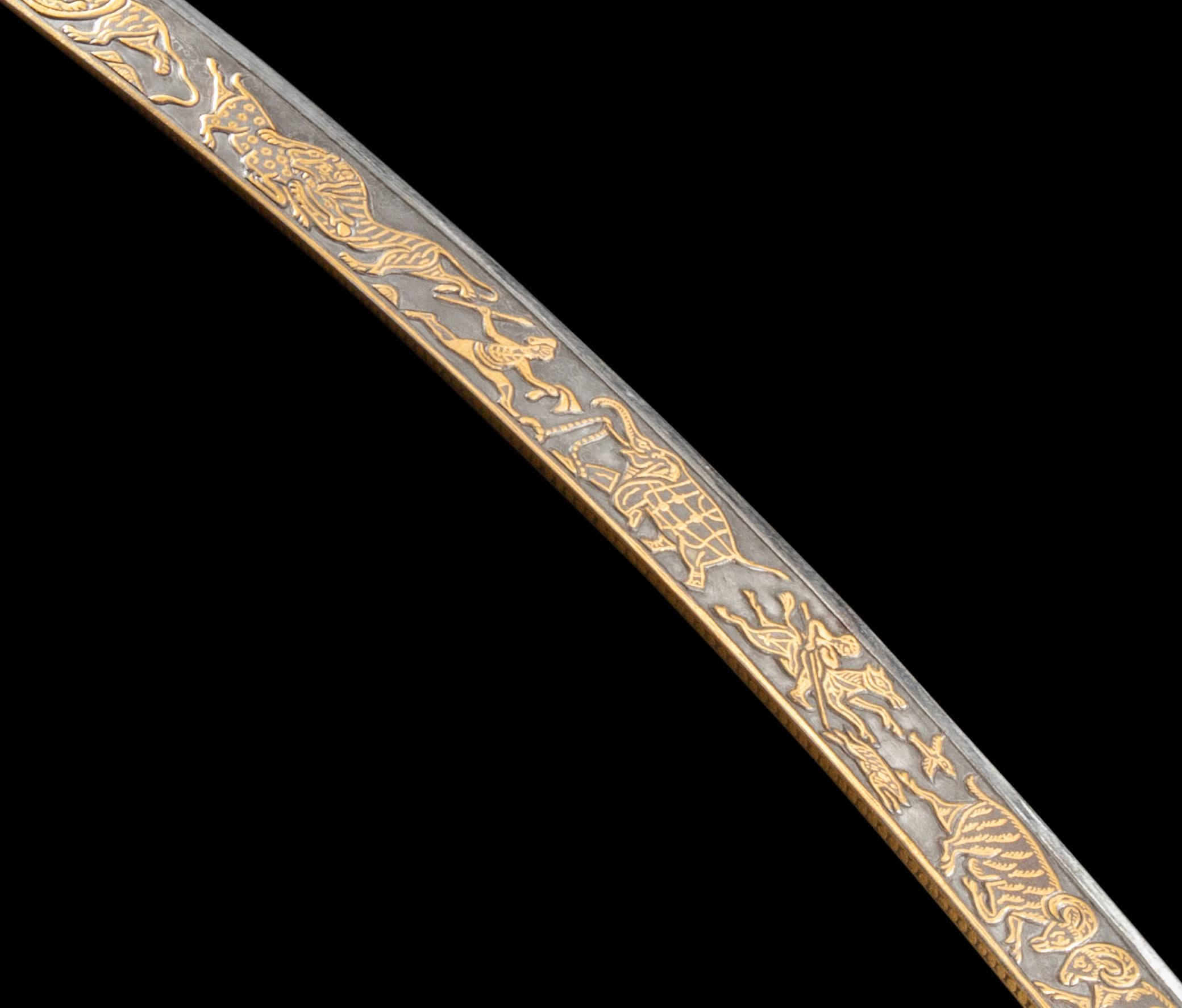


150 A Mughal Gold Koftgari Dagger
Circa 17th-18th Century A.D.
Length 44 cm (17 1/4 inches).
Property from a Pacific Northwest Private Collection
Provenance:
Private Collection, United Kingdom. Christie’s, London, Fine Antique Arms and Armour, 20 November 1991, Lot 129 (part).
The baluster-handled double-edged steel blade features a delicately chiseled gold foliated ornament.
$2,000 - 3,000
151 A Mughal Gold Koftgari Steel Sword Circa 17th-18th Century A.D. Length 92 cm (36 1/4 inches).
Property from a Pacific Northwest Private Collection
Provenance:
Private Collection, United Kingdom. Christie’s, London, Fine Antique Arms and Armour, 20 November 1991, Lot 129 (part).
Finely chiseled with gold hunting scenes of tigers, elephants, antelope, rams, and monsters
$10,000 - 12,000
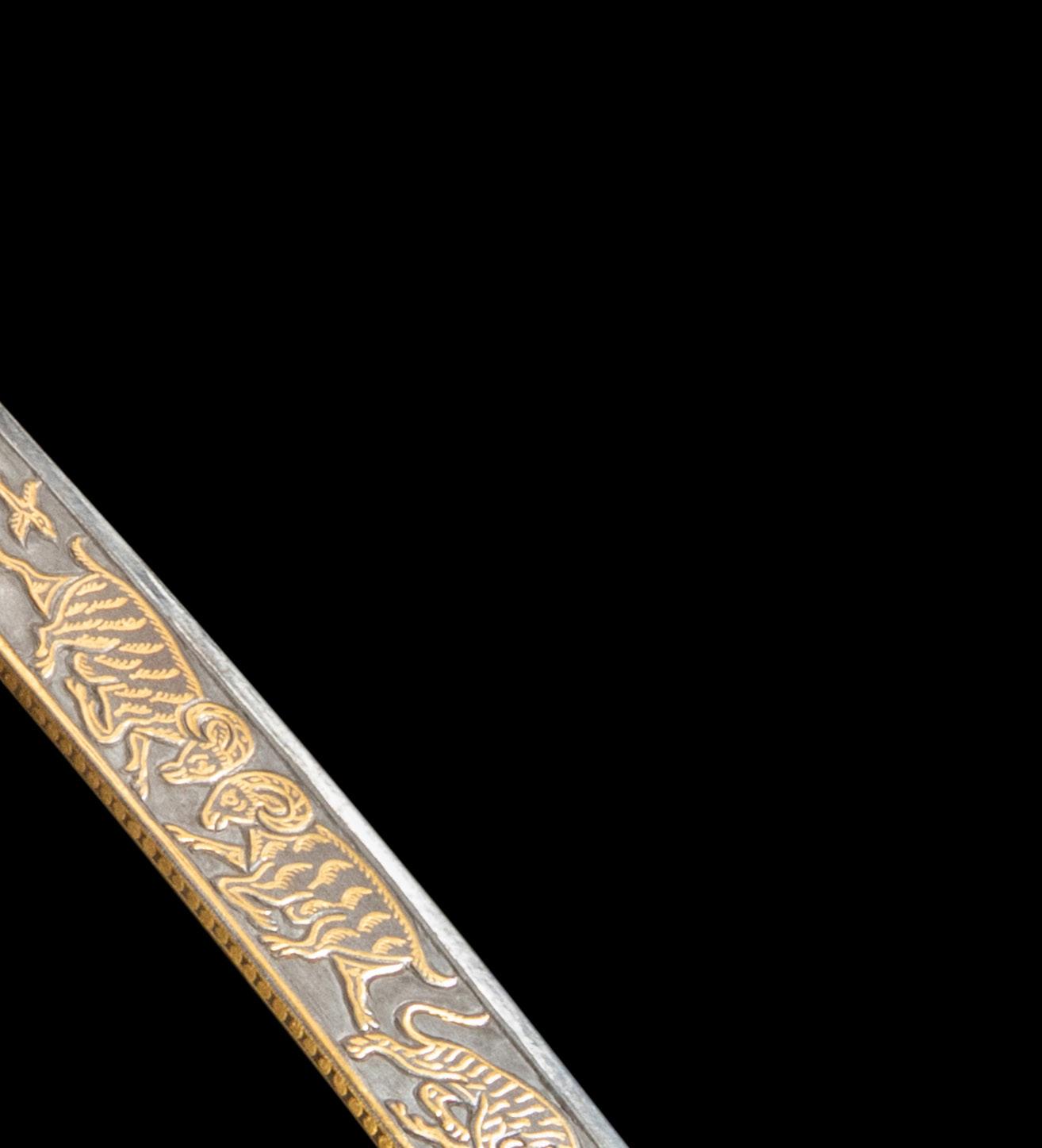

153
A South Arabian Fragmentary Albaster Ibex Base
Circa 4th-3rd Century B.C.
Length 25 cm (9 7/8 inches).
Provenance:
Gimpel Fils Gallery (Charles and Peter Gimpel), London, acquired in the 1960s-1970s.
Christie’s, London, Antiquities, 25 October 2007, Lot 256.
$1,200 - 1,800


154
A South Arabian Alabaster Relief with Ibex Circa 5th-3rd Century B.C.
Width 22.5 cm (8 7/8 inches).
Provenance:
Private Collection, Europe, 1960s.
Private Collection, Connecticut, early 2000s.
$5,000 - 7,000

155
Four South Arabian Alabaster Ibex Hoof Throne Legs
Circa 5th Century B.C.
Height 22.5 cm (8 7/8 inches).
Provenance:
Private Collection, Switzerland, 1970s. Private Collection, United States, 1980s. [Art Loss Register no. S00030159]
$4,000 - 6,000

152
A South Arabian Alabaster Standing Worshipper Circa 4th-1st Century B.C. Height 44.5 cm (17 1/2 inches).
Provenance:
Private Collection, Switzerland, 1970s. Private Collection, London, 2013-2016. [Art Loss Register no. S00023826]
$30,000 - 50,000

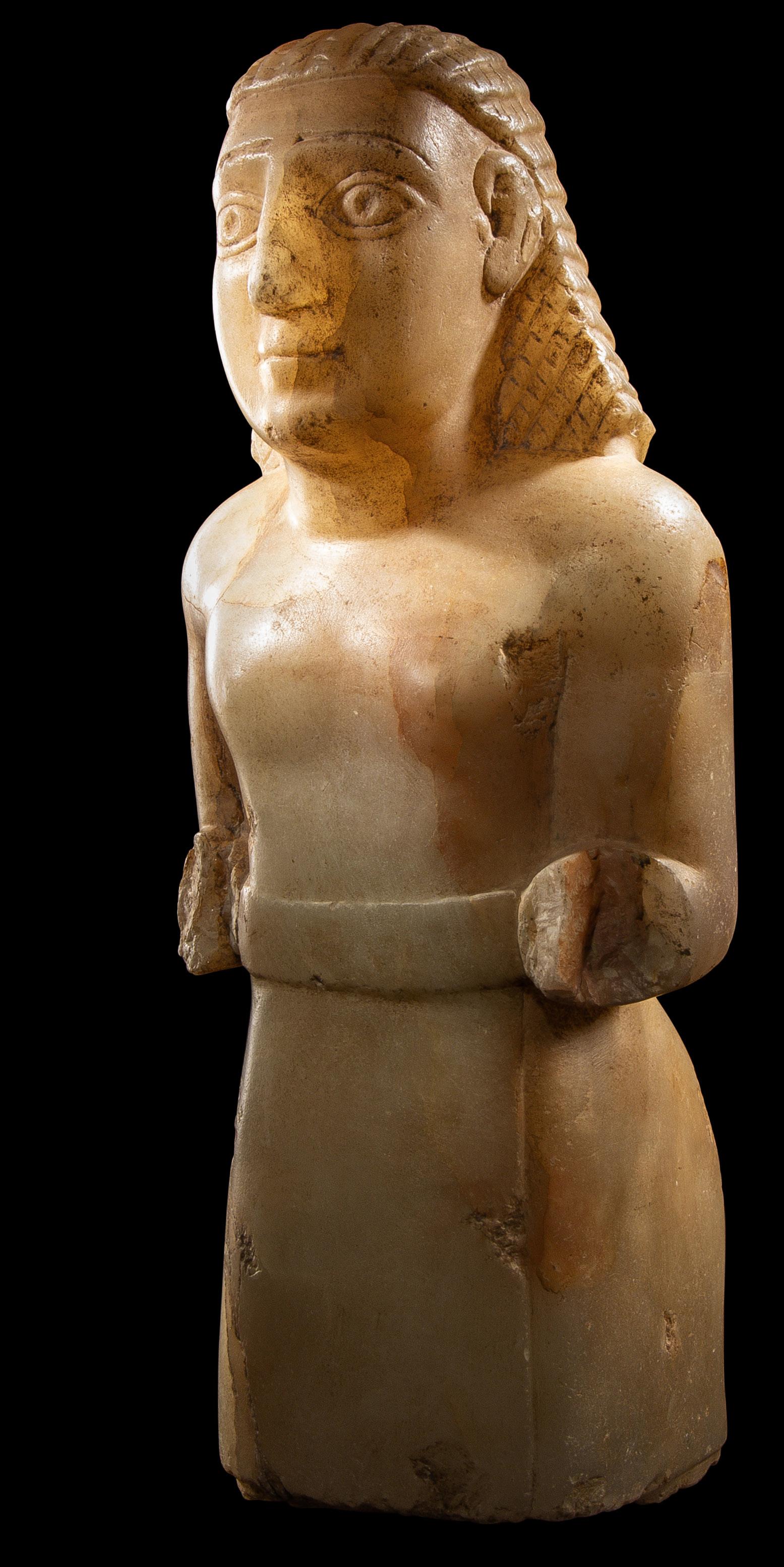

156
Three Bactrian Alabaster Bowls
Circa 3rd-2nd Millennium B.C.
Diameter of largest 12.5 cm (5 inches).
Provenance:
Haji Baba, London.
Ira & Larry Goldberg Auction, Los Angeles, Ancient and World Coins, 29 October 2009, Lot 845.
$1,000 - 2,000

157
A Phoenician Agate or Carnelian Seashell
Circa 8th Century B.C.
Length 8 cm (3 1/8 inches).
Provenance: Private Collection, Germany, mid 1970s. Art Market, London, 2013-2014. [Art Loss Register no. S00083615]
$3,000 - 5,000

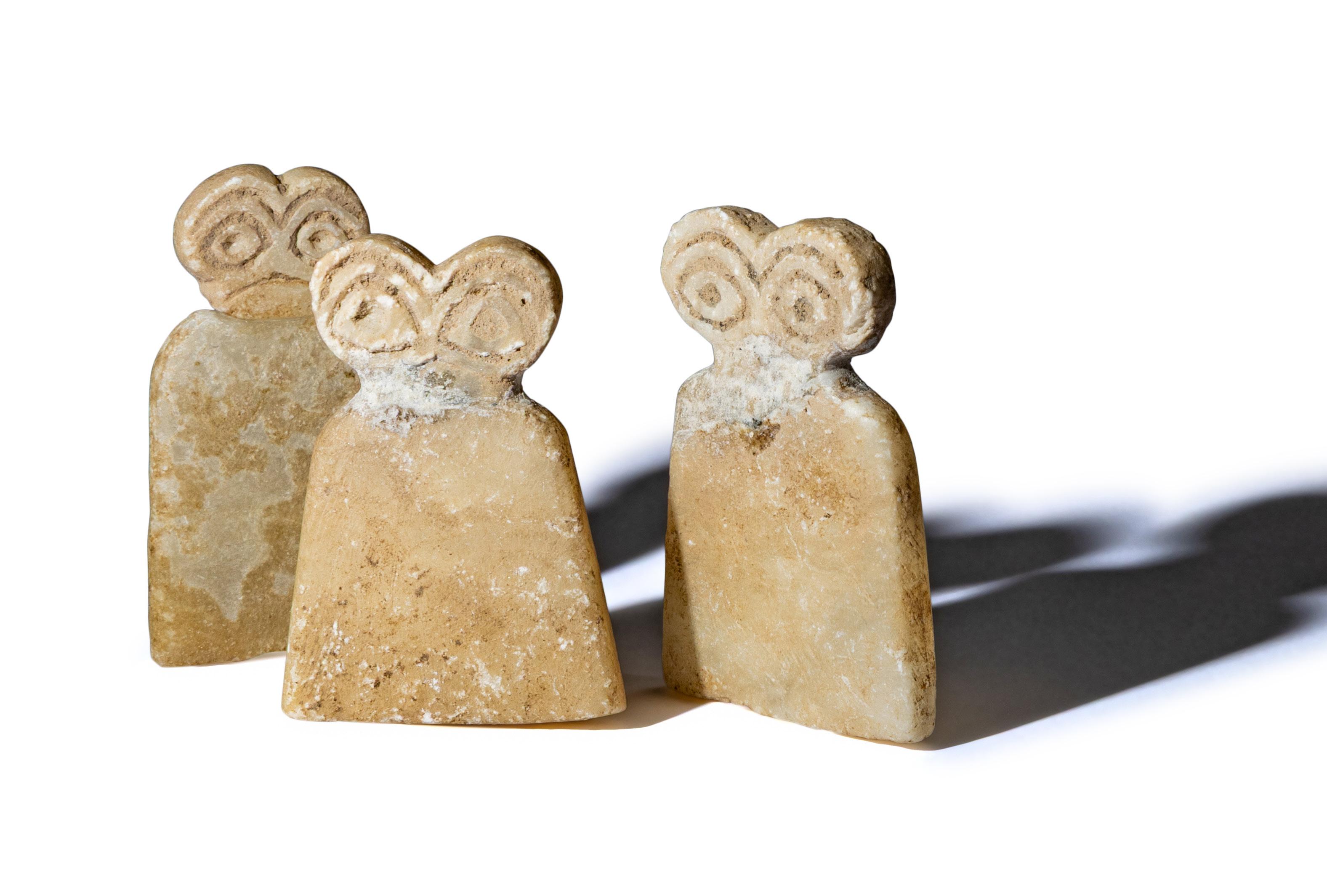
159
A Central Asian Alabaster Mouflon
Circa Mid 3rd-Early 2nd Millennium B.C. Length 12 cm (4 3/4 inches).
Provenance: Private Collection, Europe, prior to 1988. Christie’s, New York, Antiquities, 4 June 2008, Lot 68.
$10,000 - 15,000



160
A Sumerian Copper Bowl with a Procession of Animals Late Uruk-Jemdat Nasr Period, Circa 3300-2900 B.C. Height 8.5 cm (3 3/8 inches).
Provenance:
Charles Sancey, Switzerland, acquired 1940-1950; thence by descent to Monique Sancey.
Art Market, Switzerland, acquired from the above in 1988. Phoenix Ancient Art, Geneva, 2007 (Phoenix Ancient Art, vol. 1, pp. 38-39, no. 22)
Christie’s, New York, Antiquities, 9 December 2015, Lot 100.
$25,000 - 35,000






161
A Late Roman or Byzantine Mosaic with a Cow and Chicken Circa 4th Century A.D.
Frame 221.7 cm × 111.5 cm (87 1/4 inches × 43 7/8 inches).
Property from a Private Collection
Provenance:
Civilizations Gallery, Dallas, Texas, prior to 1990. Holly Hunt Design Studio, Chicago.
Private Collection, Chicago, acquired from the above, 16 August 1990.
$10,000 - 15,000



162
An Egyptian Carnelian Wadjet Set in a gold swivel ring
Late Period, 26th-30th Dynasty, 664-343 B.C.
Width 2.4 cm (1 inch); Ring size 8 3/4; High karat gold; 6.02 grams.
Provenance:
Art Market, New York. Private Collection, Bergen County, New Jersey, formed in the 1970s-2000s.
$1,000 - 2,000

163
A Phoenician or Cypriot Gold and Carnelian Swivel Ring with Two Scorpions
Circa 6th-5th Century B.C.
Width 2.5 cm (1 inch); Ring size 2 1/4; High karat gold; 9.99 grams.
Provenance:
Private Collection, United Kingdom, 1990s. Art Market, London; where acquired by the present owner.
$2,500 - 3,500
164
An Etruscan Carnelian Scarab with Warrior on Horseback and a Griffin
Set in a 19th Century gold swivel fob
Circa 4th Century B.C.
Total height 3.3 cm (1 1/4 inches); 10 karat gold; 8.02 grams.
Provenance: Private Collection, Europe, Late 19th Century. [based on mounting technique]
Private Collection, United Kingdom, since the 1990s.
$2,000 - 3,000



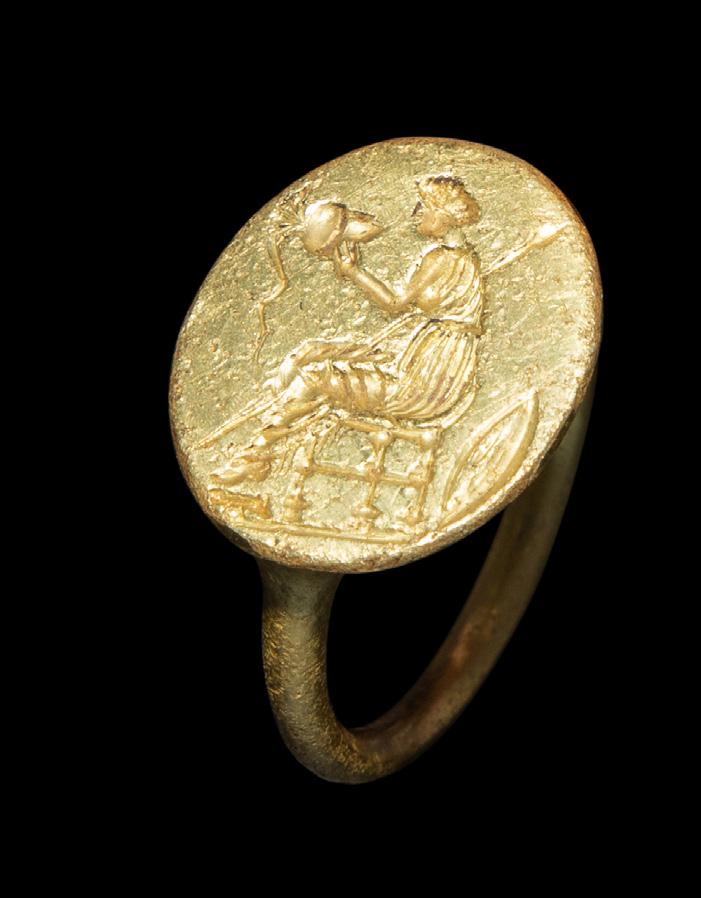

165 An Italic Carnelian Intaglio with Perseus Set in a Late Roman gold ring Circa 2nd-1st Century B.C.; Ring Circa 4th Century A.D.
Width 2.1 cm (3/4 inch); Ring size 4; High karat gold; 7.79 grams.
Provenance: Art Market, United Kingdom. Private Collection, United Kingdom, 2000s.
$1,500 - 2,500
166 A Greek Gold Finger Ring with Athena Circa 4th Century B.C.

Width 2.2 cm (7/8 inch); Ring size 8; High karat gold; 8.63 grams.
Property from the Collection of Mr. Felix Brejente, Schaumburg, Illinois
Provenance: Ira & Larry Goldberg Auction, Los Angeles, Space Memorabilia, Sports, Jewelry and Collectibles, 31 July-1 August 2025, Lot 131.
$2,000 - 3,000
168 A Roman Gilt-Bronze and Garnet Ring Circa 1st-4th Century A.D.
Width 3.5 cm (1 3/8 inches); Ring size 8; 33.64 grams.
Provenance: Private Collection, New York, acquired 1980s. with Ariadne Galleries, New York, 1991 (Treasures of the Dark Ages in Europe, p. 57, no. 93).
$1,000 - 2,000
167
A Hellenistic Gold Filigree Ring Circa Late 4th Century B.C. Width 2.4 cm (1 inch); Ring size 7; High karat gold; 8.85 grams.
Provenance: George Lamber, prior to 1978. Private Collection, London. Timeline Auctions, London, Antiquities Day 1, 6 December 2016, Lot 535. [accompanied with a laboratory examination report]
$10,000 - 15,000

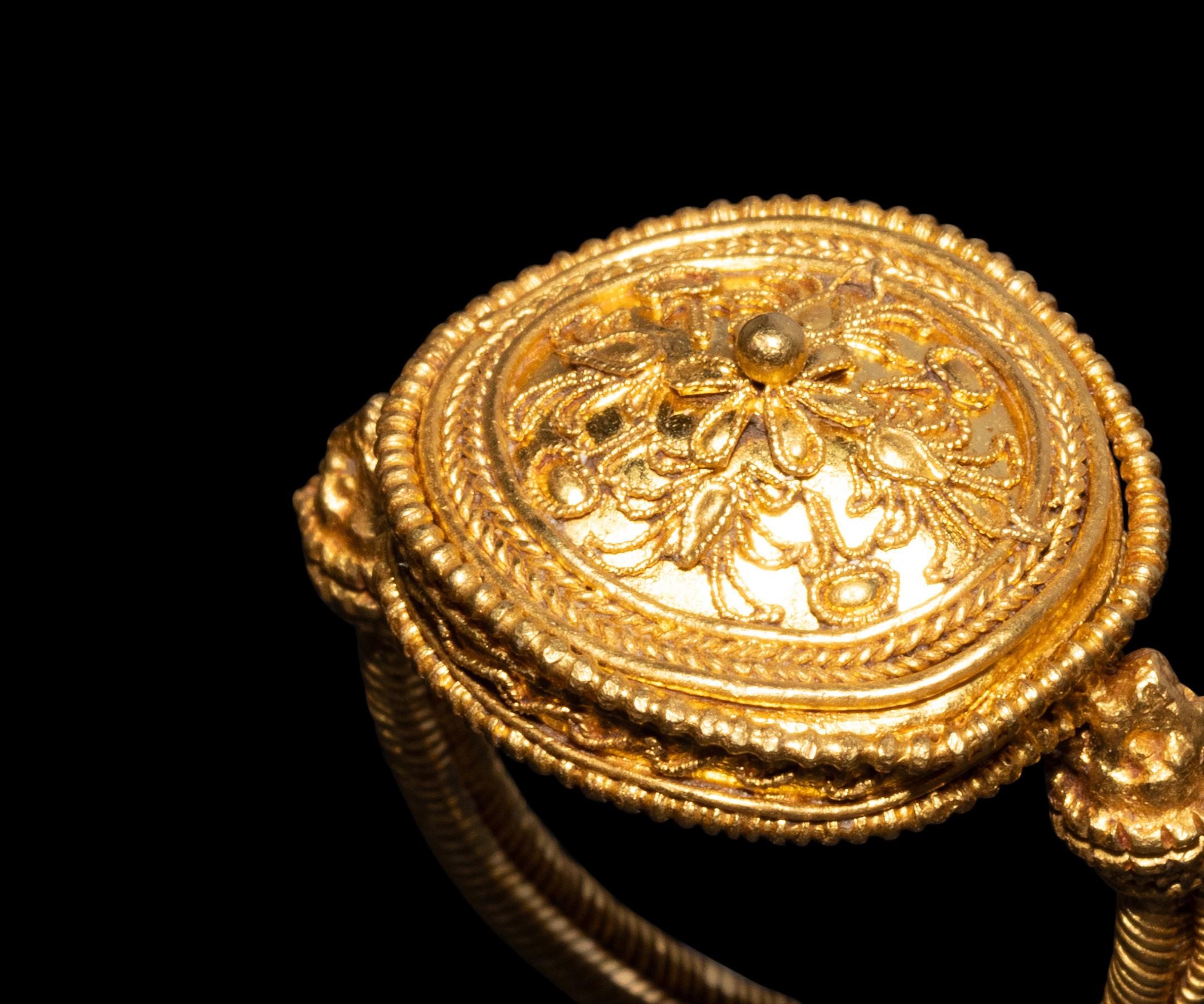

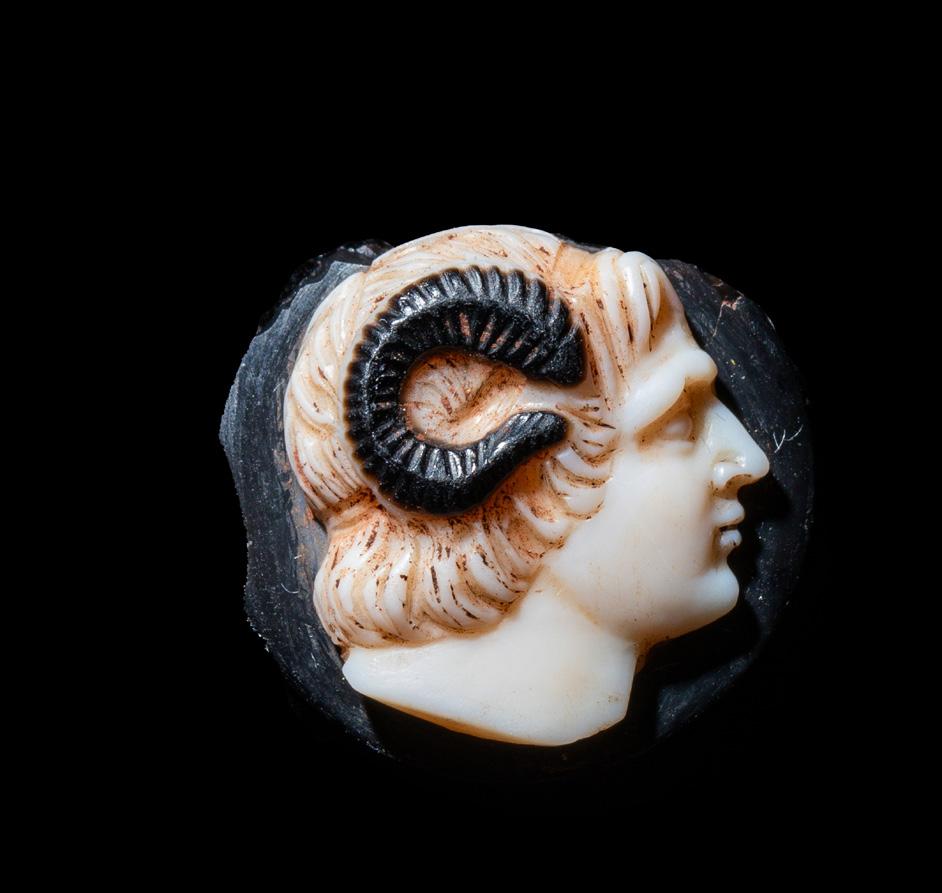


169
An Eastern Roman Sardonyx Cameo with Head of Alexander the Great Circa 2nd Century A.D.
Height 2 cm (3/4 inch).
Provenance:
Private Collection (Mr. R.), Europe, 1990s. Private Collection, United Kingdom, acquired from the above.
$4,000 - 6,000
170
A Roman Prasium Fragmentary Intaglio with Eros on a Seahorse
Set in a 19th century gilt-silver ring
Circa 2nd Century A.D.
Width 2.8 cm (1 1/8 inches); Ring size 9; 20.11 grams.
Provenance:
Private Collection, Europe, Late 19th Century. [based on mounting technique]
Art Market, London.
Private Collection, United Kingdom, acquired from the above.
$1,500 - 2,500
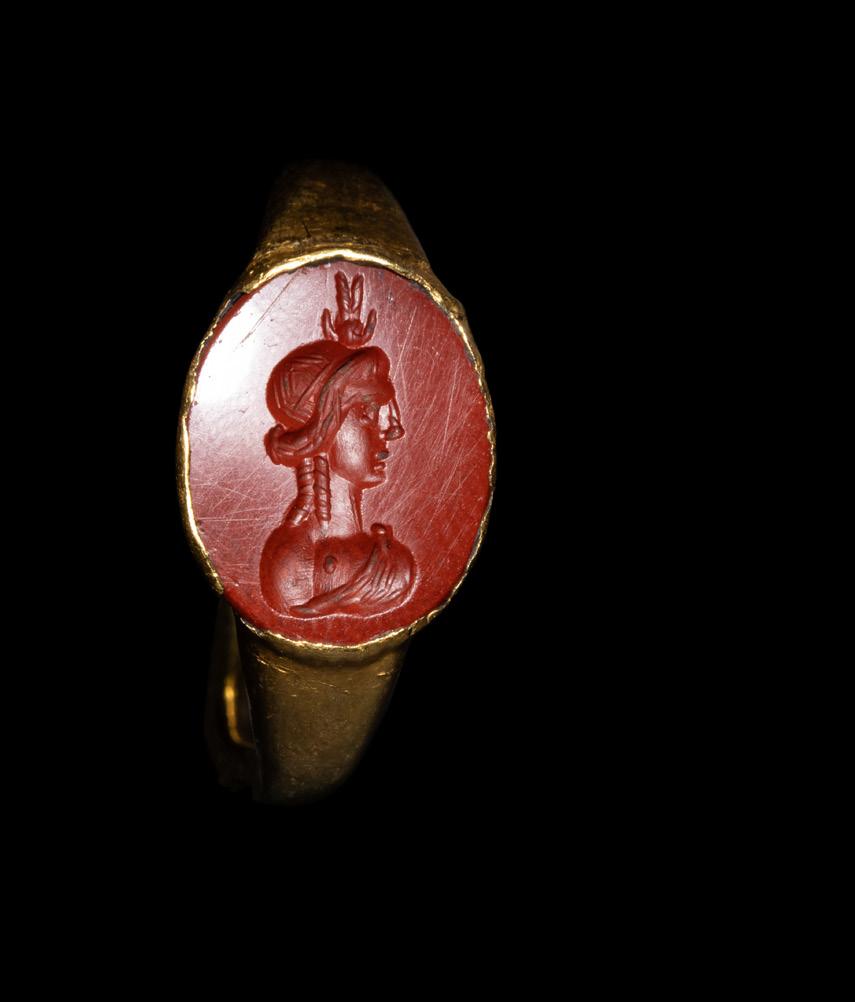
171
A Roman Gold and Jasper Ring with IsisAphrodite
Circa 1st-2nd Century A.D.
Width 2.2 cm (7/8 inch); Ring size 6; High karat gold; 3.76 grams.
Provenance:
Private Collection, United Kingdom, 2000s. Art Market, London.
Private Collection, United Kingdom.
$3,000 - 5,000
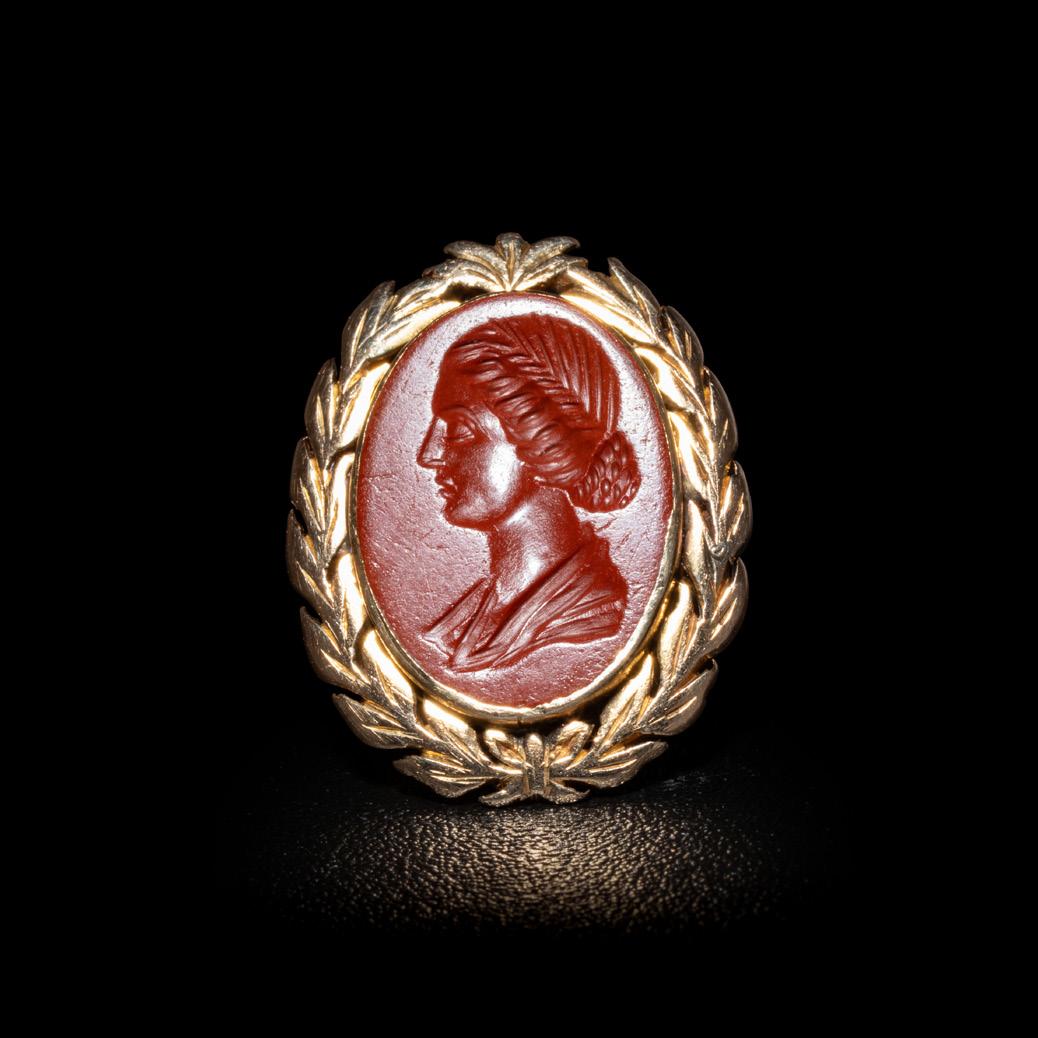
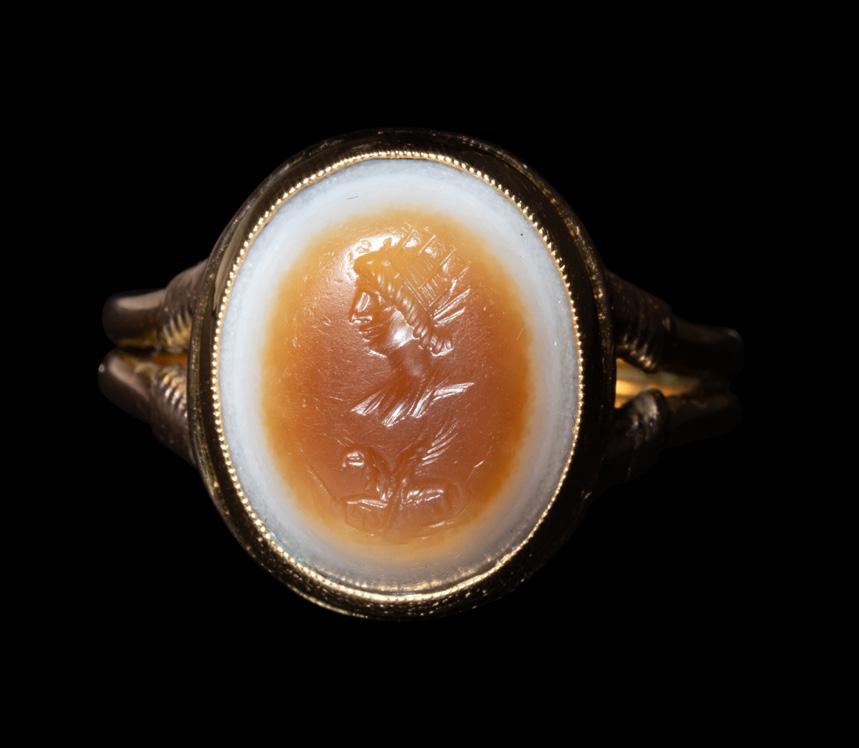
172
A Roman Red Jasper Intaglio with Bust of a Matrona
Set in a 19th Century gold ring
Circa 2nd-3rd Century A.D.
Width 2 cm (3/4 inch); Ring size 6 1/2; High karat gold; 4.85 grams.
Provenance:
Private Collection, Europe, 19th Century. [based on mounting technique]
Art Market, United Kingdom.
Private Collection, United Kingdom; acquired from the above.
$2,000 - 3,000
173
A Roman Agate Intaglio with Helios and a Griffin
Set in a 19th Century gold ring
Circa 2nd Century A.D.
174
A Roman Gold and Nicolo Ring with Mars
Circa 3rd Century A.D.
Width 2.9 cm (1 1/8 inches); Ring size 8; High karat gold; 10.92 grams.

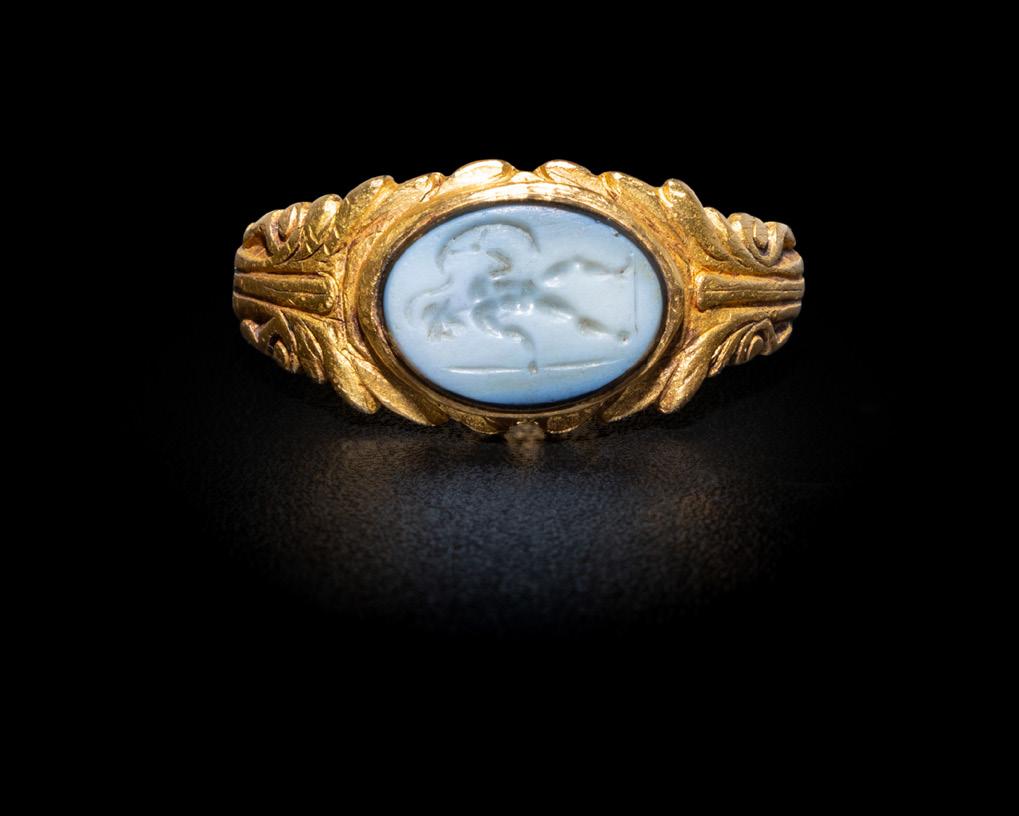
Width 2.3 cm (7/8 inch); Ring size 9 1/4; 14 karat gold; 7.14 grams.
Provenance:
Private Collection, Europe, 19th Century. [based on mounting technique]
Art Market, United Kingdom.
Private Collection, United Kingdom, acquired from the above.
$1,500 - 2,500
Property from a Florida Private Collection
Provenance:
Paul Munro Walker Collection, Bournemouth, Hampshire, United Kingdom, acquired 1970-1990. Alexander James Cotton, Brockenhurst, United Kingdom, 2000s.
St. James’s Ancient Art, London; where acquired by the present owner.
This solid gold ring is set with a nicolo intaglio depicting Mars, the Roman god of war. The engraving is executed with striking realism, rendering the god’s features with precision and depth. The ring remains in its original state, unsized and unrestored, preserving both the integrity of the setting and the power of its martial imagery.
$4,000 - 6,000
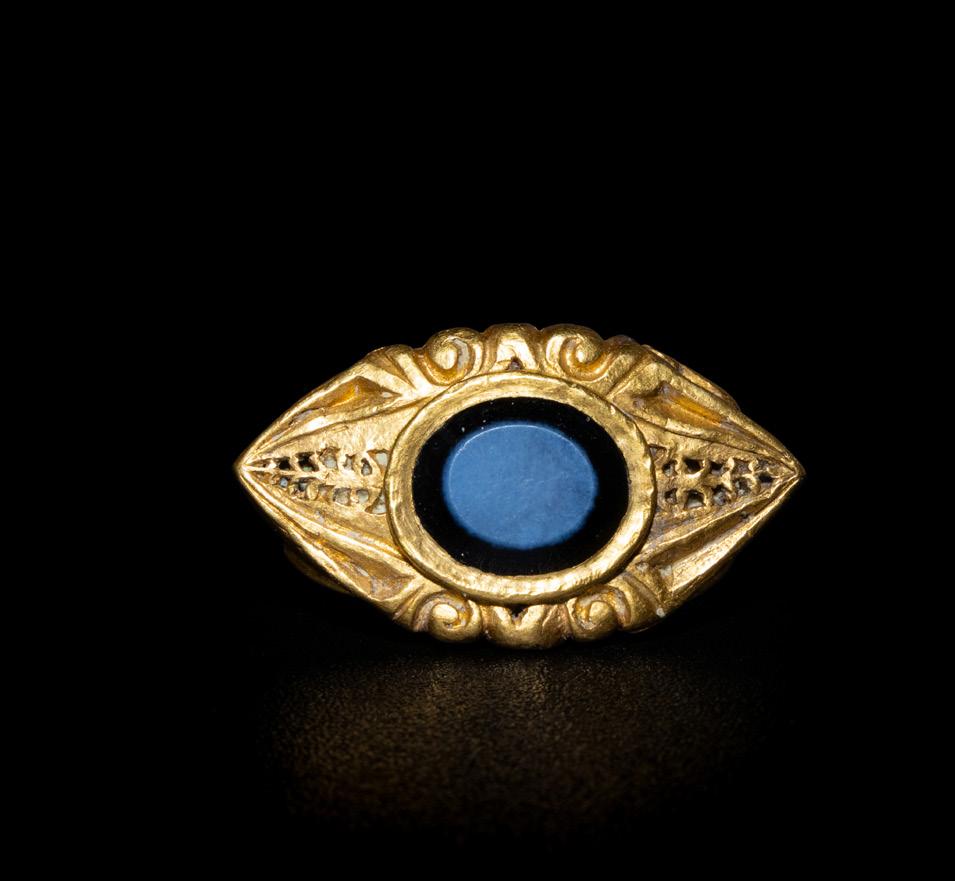


175
A Roman Gold and Nicolo Ring
Circa 3rd Century A.D.
Width 3.5 cm (1 3/8 inches); Ring size 4 1/2; High karat gold; 17.44 grams.
Property from a Florida Private Collection
Provenance:
Peter Szuhay, London; where acquired by the present owner in the 1990s.
Formed from a thick gold sheet rather than the more common solid cast, this late Roman ring is a rare hollow example, notable for its preservation and the precision of its detailing. Surviving all-original sheet rings of this type are exceptional, as most are encountered in heavier cast form. The broad hoop supports an unengraved nicolo gem, its layered blue and black surface evoking the apotropaic “eye” believed to ward off evil.
$6,000 - 8,000
176
A Roman Carnelian Intaglio with an Emperor Set in an 18th-19th Century gold ring
Circa 1st-2nd Century A.D.
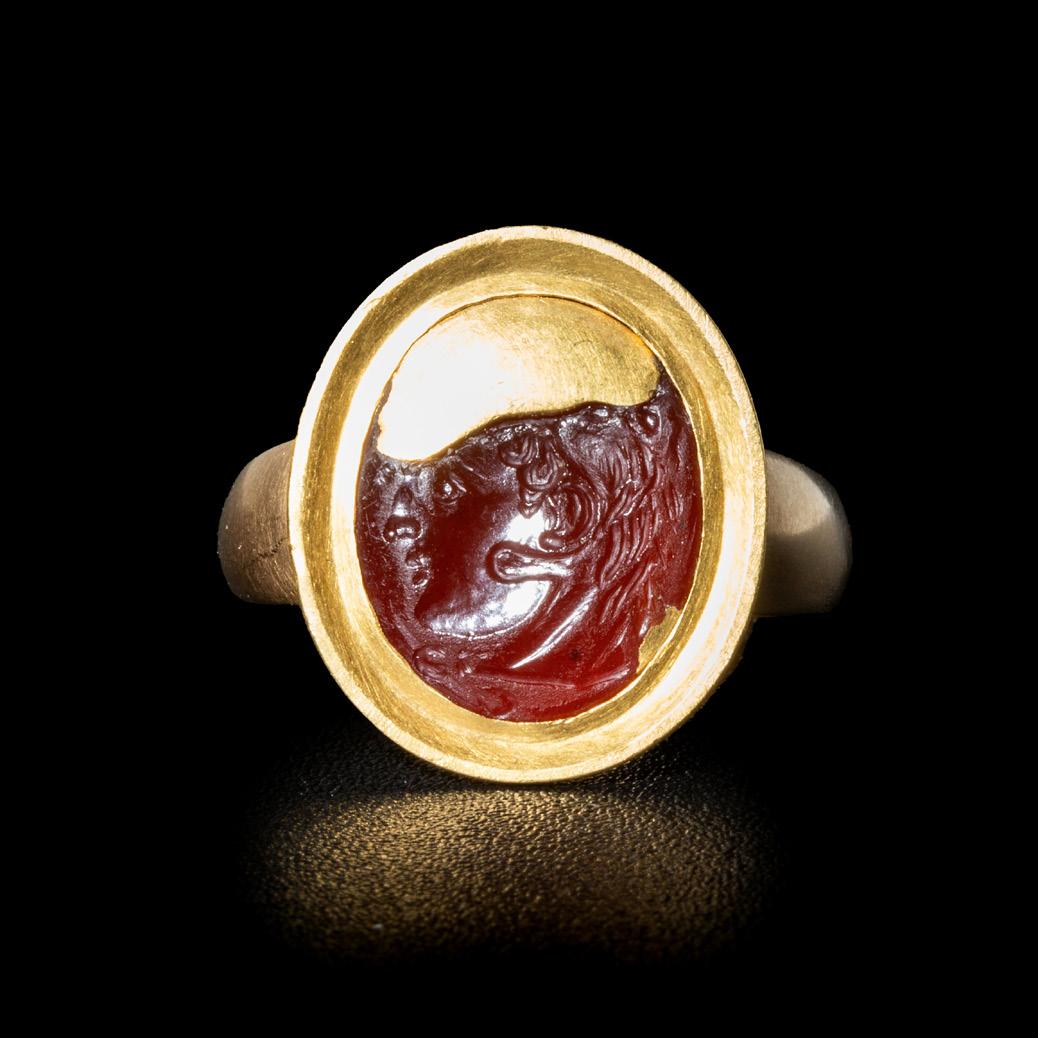
Width 2 cm (3/4 inch); Ring size 6 1/2; High karat gold; 5.28 grams.
Provenance:
Private Collection, Europe, 18th-19th Century. [based on mounting technique]
Private Collection, Europe.
$4,000 - 6,000
177
A Roman Carnelian Fragmentary Intaglio with Alexander the Great as Hercules
Set in a gold ring
Circa 1st-2nd Century A.D.
Width 2.5 cm (1 inch); Ring size 9; High karat gold; 13.87 grams.
Provenance:
Private Collection (Mr. C.), 1920s-1930s.
Sir S. Kennedy, acquired in the Mid 1970s-1980s.
Mr. M. Brown, London; where acquired by the present owner, 15 September 2017.
$4,000 - 6,000


178
A Late Roman Gold and Carnelian Ring with an Ant Carrying an Ear of Wheat
Circa Late 4th–Early 5th Century A.D.
Width 2.5 cm (1 inch); Ring size 9 3/4; High karat gold; 8.75 grams.
Property from a Florida Private Collection
Provenance:
Art Market, Germany.
Hanns-Ulrich Haedeke (former Curator of the Klingenmuseum), Solingen, Germany, acquired from the above in the early 1960s; thence by descent.
Jan Pareyn, Ghent, Belgium; where acquired by the present owner, 8 April 2024.
The carnelian intaglio is engraved with an ant carrying an ear of wheat, a motif drawn from Aesop’s fable of the industrious ant, later retold in Latin by Phaedrus at the dawn of the Christian era. In Roman thought, the image symbolized foresight, labor, and prosperity, making it especially suited to a ring of personal adornment.
$4,000 - 6,000
179
A Late Roman or Byzantine Red Jasper Intaglio with a Monogram
Set in a 19th Century gold ring
Circa 4th Century A.D.
180
A Byzantine Gold Tremissis of the Empress Aelia Verina
Set in a gold ring
Constantinople, Reign of Emperor Leo I, 457-484 A.D.


Width 2 cm (3/4 inch); Ring size 6 1/2; High karat gold; 6.95 grams.
Provenance:
Private Collection, Europe, 19th Century. [based on mounting technique]
Art Market, United Kingdom.
Private Collection, United Kingdom, acquired from the above.
$1,500 - 2,500
Width 2 cm (3/4 inch); Ring size 5 1/2; High karat gold; 3.47 grams.
$1,200 - 1,800



181
A Migration Period Gold and Spessartine Garnet Ring
Circa 5th Century A.D.
Width 2.7 cm (1 1/8 inches); Ring size 8 3/4; High karat gold; 9.44 grams.
Property from a Florida Private Collection
Provenance:
Hanns-Ulrich Haedeke (former Curator of the Klingenmuseum), Solingen, Germany, acquired in 1967; thence by descent.
Jan Pareyn, Ghent, Belgium; where acquired by the present owner, 24 October 2023.
This gold ring combines late Roman design with the emerging styles of the Migration Period. The split shoulders and curled terminals recall earlier Roman openwork rings, while the bold box setting with its star-shaped garnet reflects 5th-century taste. Closely related to the “Brancaster type” studied in Roman Britain and Gaul, it belongs to a corpus of early medieval jewelry in which sliced, orange-hued garnets were beveled to catch the light, imbuing it with status and meaning among post-Roman elites.
$3,000 - 5,000
182
A Sicilian Electrum and Onyx Signet Ring of a Templar Grand Master
Circa 13th Century A.D.
Width 2.2 cm (7/8 inch); Ring size 11 1/2; 13.47 grams.
Property from a Florida Private Collection
Provenance: Mrs. Gemma Torta, Lady in waiting to Princess Elana of Savoy (1873-1952). Elana was also Queen of Italy from 1900 to 1946, and resided in Superga, Italy; thence by descent to Giulio Torta.
Acquired by the present owner from the above.
This ring is set with a dark onyx intaglio, engraved with the Templar war cross composed of four arrows, each flanked by a right angle and a compass, which were both symbols closely associated with the Order of the Knights Templar. Templar crosses are engraved on the shoulders, with opposing double “S” motifs on the shank representing infinity, while a further stylized cross is placed on the underside of the bezel to touch the wearer’s skin, signifying divine protection.
Fashioned in electrum, a material rarely permitted within the Order, such a ring would have been reserved for a high officer, such as a Grand Master.
$6,000 - 8,000

183
An Etruscan Revival Gold and Rock Crystal Pendant
Height of pendant 2.5 cm (1 inch); High karat gold; 4.22 grams.
Provenance:
Private Collection, Europe, 18th-19th Century. [based on mounting technique]
Art Market, United Kingdom.
Private Collection, United Kingdom, acquired from the above.
$1,500 - 2,500
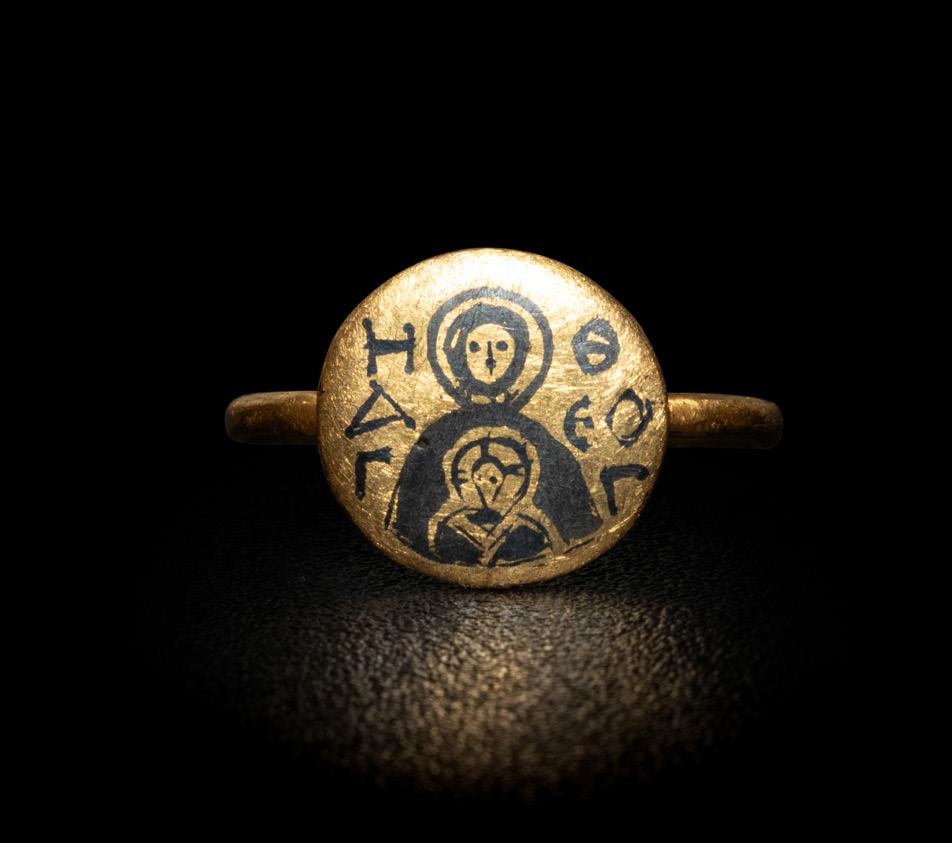

184
A Byzantine Gold and Niello Ring with Virgin and Child
Circa 5th-6th Century A.D.
Width 2.1 cm (7/8 inch); Ring size 5 3/4; High karat gold; 4.13 grams.
Provenance: Private Collection, United Kingdom, 1990s. Art Market, United Kingdom.
$3,000 - 5,000
185
A Roman Carnelian Intaglio with a Muse Set in a 19th Century gold ring
Circa 1st-2nd Century A.D.
Width 2.1 cm (7/8 inch); Ring size 8 1/4; 14 karat gold; 4.61 grams.
Provenance:
Private Collection, Europe, 18th-19th Century. [based on mounting technique]
Art Market, United Kingdom.
Private Collection, United Kingdom, acquired from the above.
$3,000 - 5,000
186
A Neoclassical Gold and Citrine Pendant with Cameo of an Emperor
Height of pendant 4.5 cm (1 3/4 inches); High karat gold; 28.04 grams.
Provenance: Art Market, United Kingdom.
Private Collection, United Kingdom, acquired from the above.
$3,500 - 5,500

